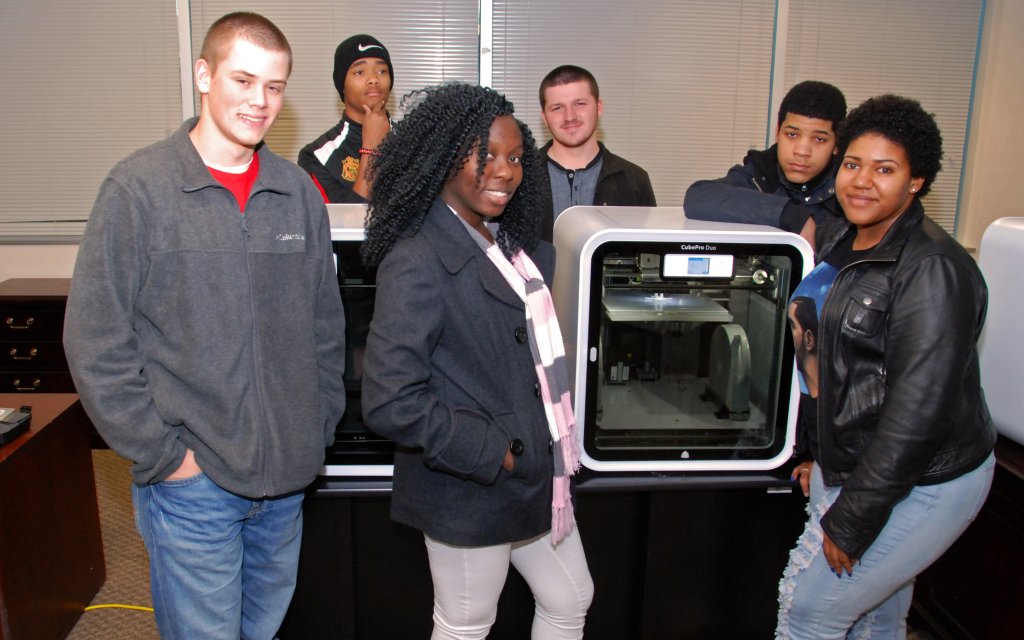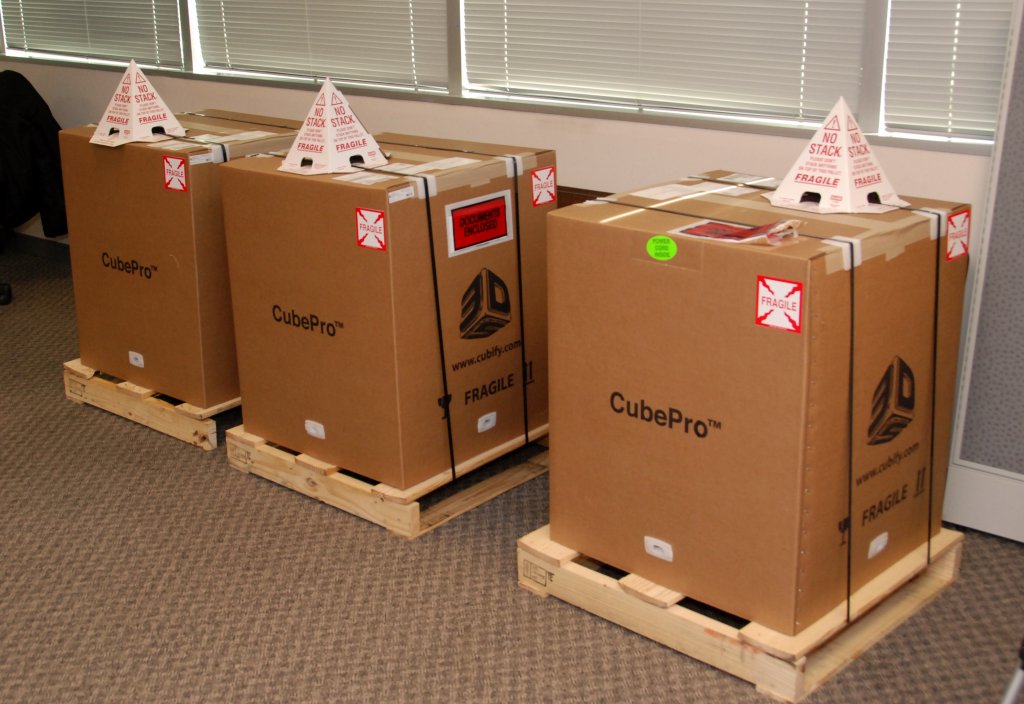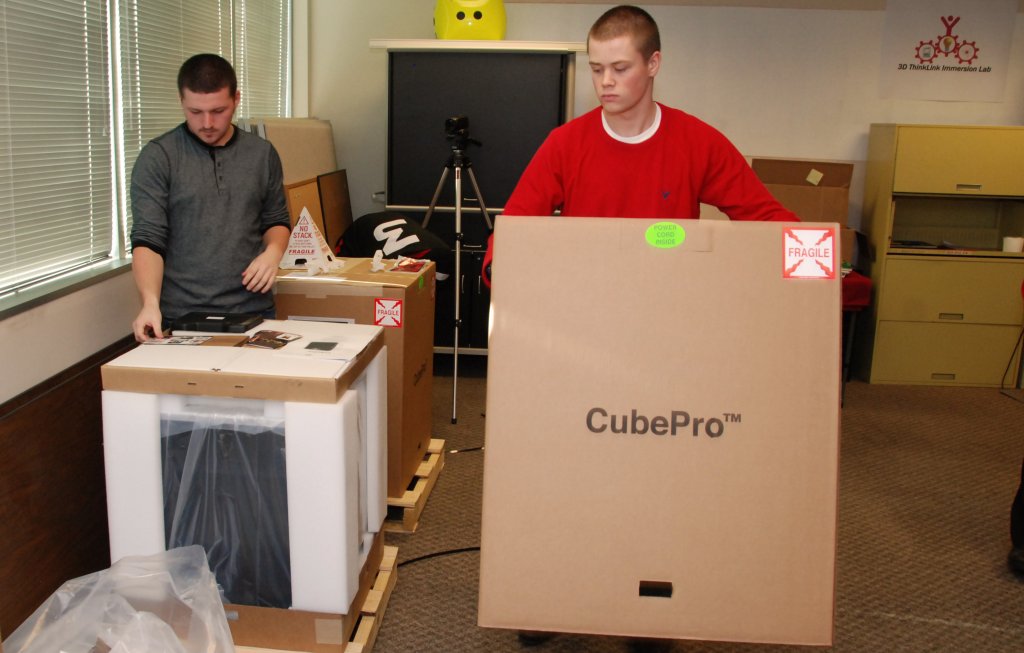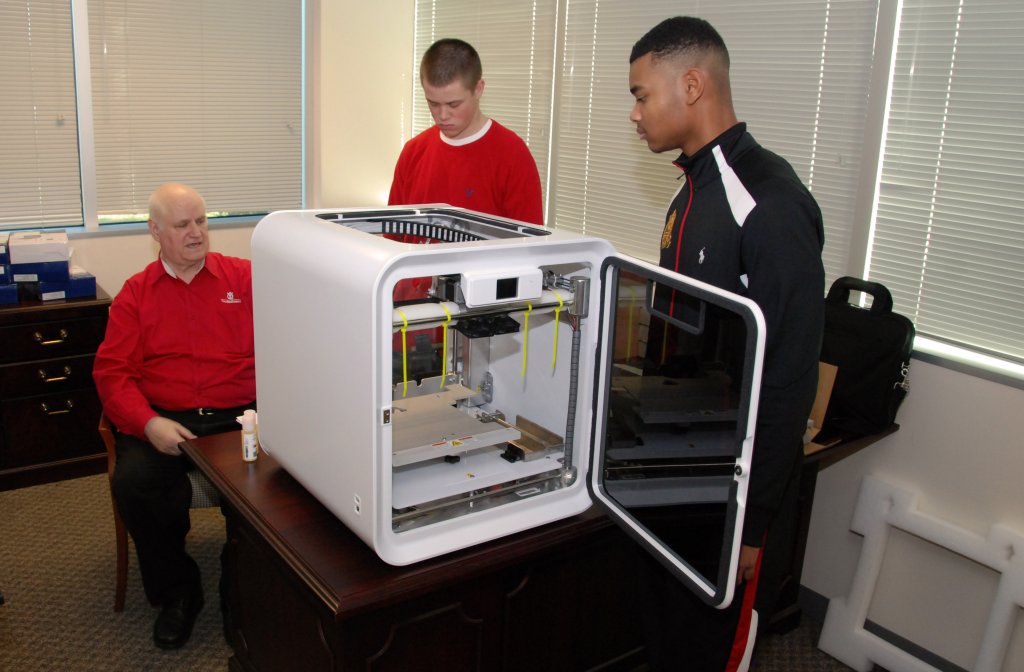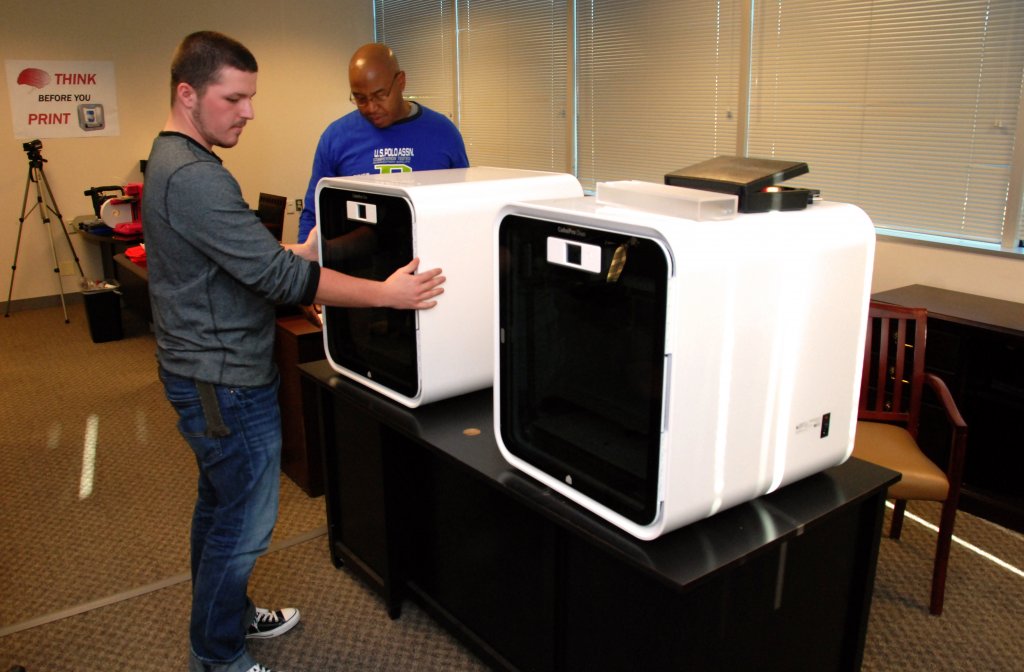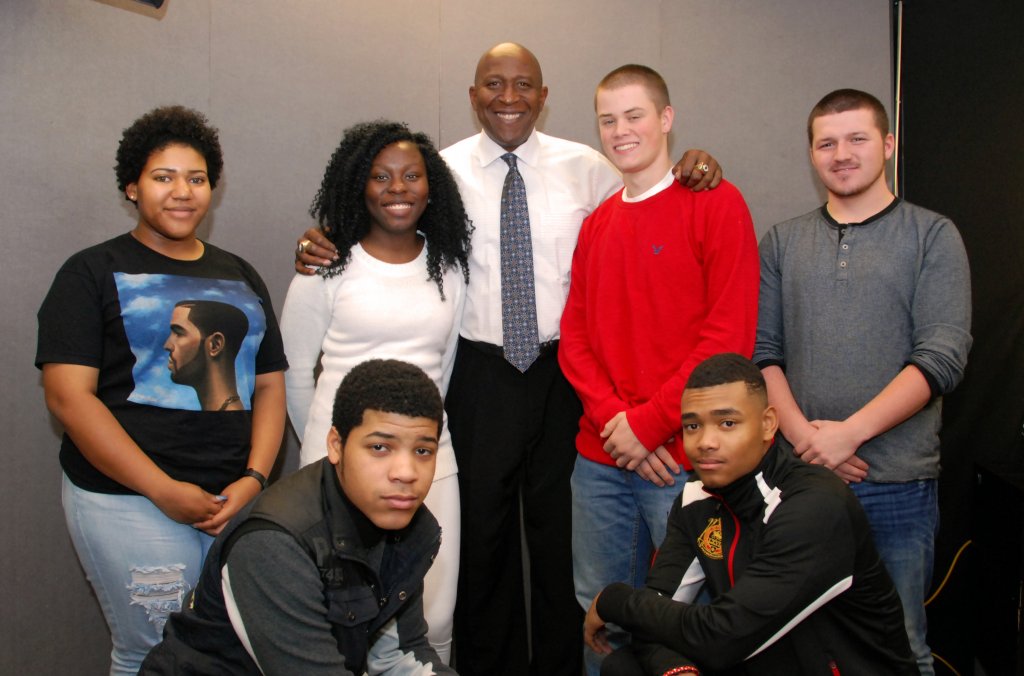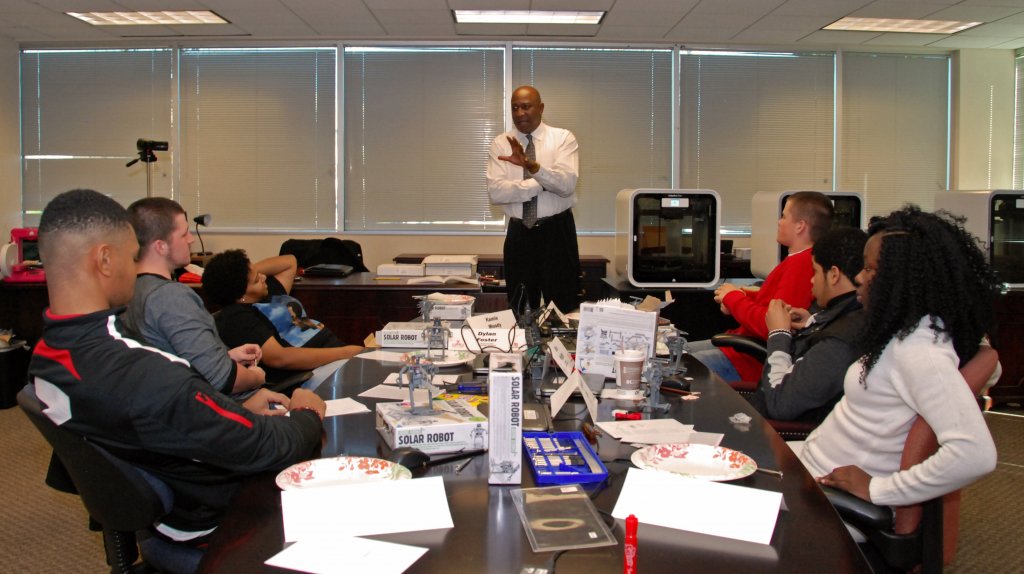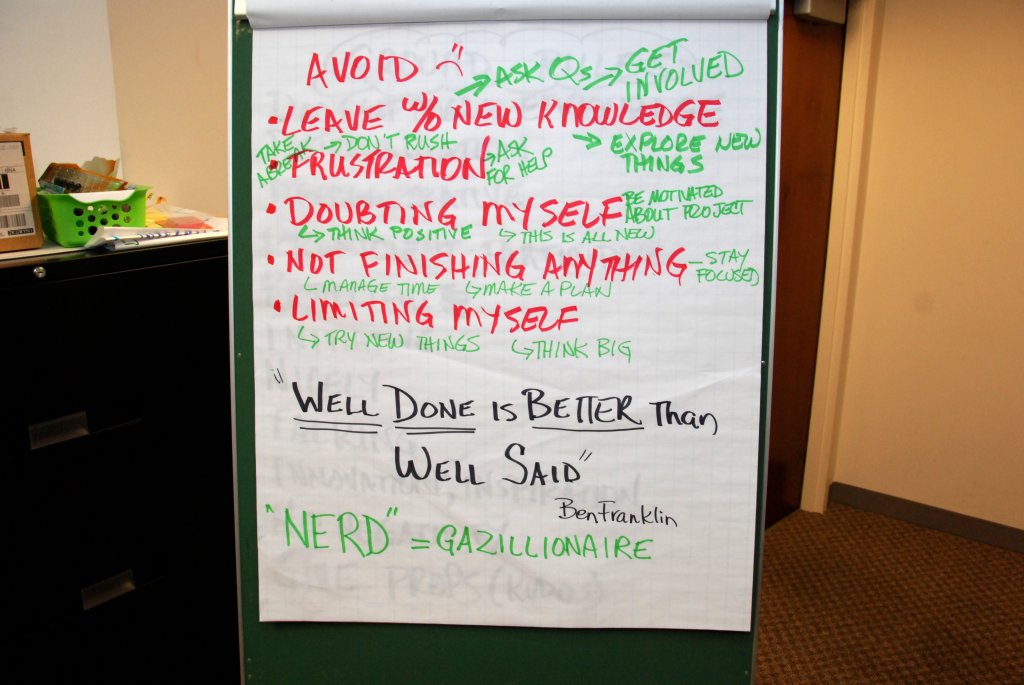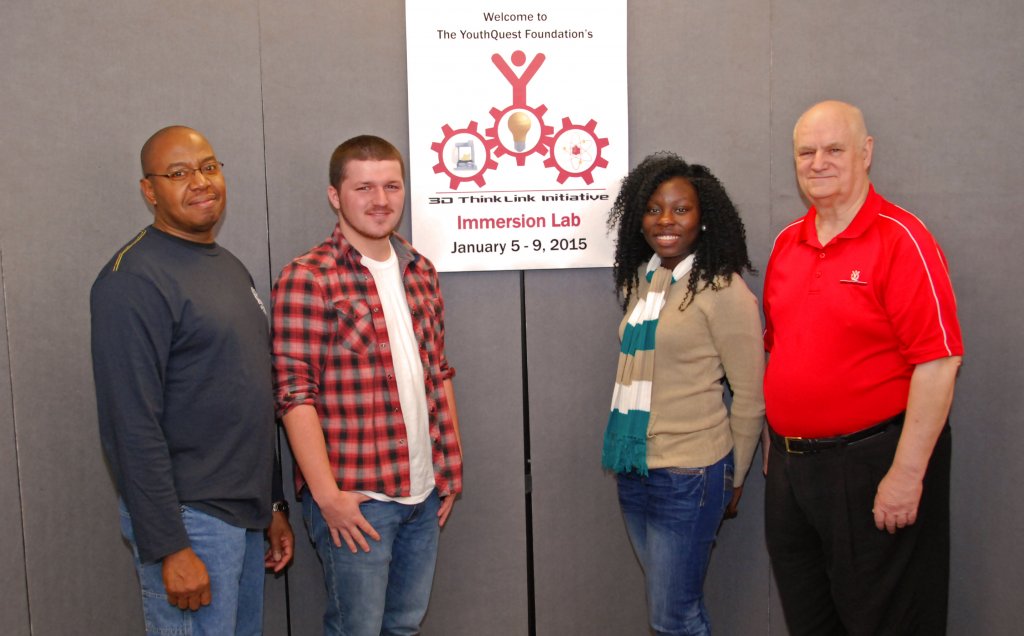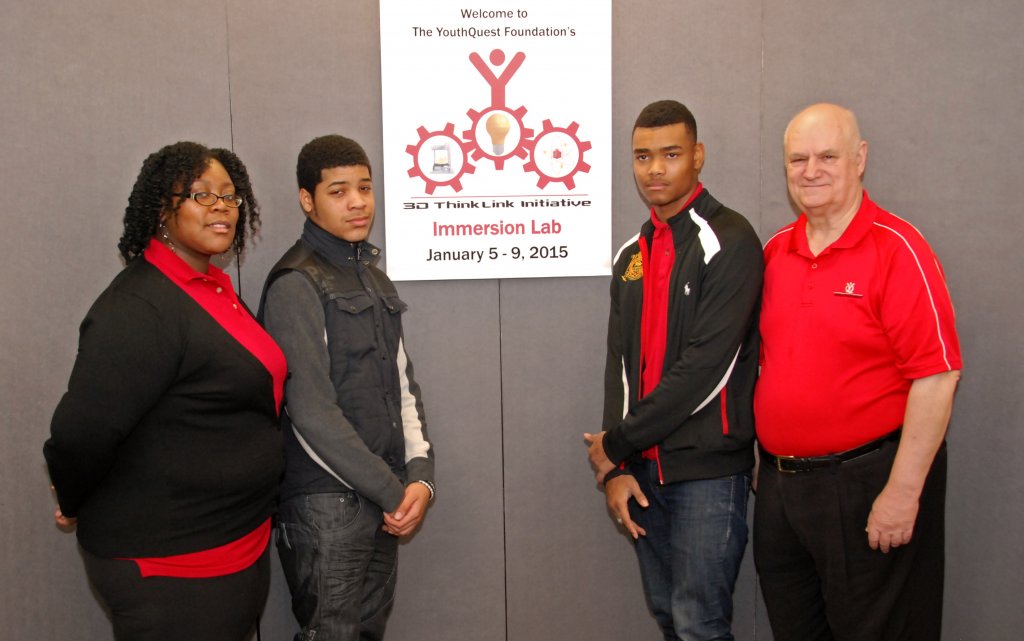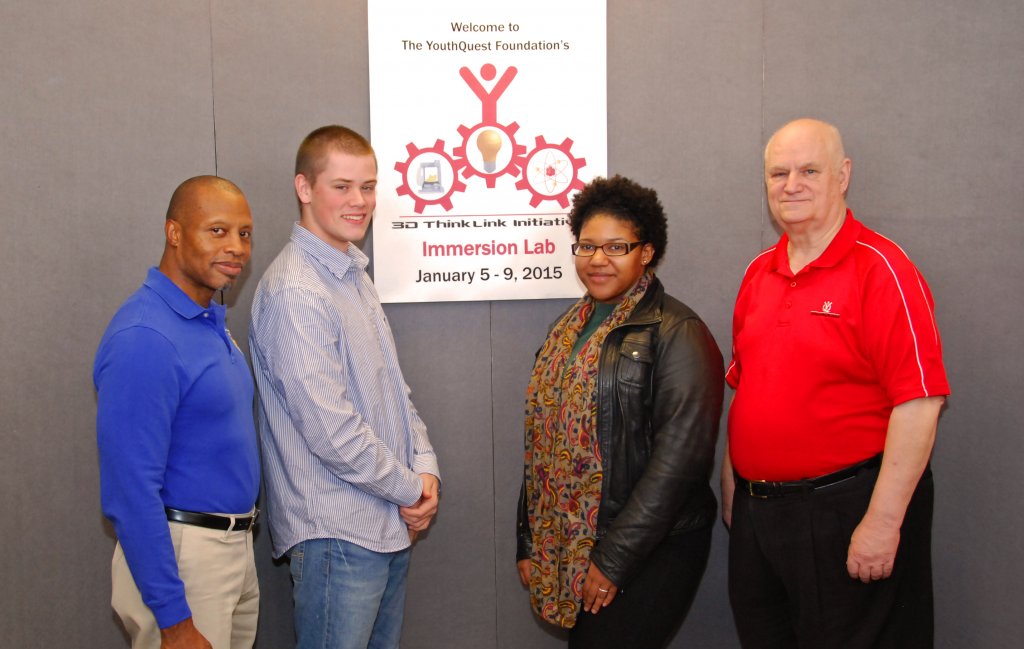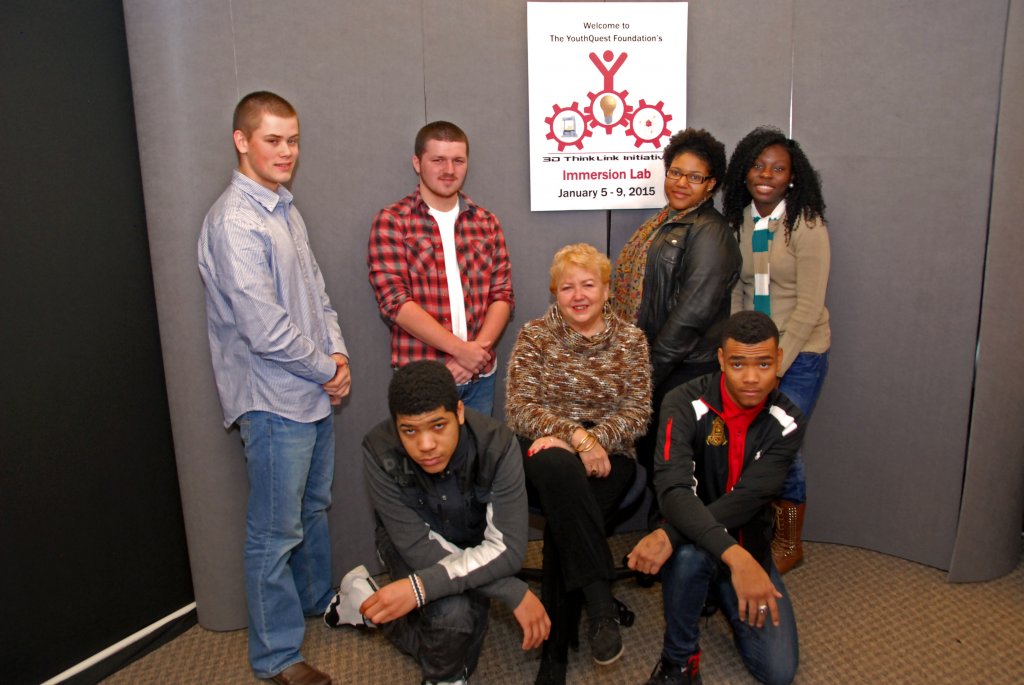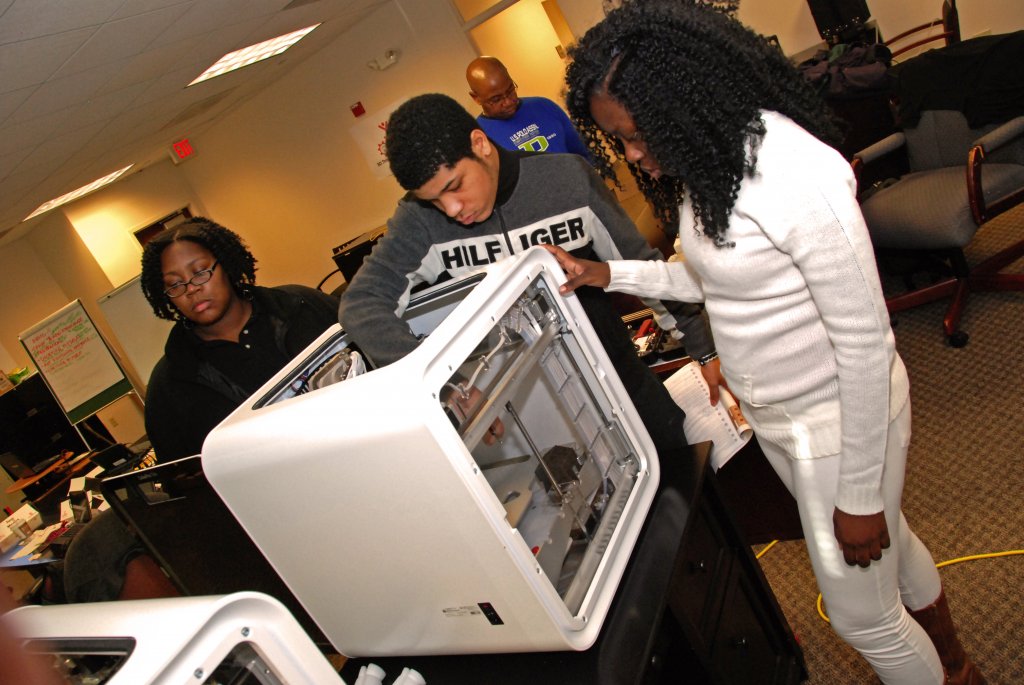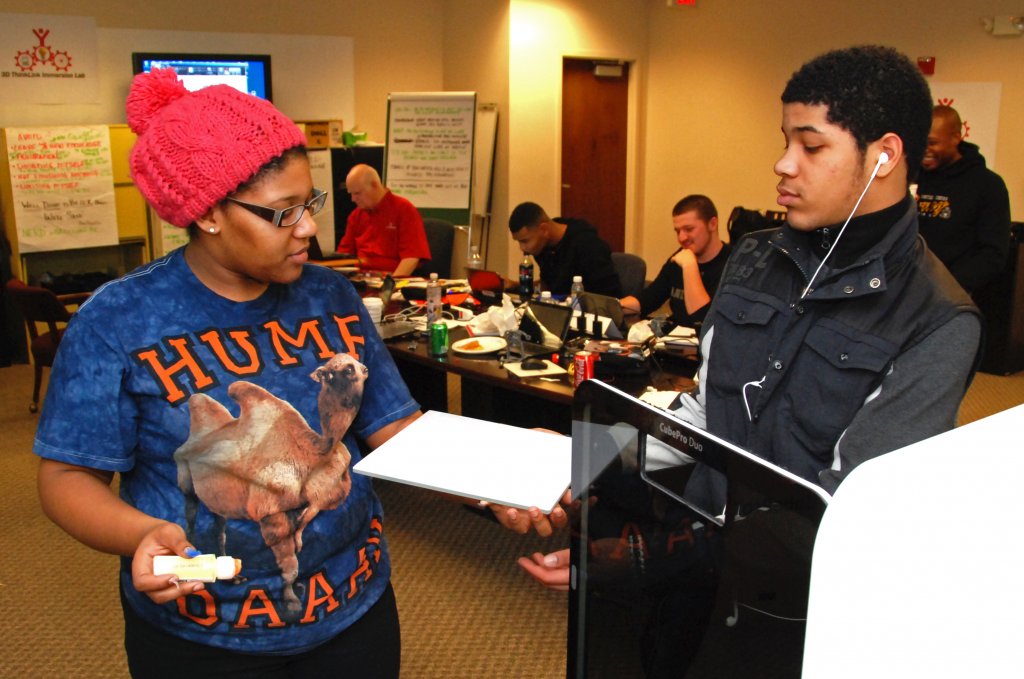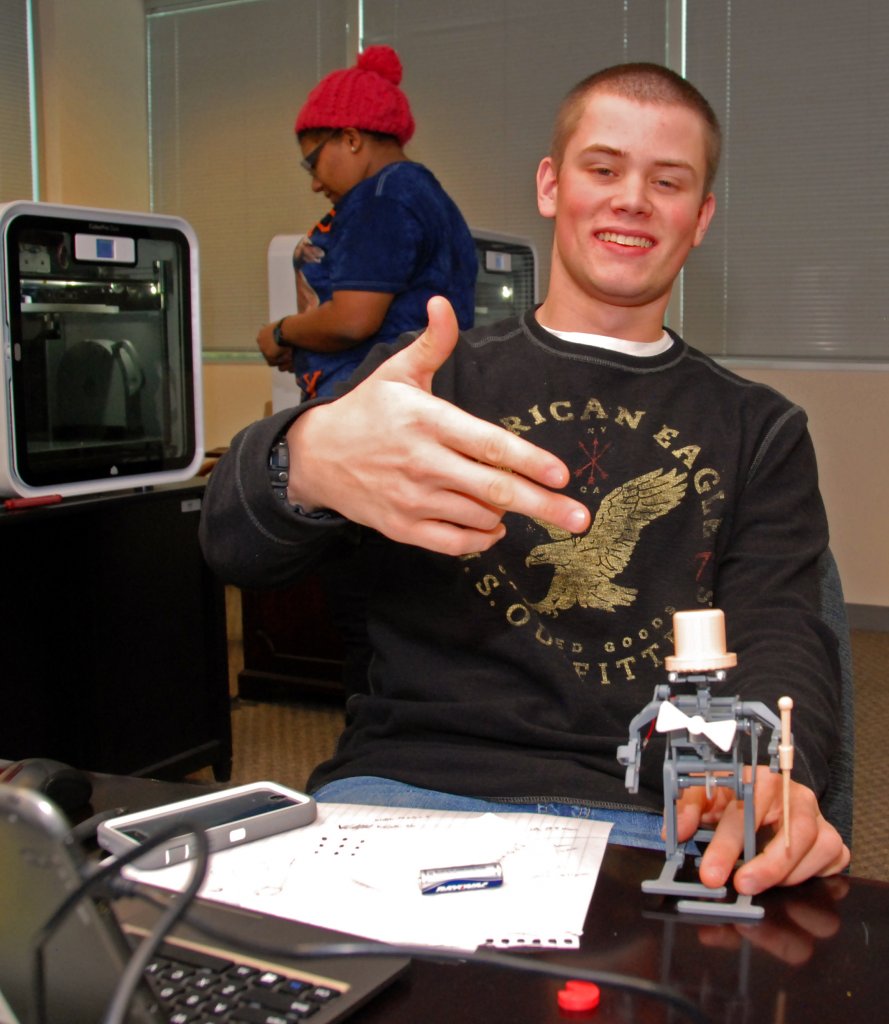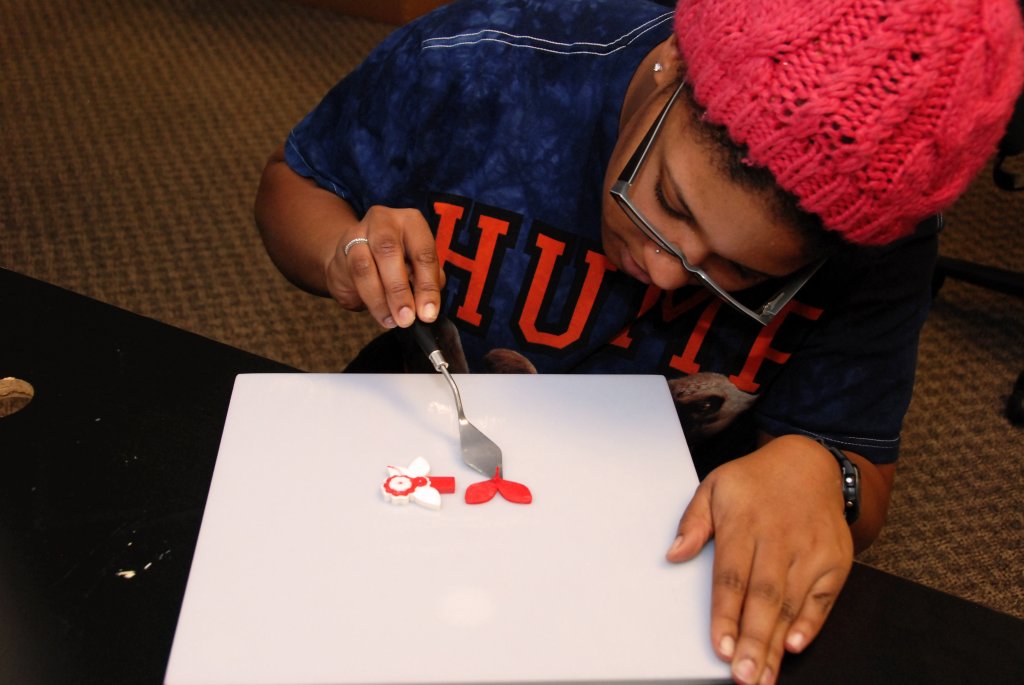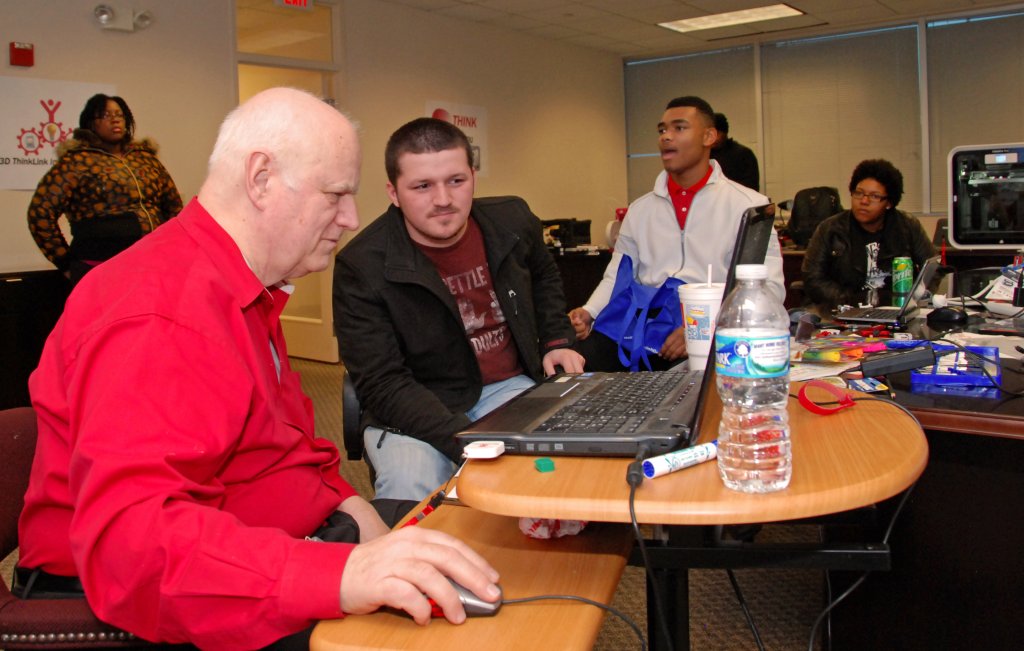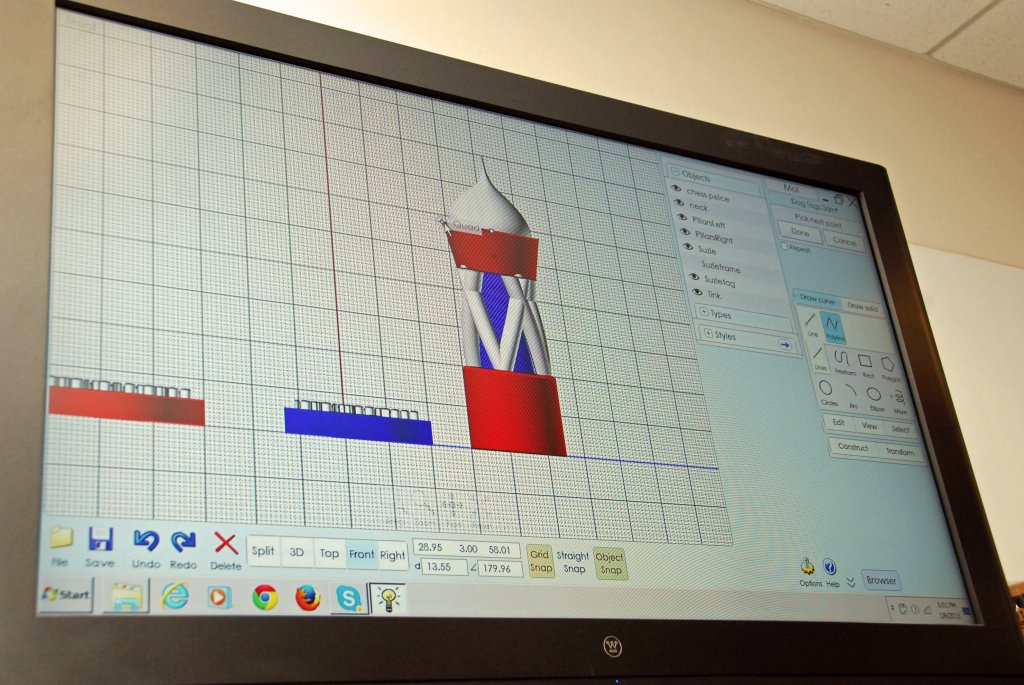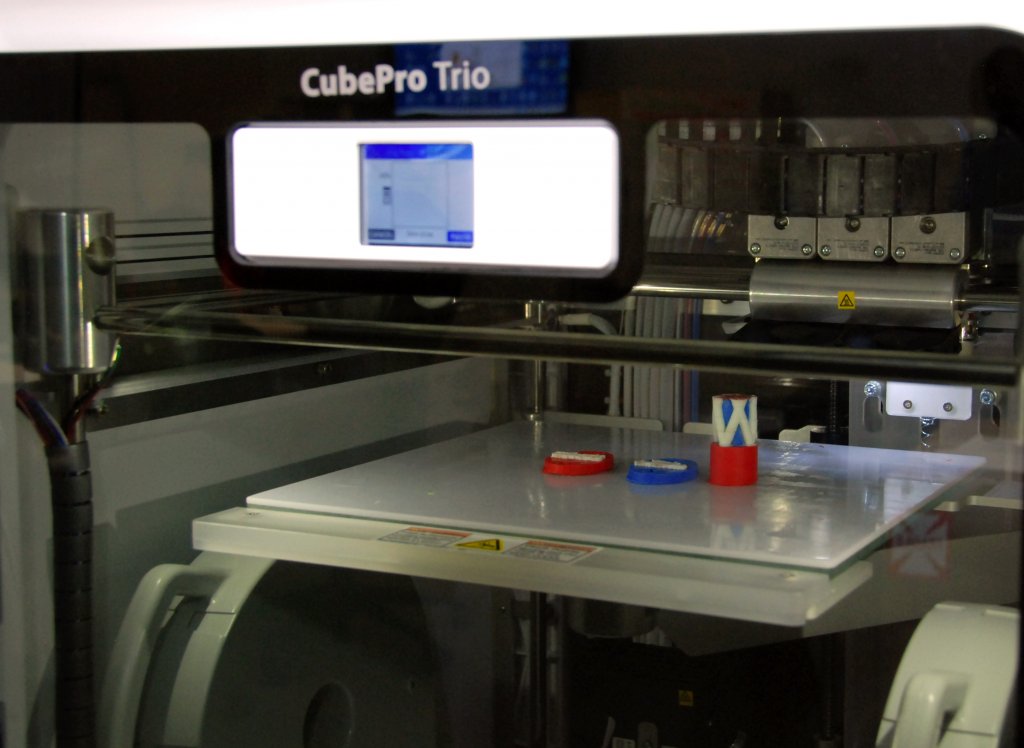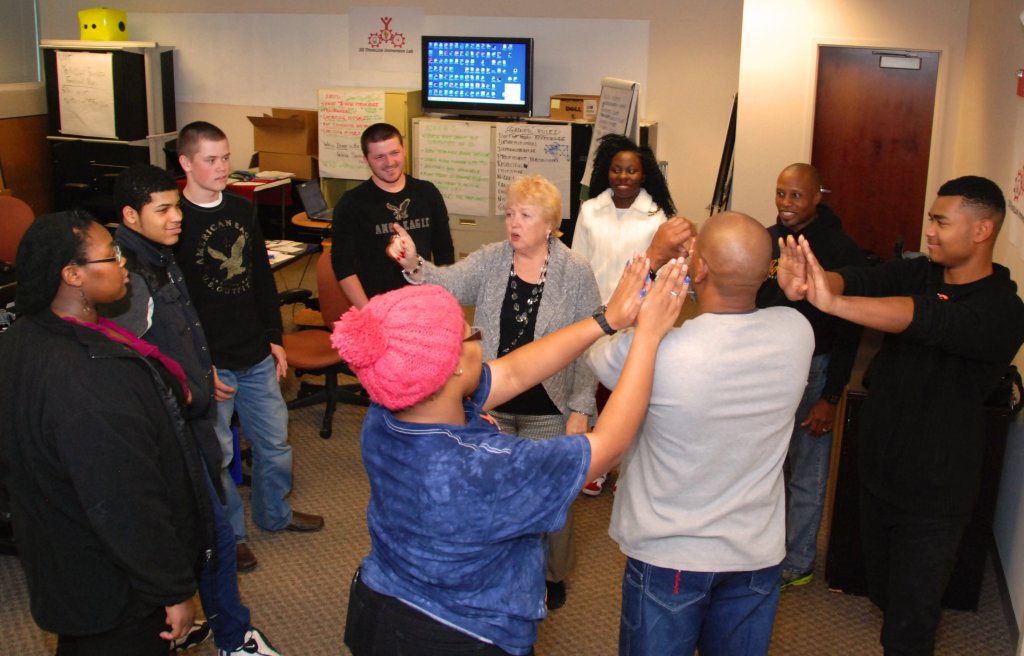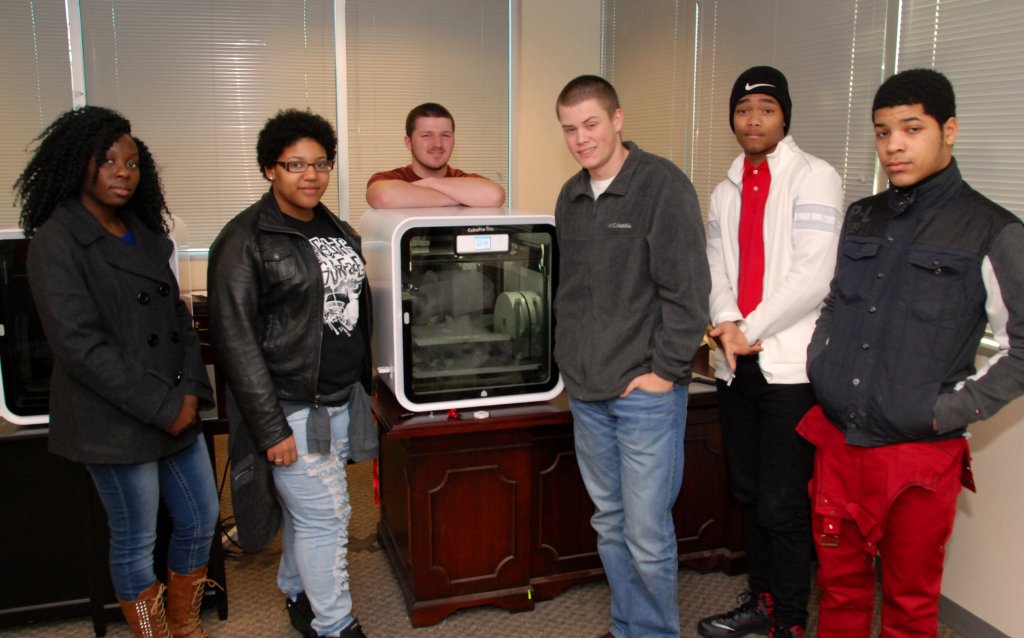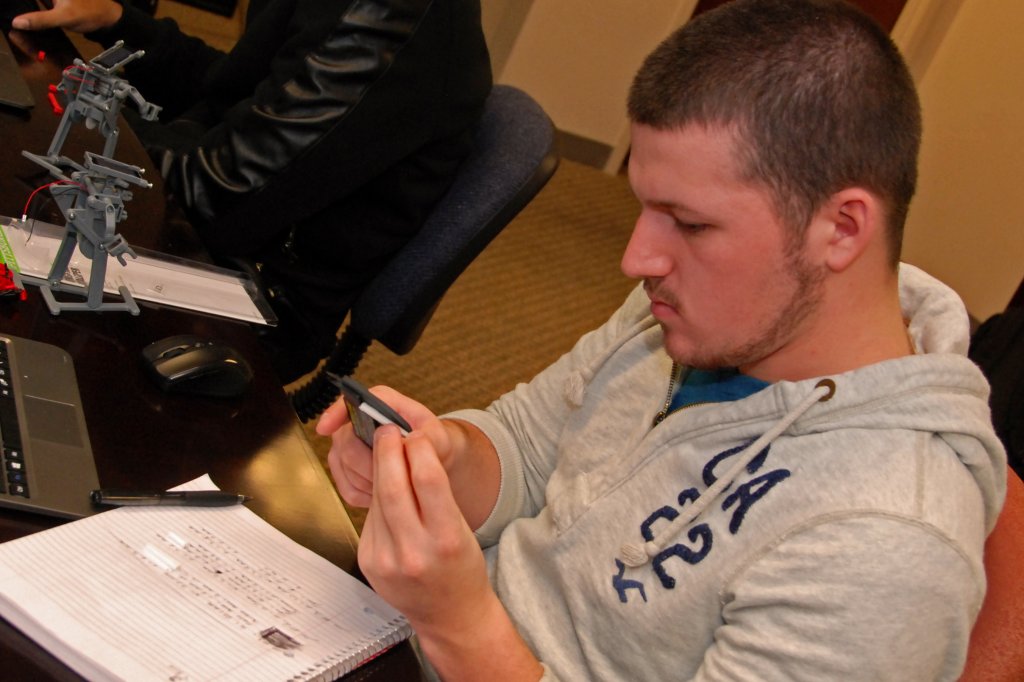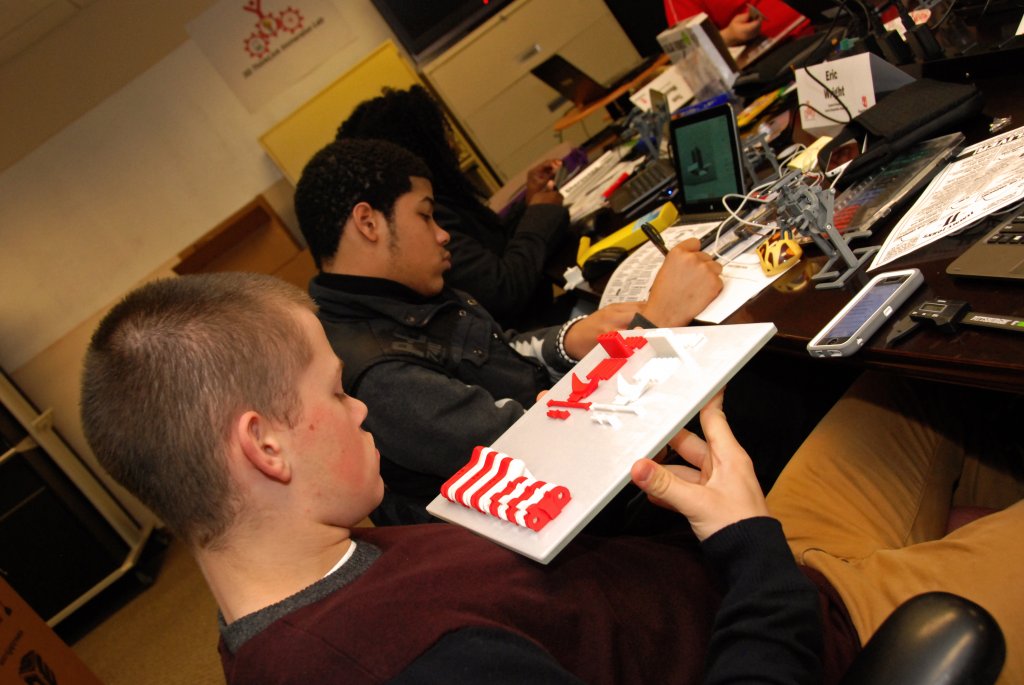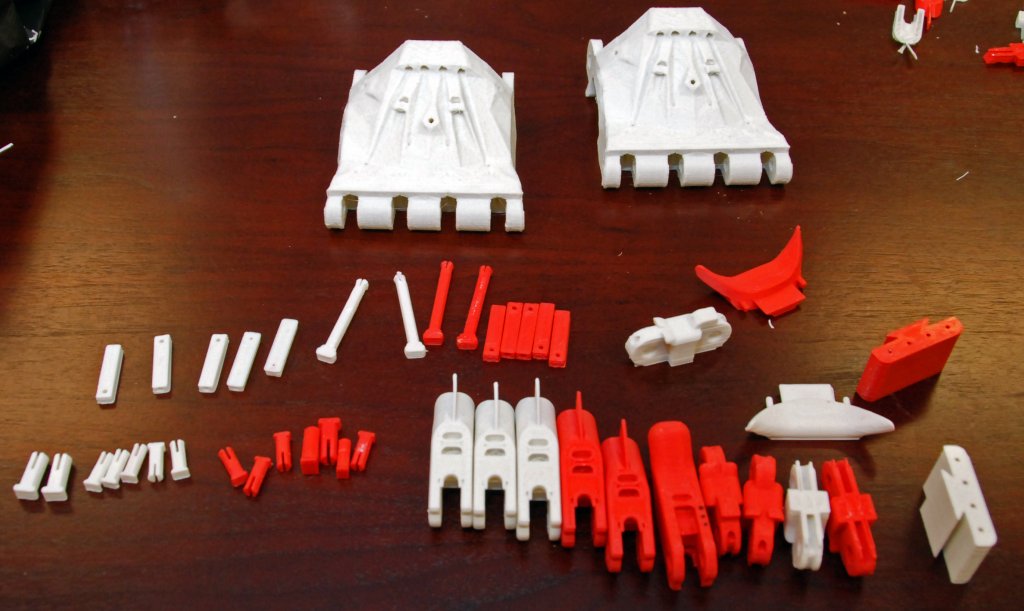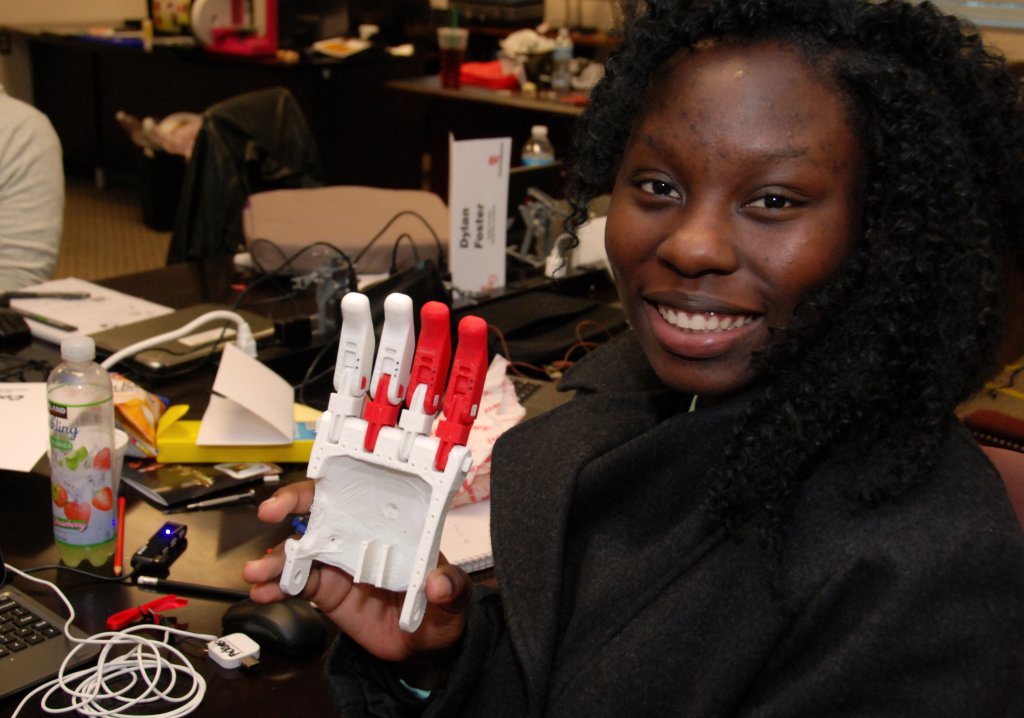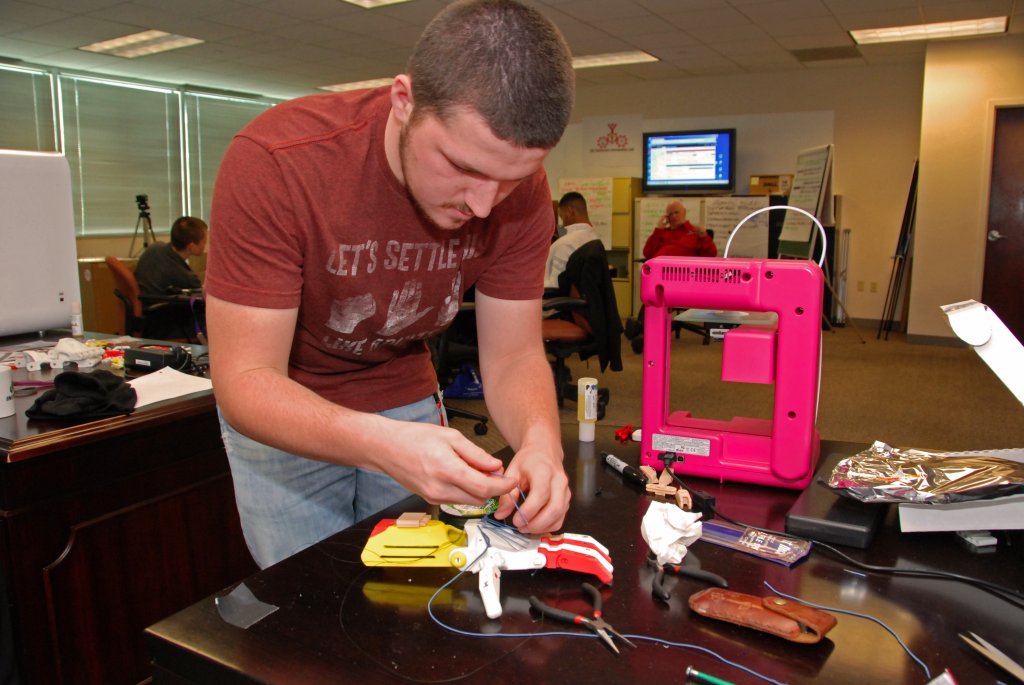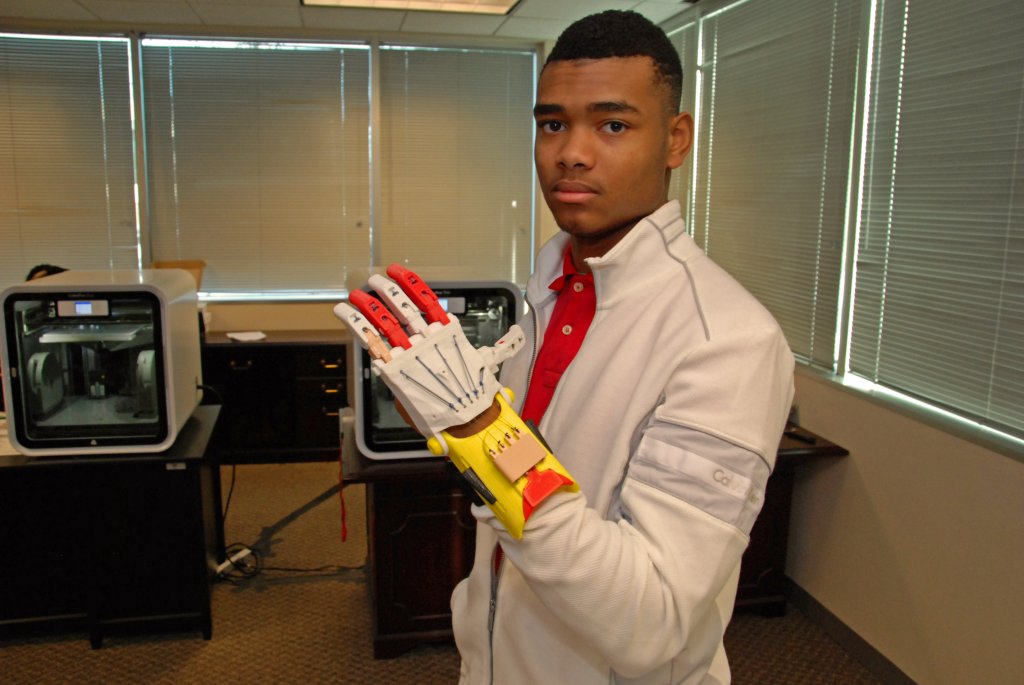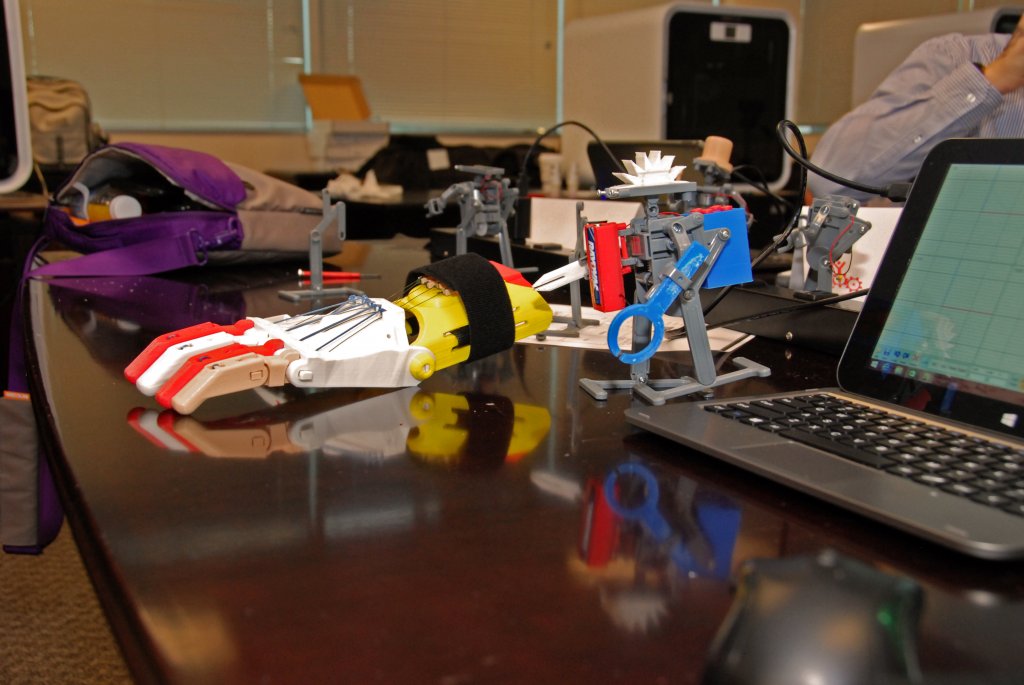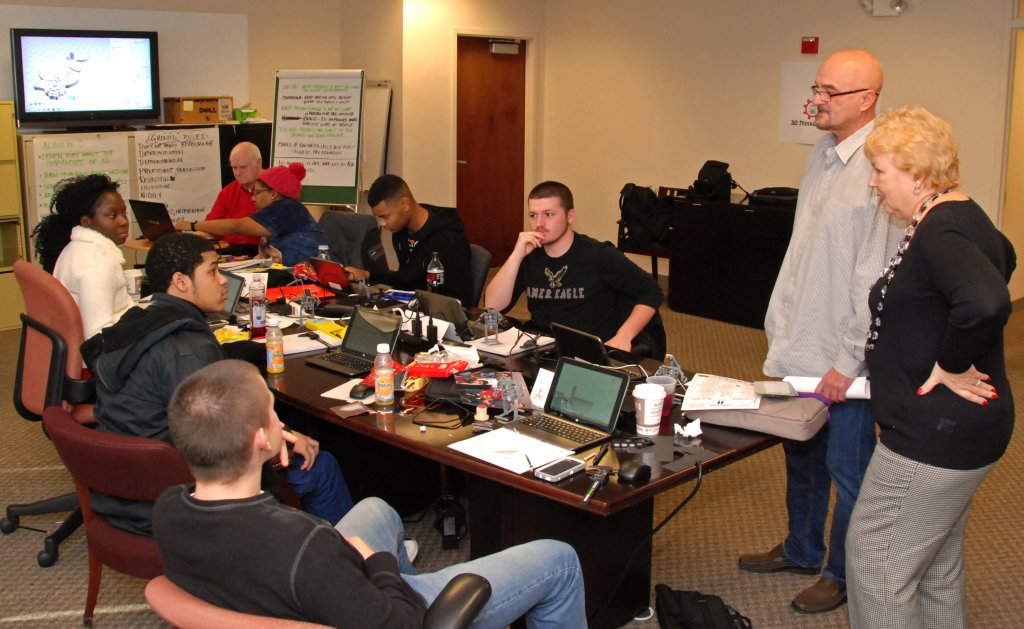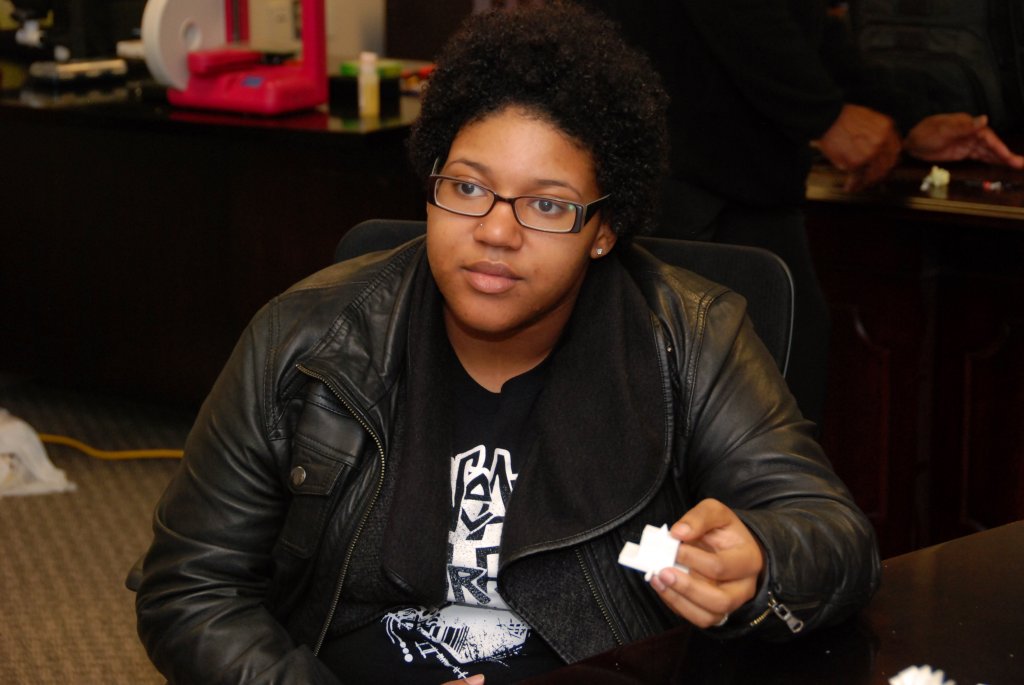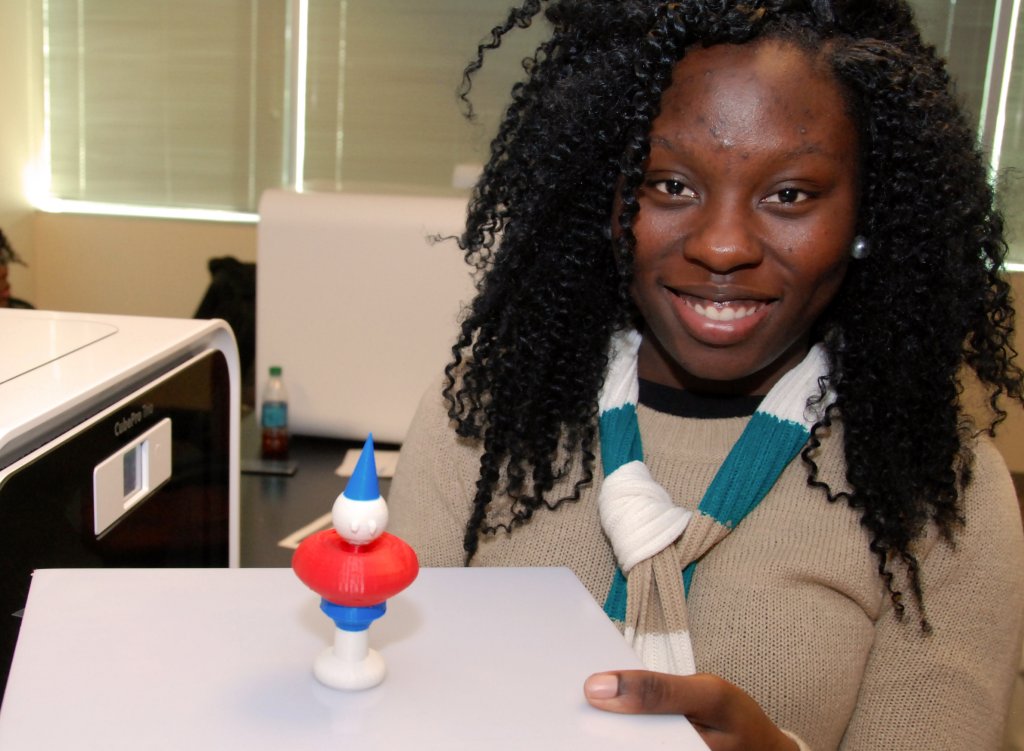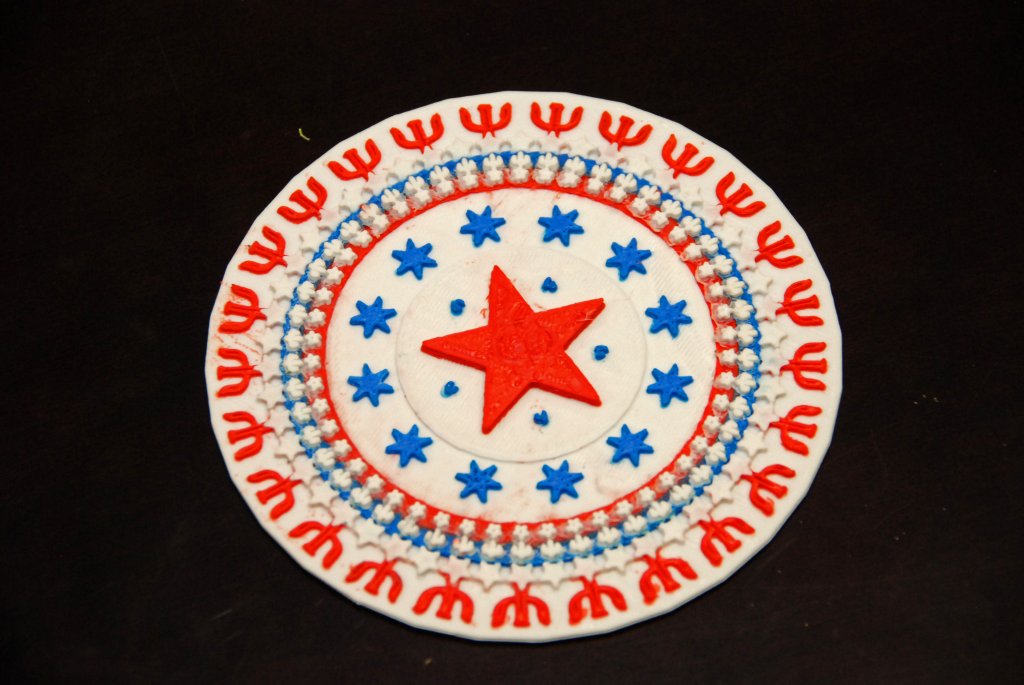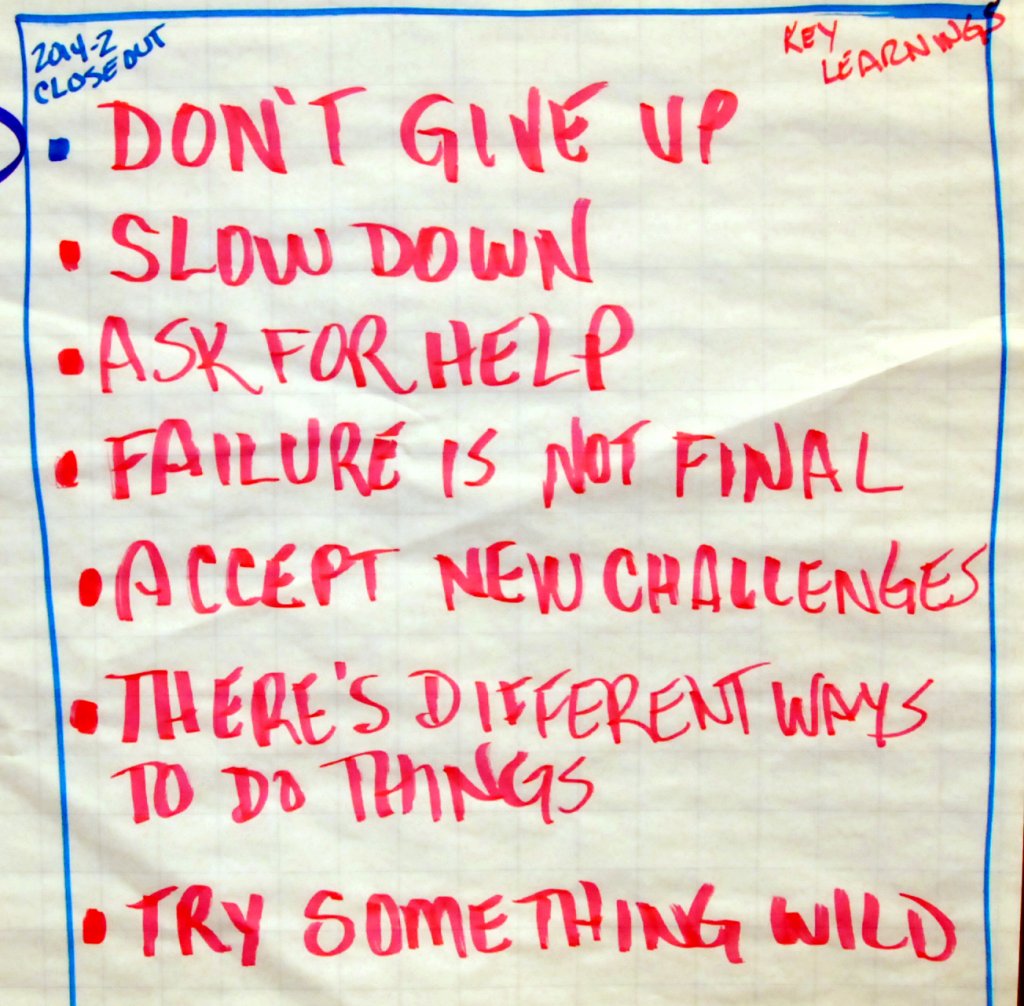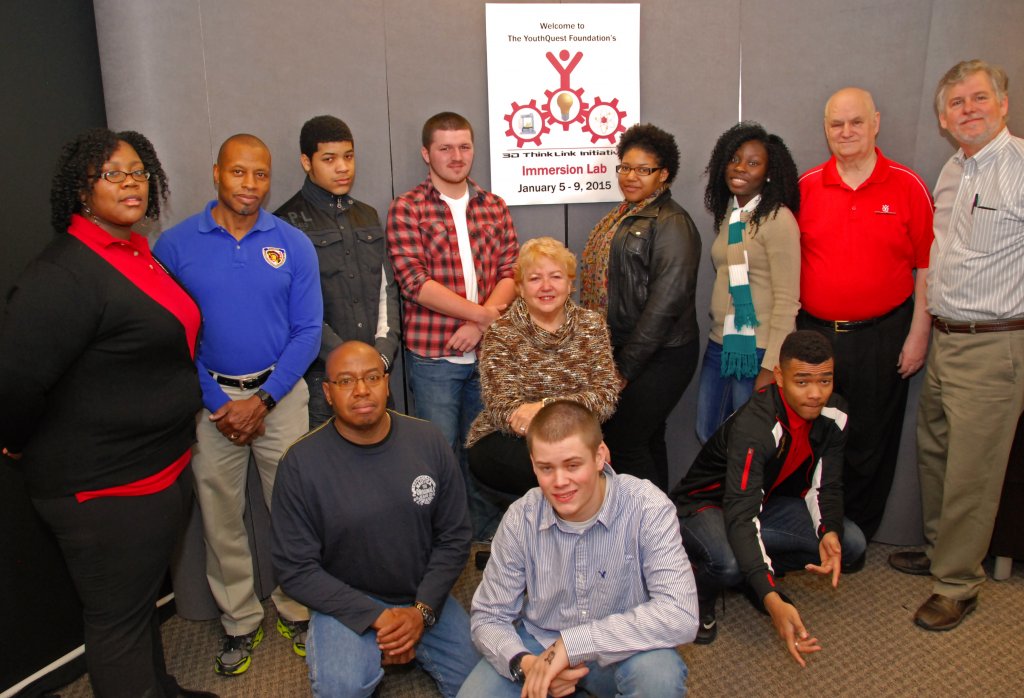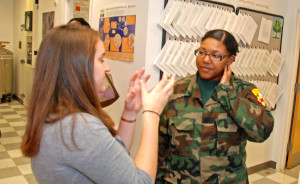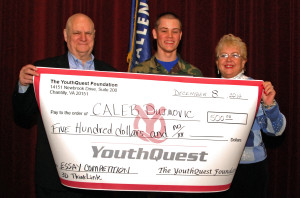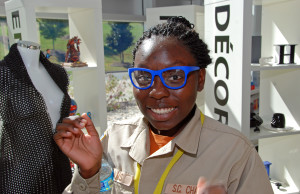These students from the 2016 fall class cycle earned $500 scholarships for these essays about their 3D ThinkLink experience.
By Aunya’ Jones
Freestate ChalleNGe Academy
The YouthQuest 3D printing program has transformed my way of thinking in a variety of ways. Before 3D printing I did not believe in myself, and I had accepted the opinion that I was not good enough. When I initially signed up for 3D printing I did not expect my mindset to change, but thank God it did. Every part of 3D printing took a part in my change specifically speaking, the vocational training. We learned that 3D printing helps make society so much simpler. The employees at Under Armor and students at the University of Maryland help to make other people’s lives better and that inspired me to improve my outlook on life.
Early on in 3D printing, I did not believe that I would be able to make a successful design. Everything seemed so foreign to me. I could barely work the program on the computer. The very first design I made left me feeling shameful. My design on the screen was nothing like what it printed out in reality. Through that experience I learned that I needed to look at the scale of my work. At times, I became frustrated with myself and wanted to give up because my peers’ designs looked better than mine. The disappointment from my first design forced me to make things that I could be proud to show off in my future designs.
I learned to keep my eyes glued to the screen and pay attention to every instruction given by Mr. Meeks. When I had questions I would ask aloud. Every new noun and verb that we learned I tested it on my designs. I was able to use mathematical conversions to figure out what a millimeter looked like off screen and know how it would be once printed. One day my instructor Mrs. Metzger said that my design was the only successful one to print. It brought me so much joy because that meant that I was finally getting it.
Joining 3D printing has taught me to never give up because you will not be satisfied or get where you are intended to be. Starting something is for a purpose and that purpose is not to quit. 3D printing showed me that I cannot always do things on my own and I have to learn the right way first. Mr. Meeks said, “Mistakes are a part of the process to success,” and that is a quote that I will never forget. I now see the bigger picture to my life’s problems and I’m not afraid to face them. I understand that it was not the destination that mattered but the journey I had to take to make it there. 3D printing did more than teach me how to use a program. 3D printing has helped guide me into making better decisions and gave me a new life skill along the way. It has really helped me understand my self-worth because now I know I can design my own future.
_________________________________________
By Brock Jasmann
Freestate ChalleNGe Academy
3D printing has been a very awe-inspiring experience to me. I have personally benefited from 3D printing by learning that I can make something complex and visually outstanding by using a couple different tools on Moment of Inspiration. I use the Moment of Inspiration program to make my creative designs, but to me it’s more than just a computer program. I say this because, through the service to the community project, I was given the opportunity to go to a library to teach the community about 3D printing.
It was an amazing experience to see how interested and impressed the kids and adults were at the library when we showed them how to make 3D prints. We printed things such as: books, key chains, arrayed stars with faces, and little Lego shaped men. I taught them about how we use additive manufacturing, which is “a process of making three dimensional solid objects from a digital model[1]”. The impact that 3D printing has not only on me but the community is enormous, fun, and educational.
While visiting employees at Bustin Boards, Under Armor Light House, and The Foundery in Baltimore, Maryland during our Vocational Orientation, I learned how they used 3D printing in their skateboards, clothing, and shoes. For example, Under Armor takes virtual images from athletes’ bodies to make custom clothing to fit their body type based off of the 3D scan. This showed me that 3D printing was for more than just creating small items, it is used in technology to make clothing and everyday items.
“While 3D printing has been successfully used in the health care sector to make prosthetic limbs, custom hearing aids and dental fixtures, the technology is now being used to create more complex structures — particularly human tissue”-Cadie Thompson.[2] Another phenomenal production of 3D printing is that scientists at University of Maryland are making fake working environments for cells to thrive in to replace burnt flesh and scars with a foreign body fat. The fat is then used to fit the affected area. The scientist surgically place the healthy host cells on the body to make the scar completely disappear. This effect of 3D printing is revolutionary because now wounded warriors will have a normal life by no longer having scars exposed and they can have realistic looking prosthetic limbs.
I am ecstatic to know that I can make anything if I put my mind to it. Moment of Inspiration has inspired me to learn more about 3D printing and helped me to teach it to my community. 3D printing is important to me because now I can express myself in a form of art that I’m talented in. Also, I am more able to educate my community through my new learned skill in 3D printing. In conclusion, all of these examples are reasons why 3D printing is awe-inspiring to me.
[1] http://3dprinting.com/what-is-3d-printing/
[2] http://www.cnbc.com/id/49348354: Quote cited from CNBC “How 3D Printing is Reshaping Medicine”.
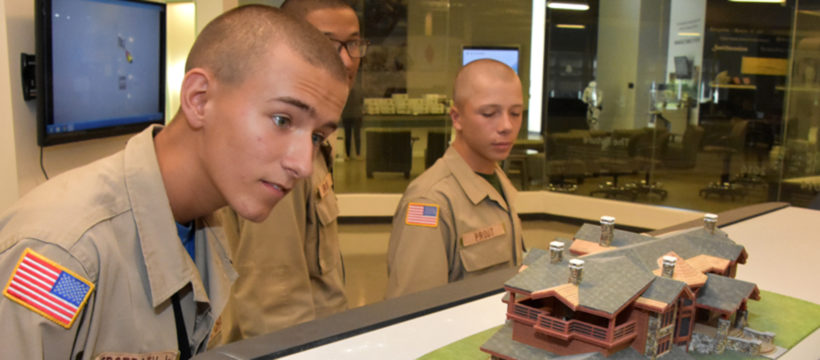
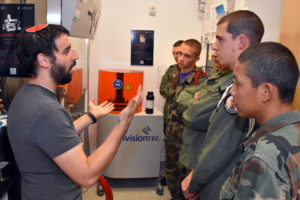
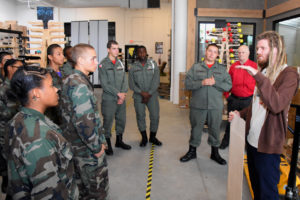
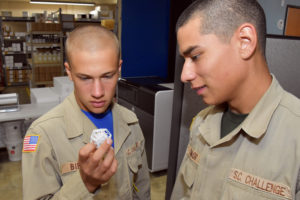
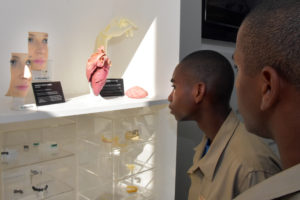
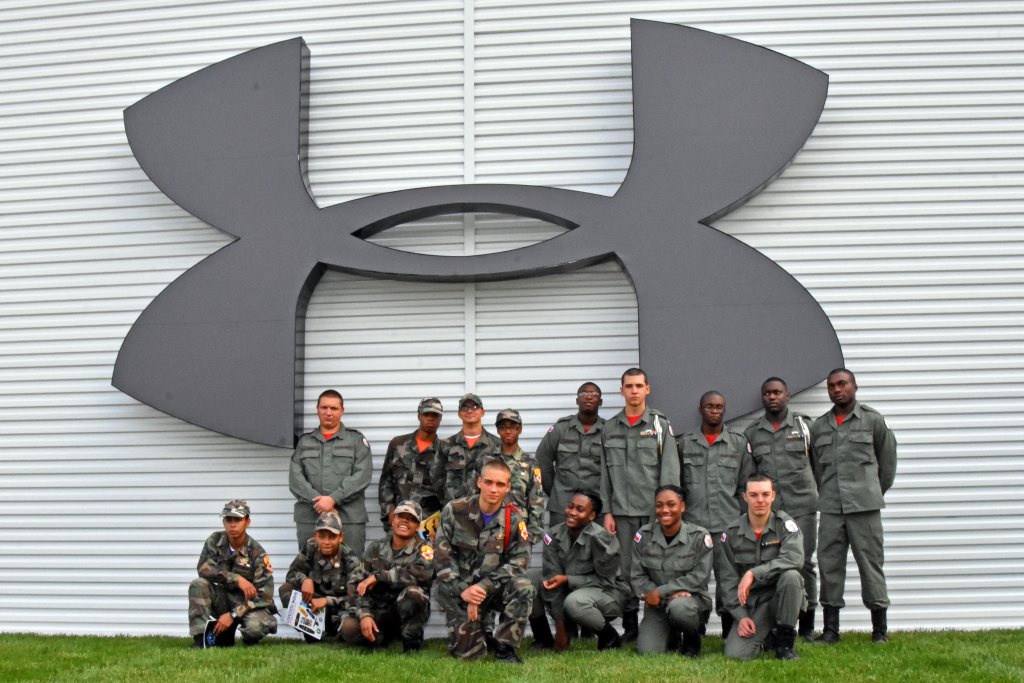
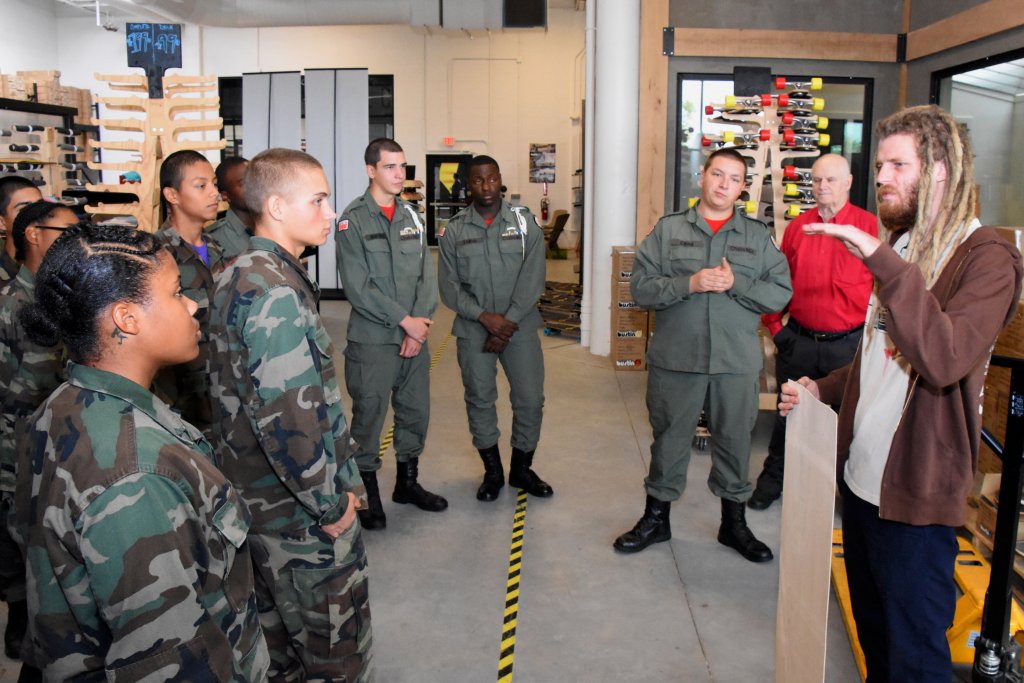
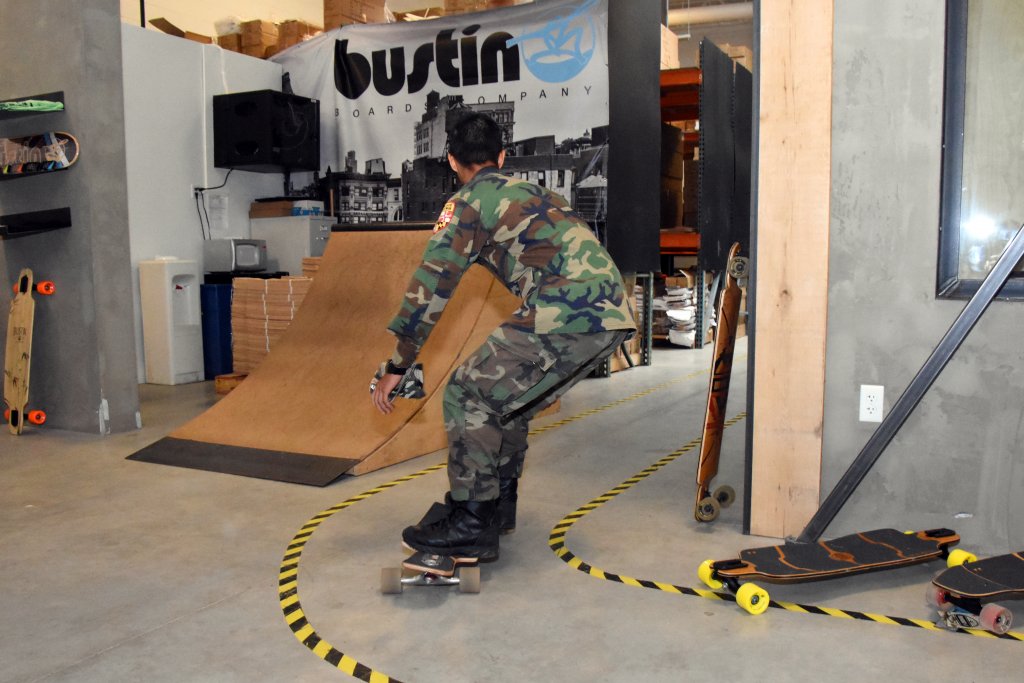
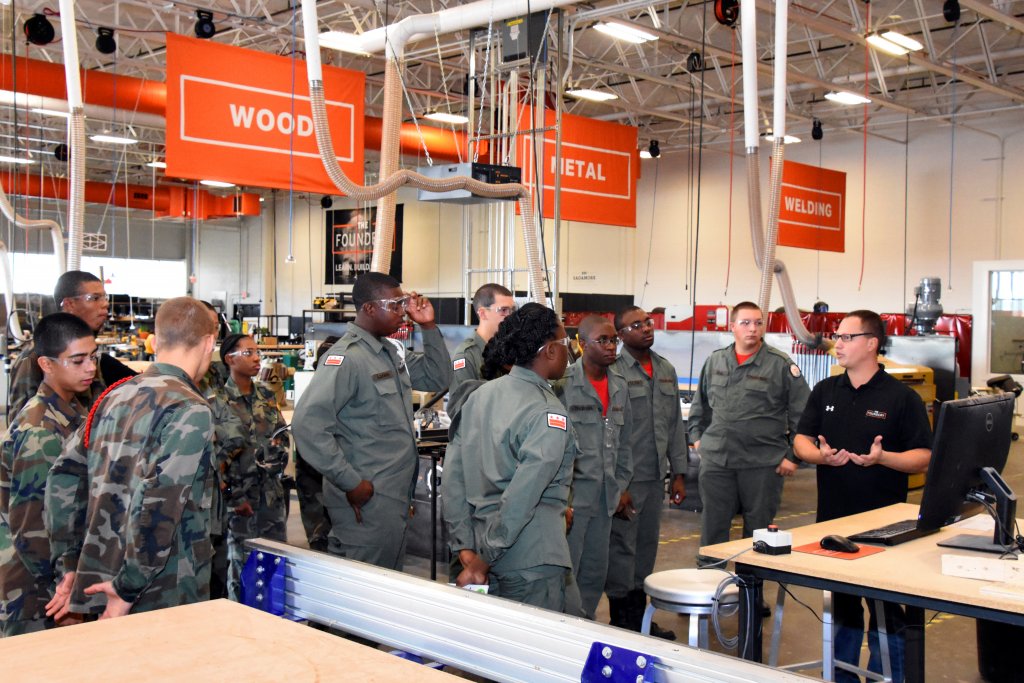
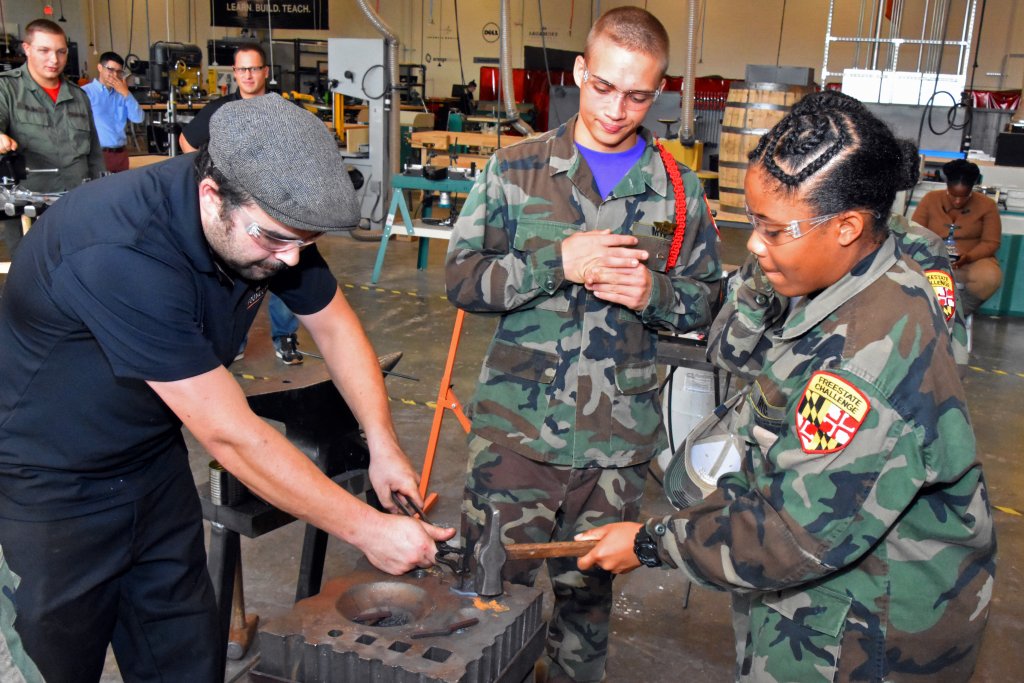
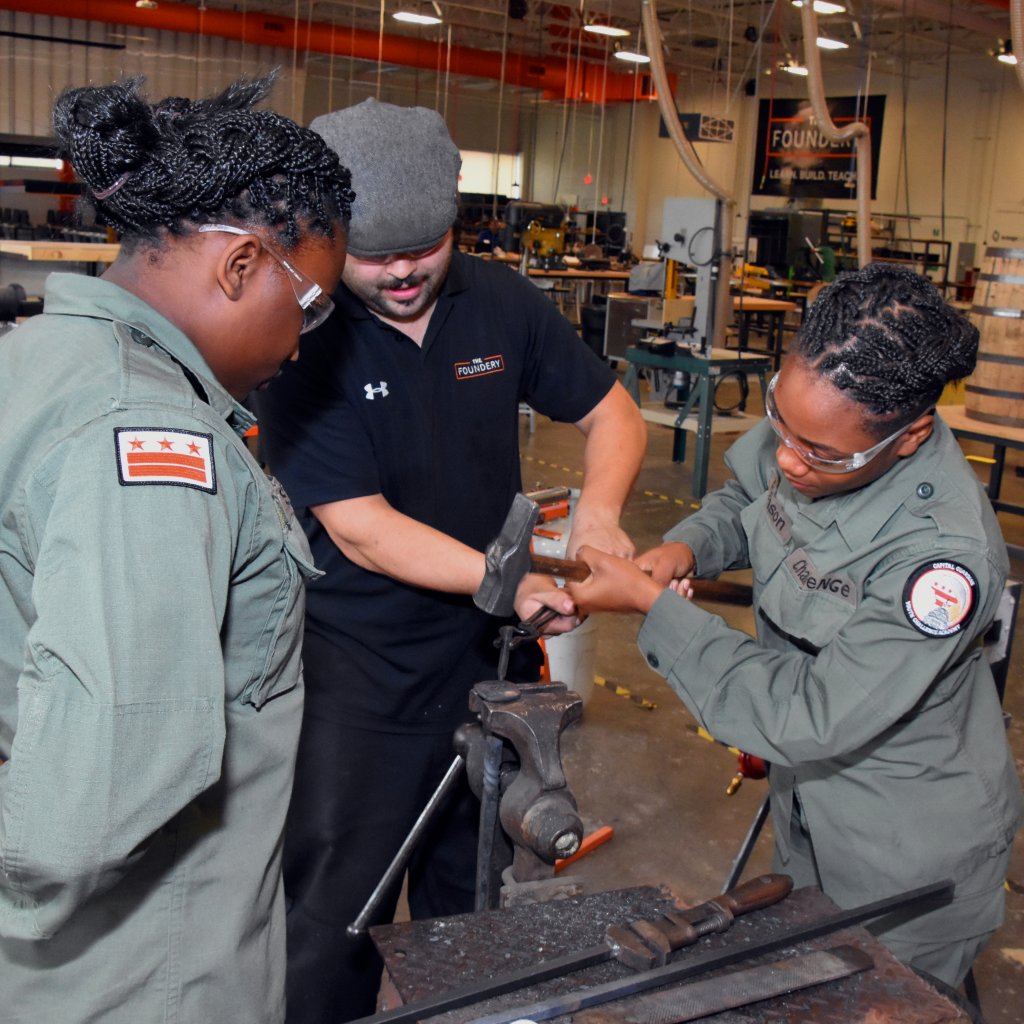
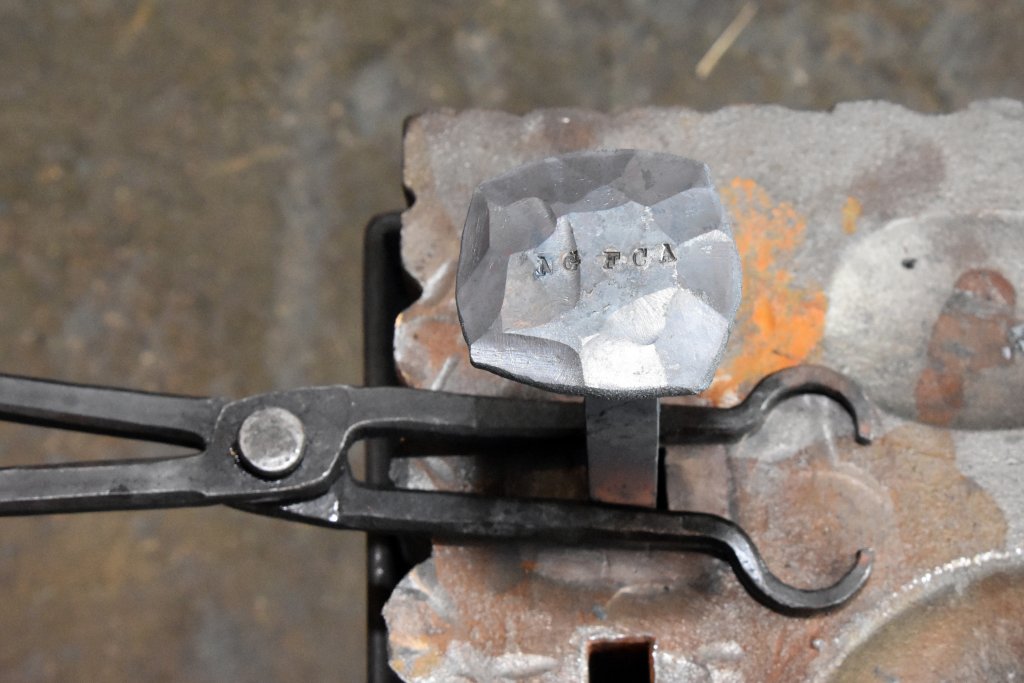
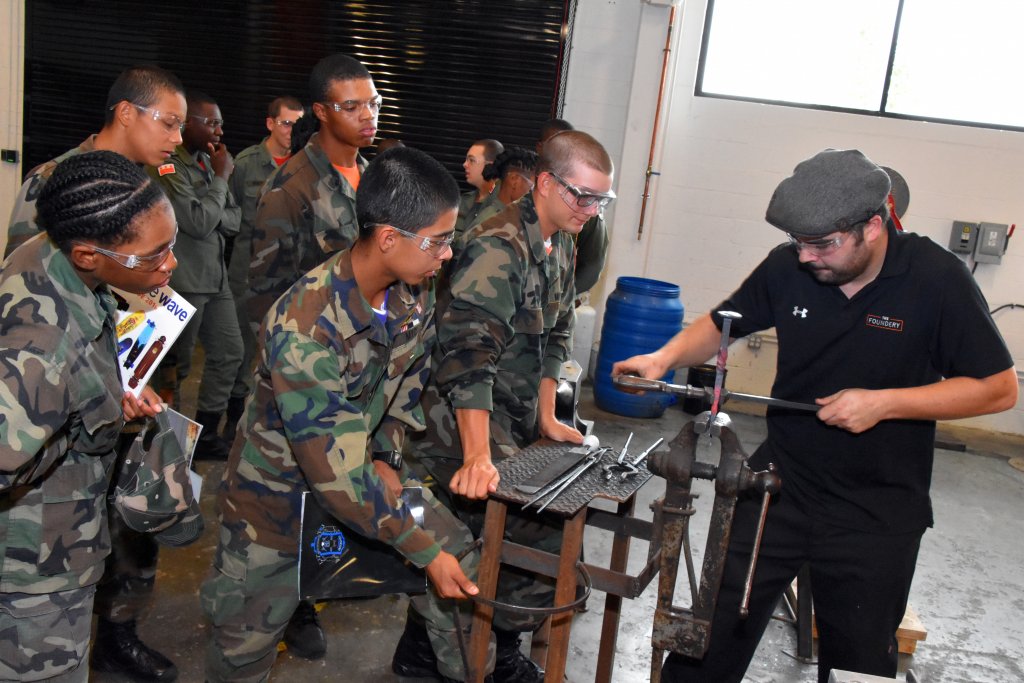
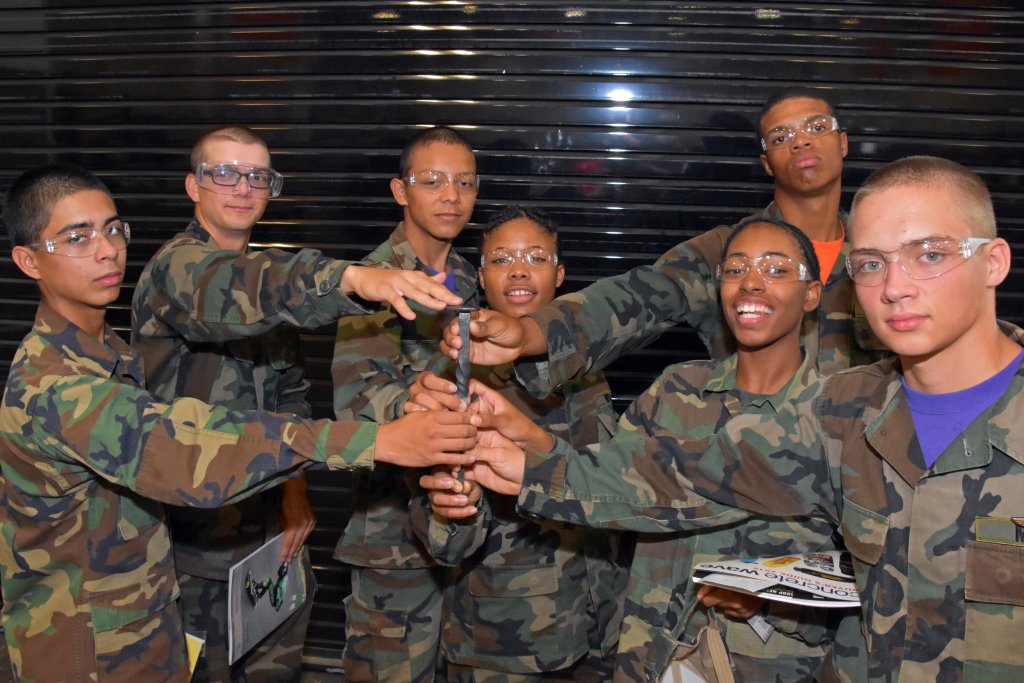
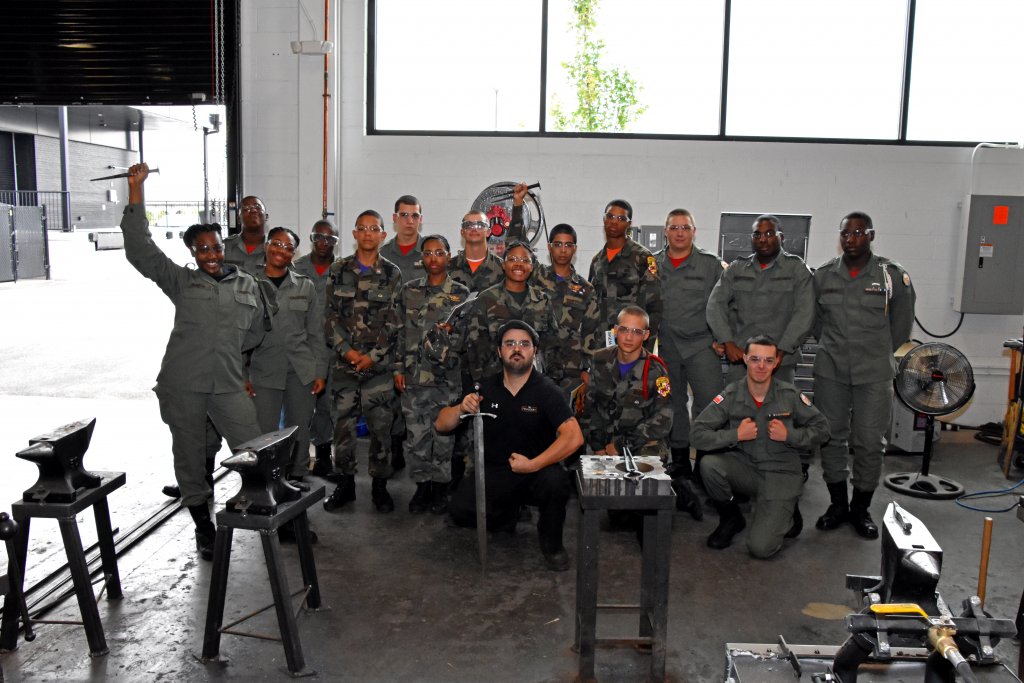
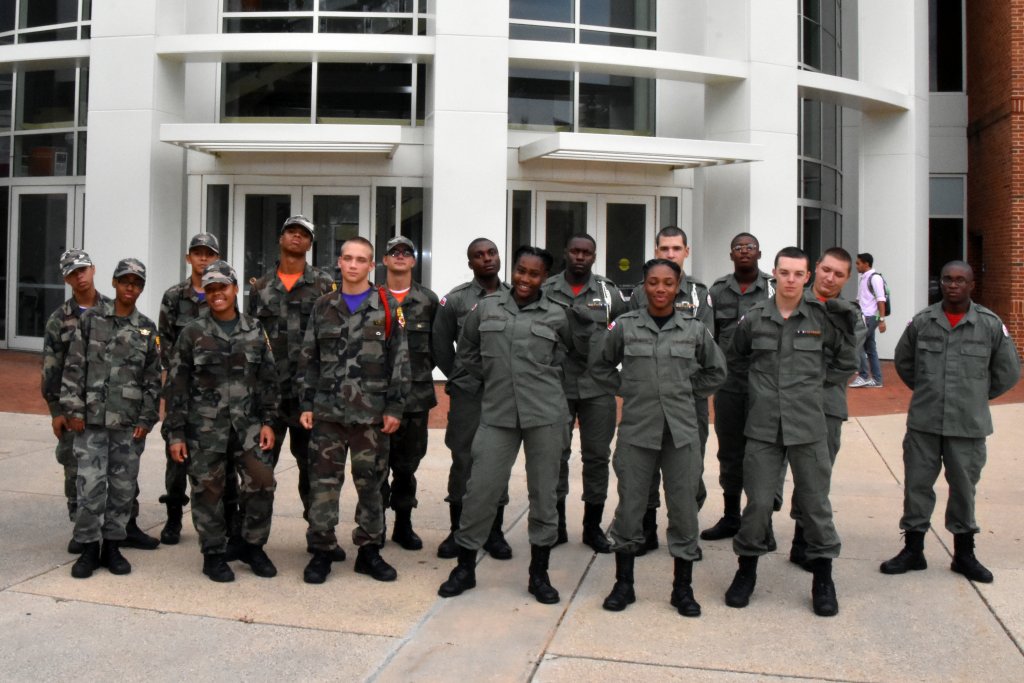
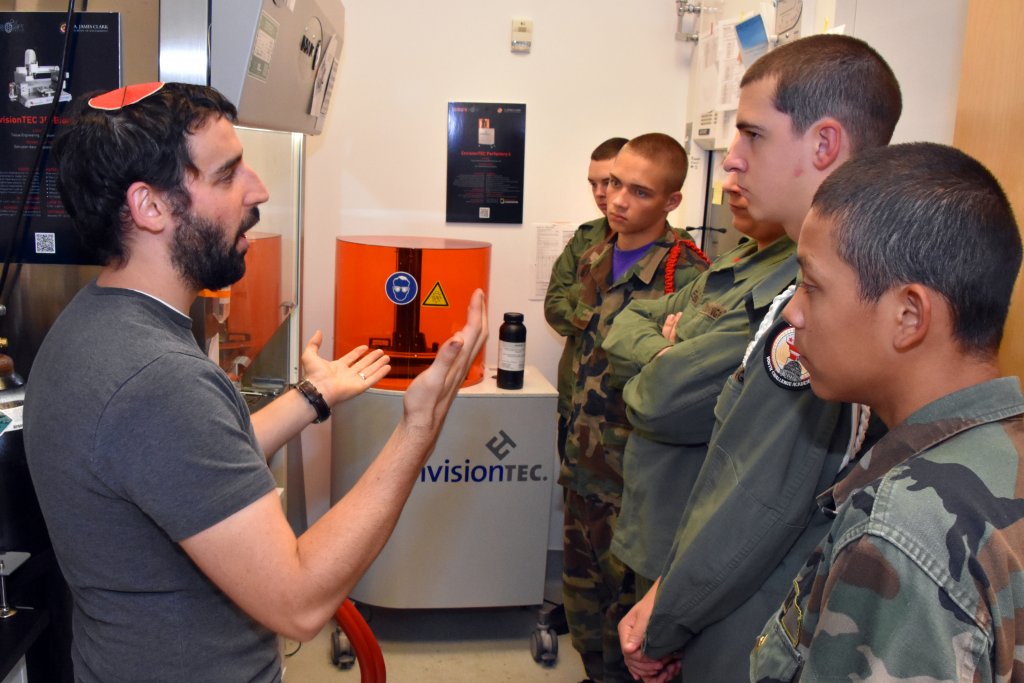
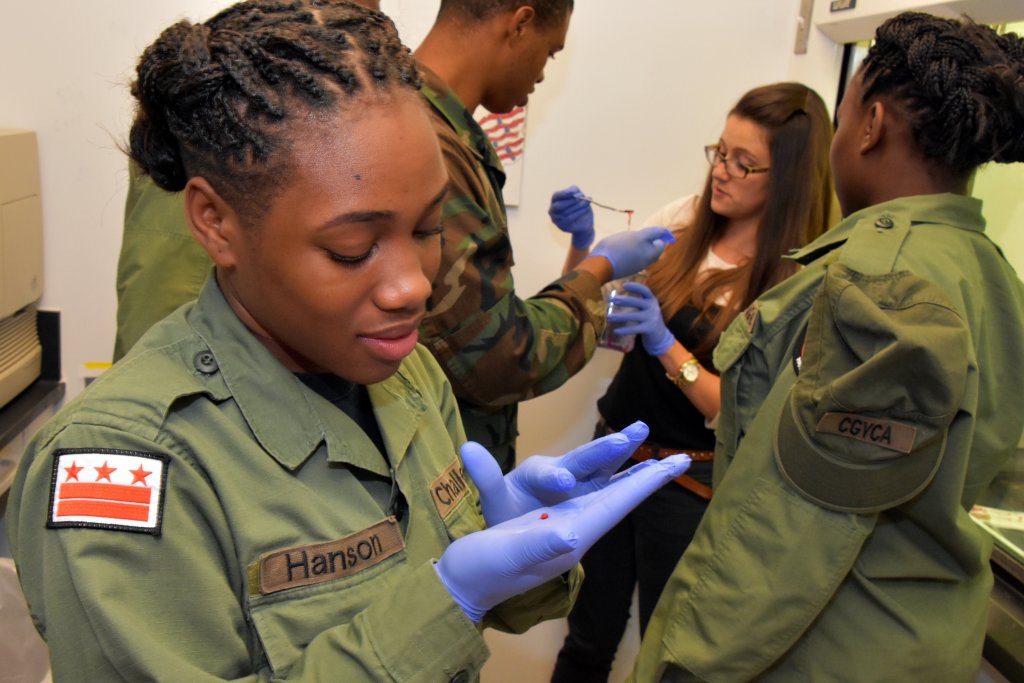
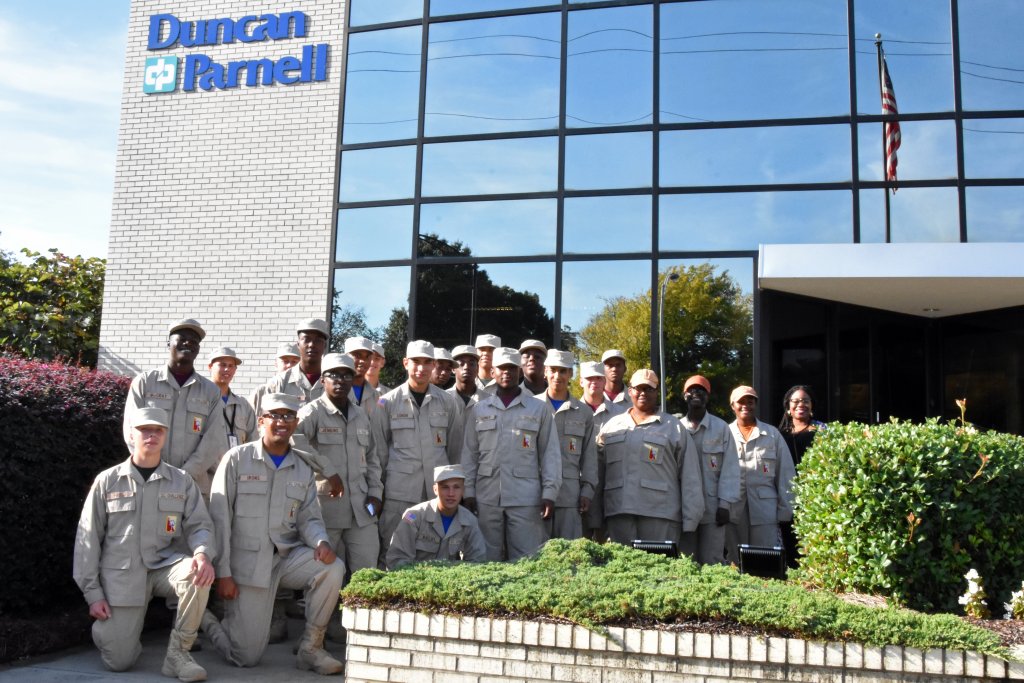
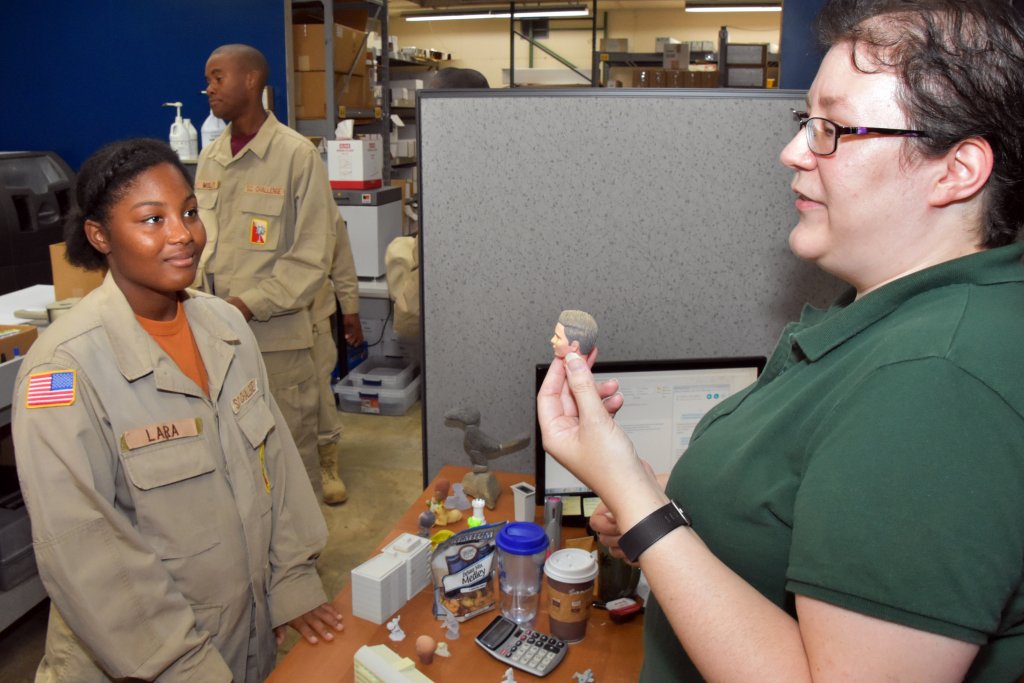
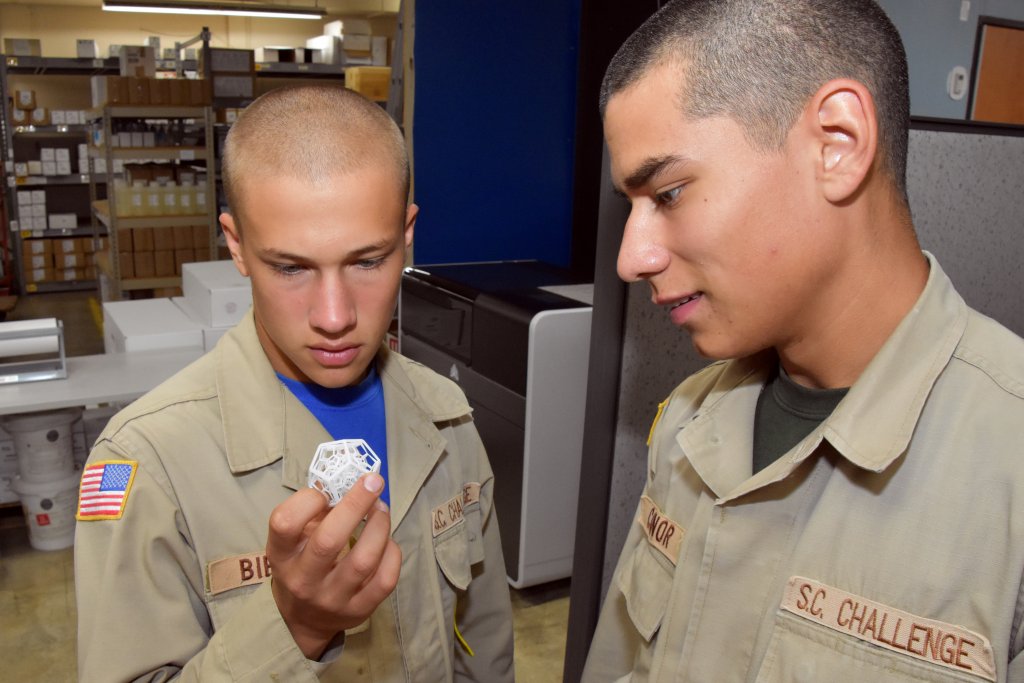
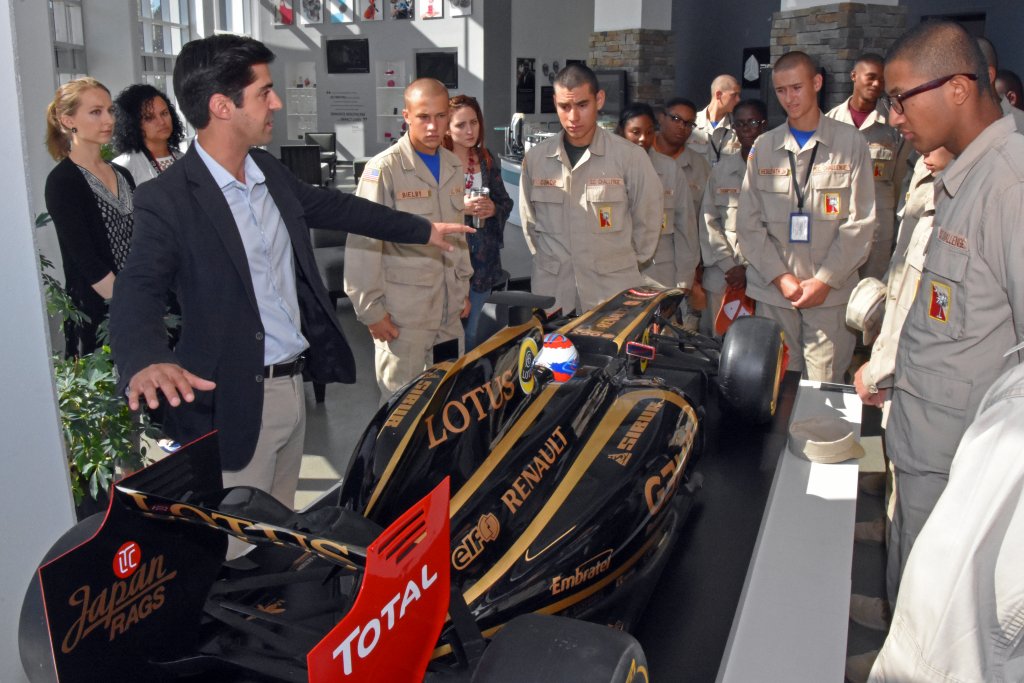
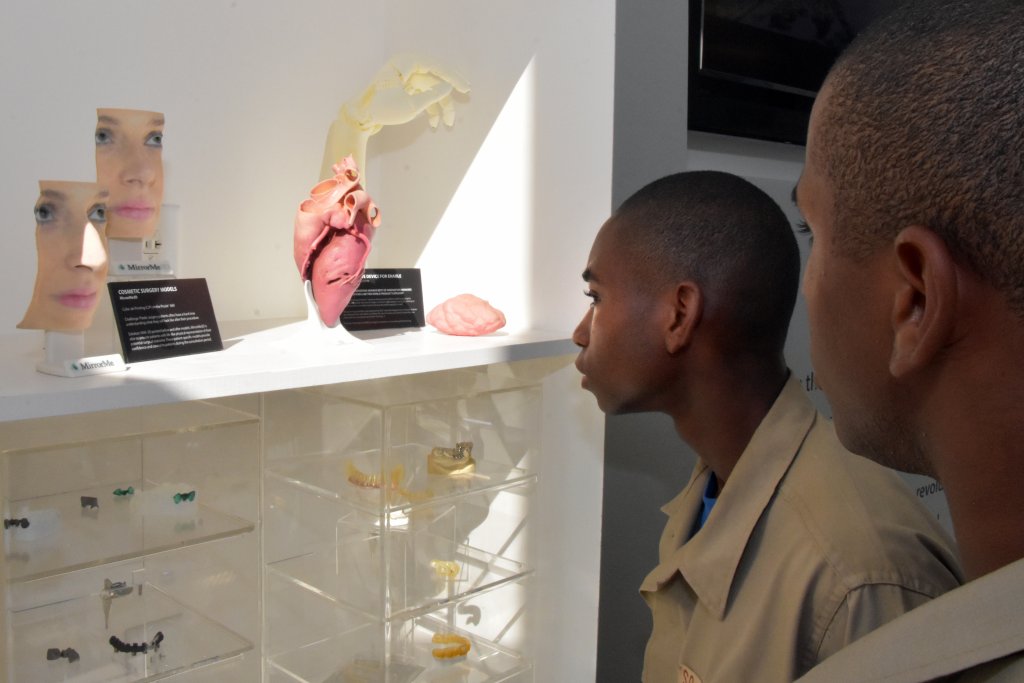
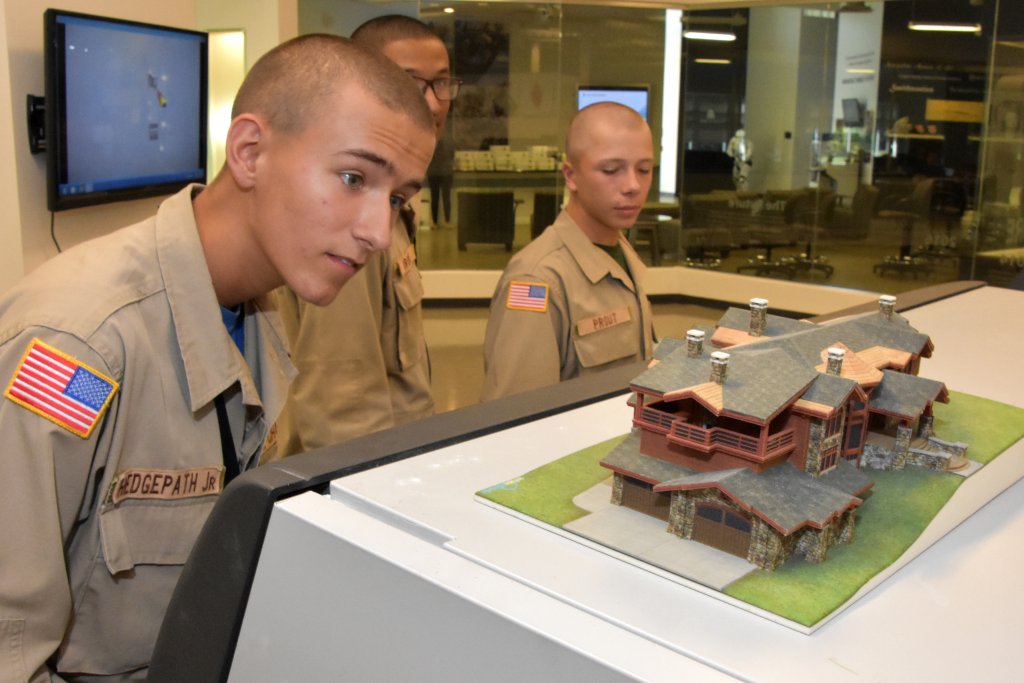
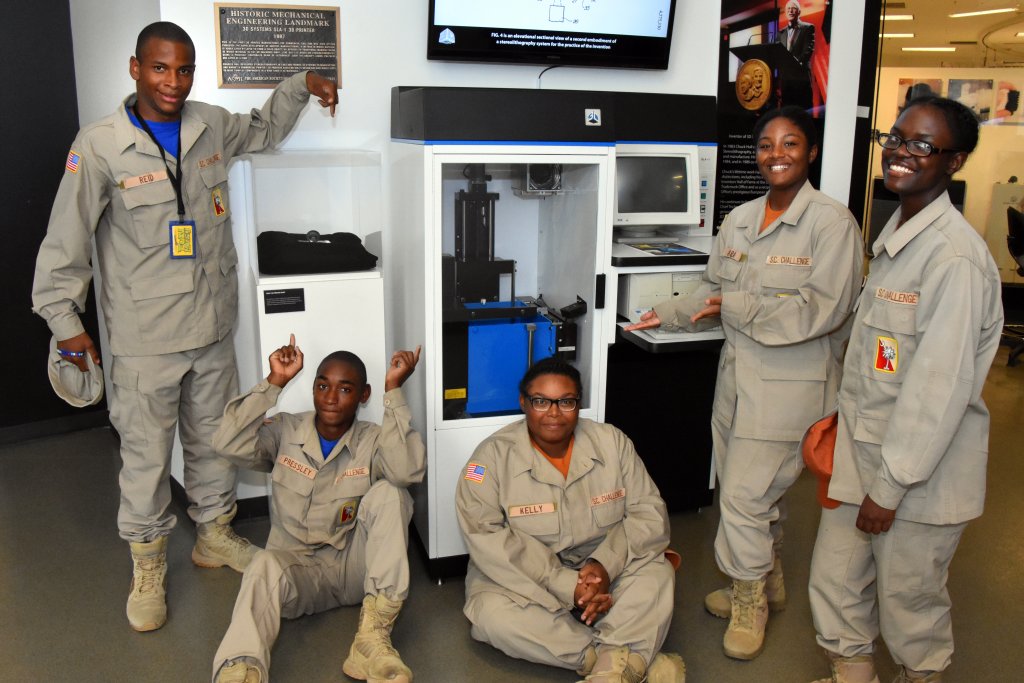
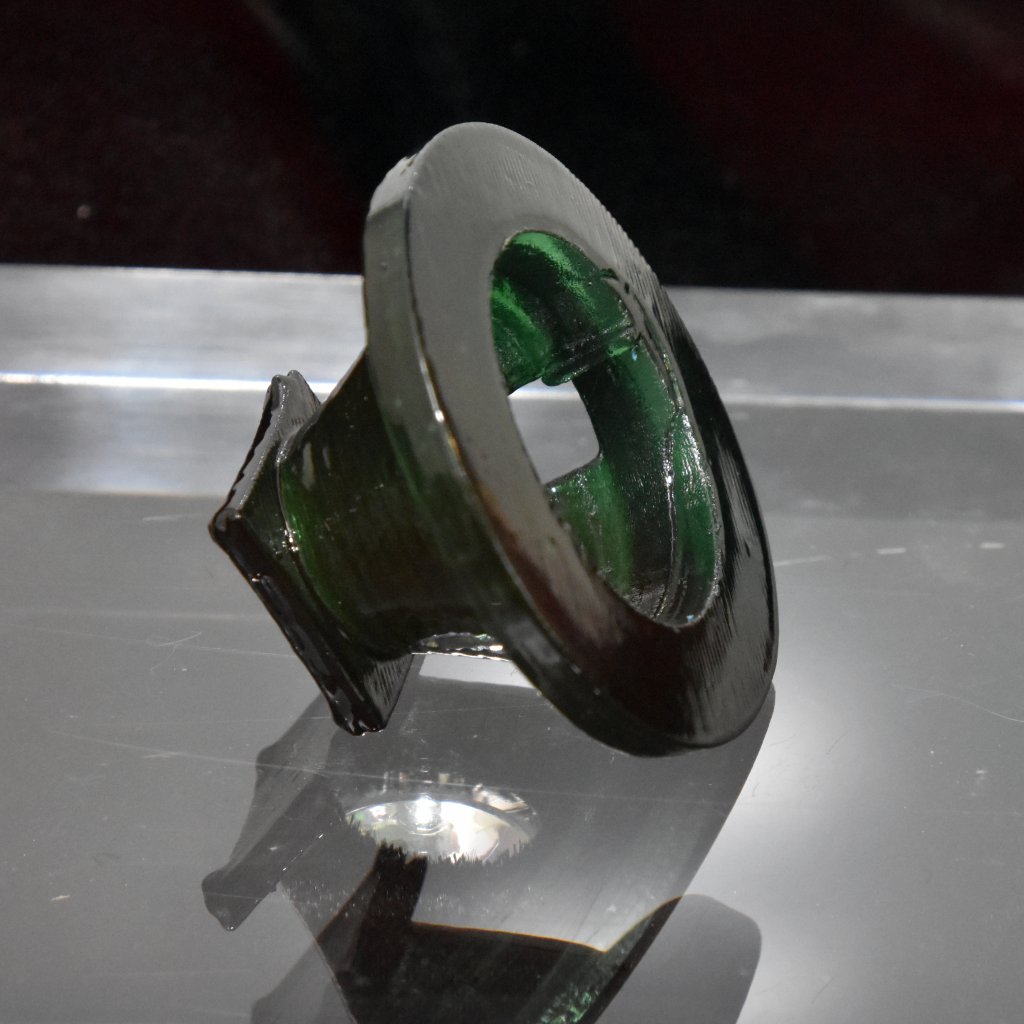
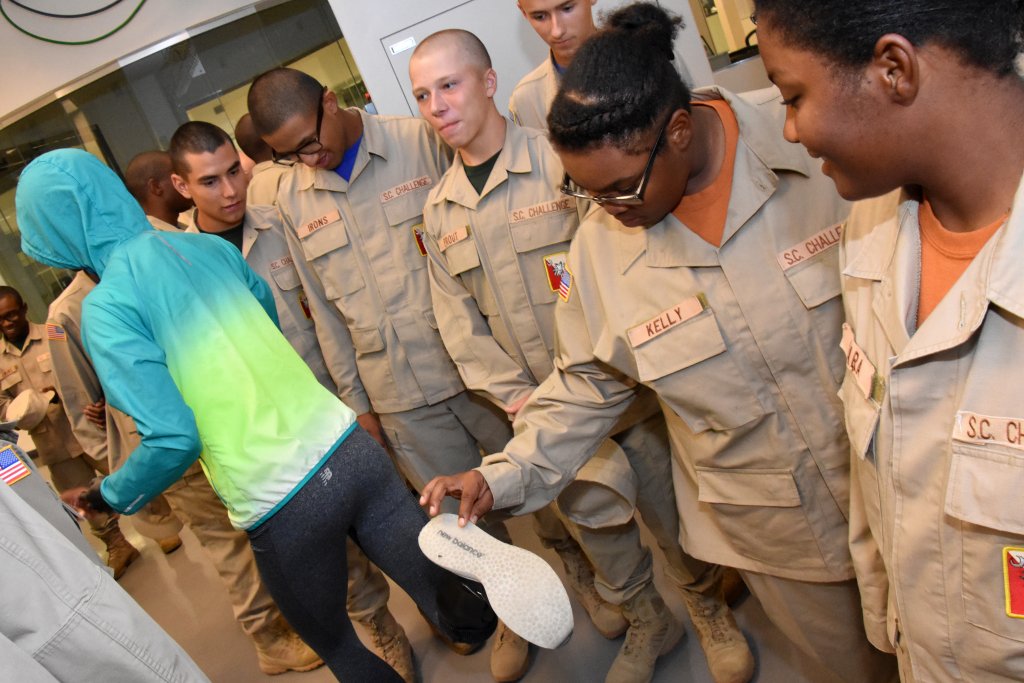
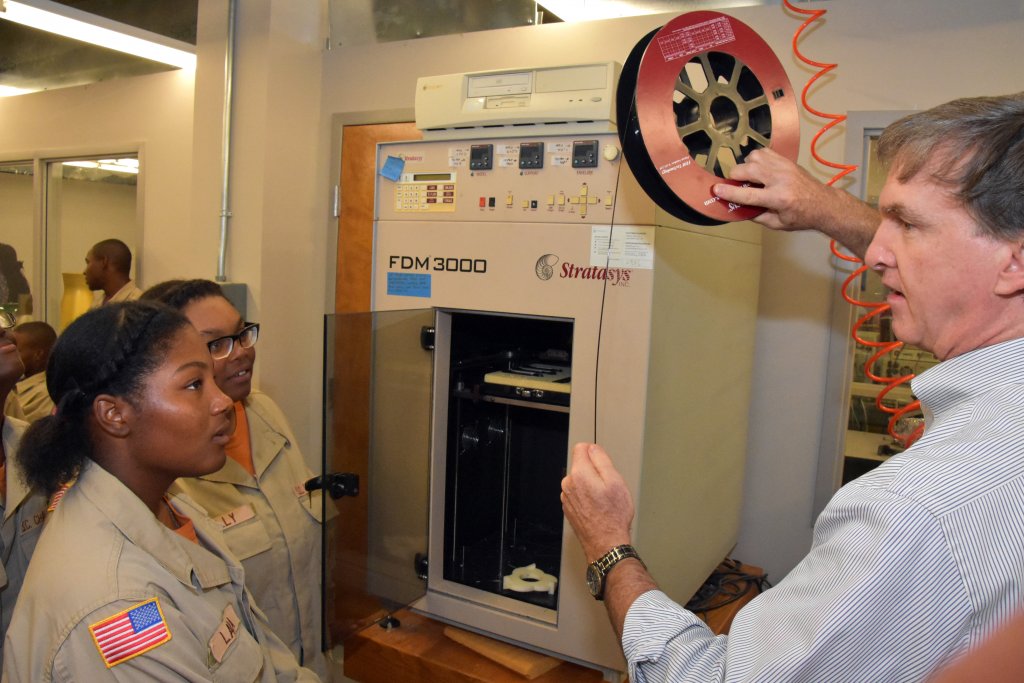
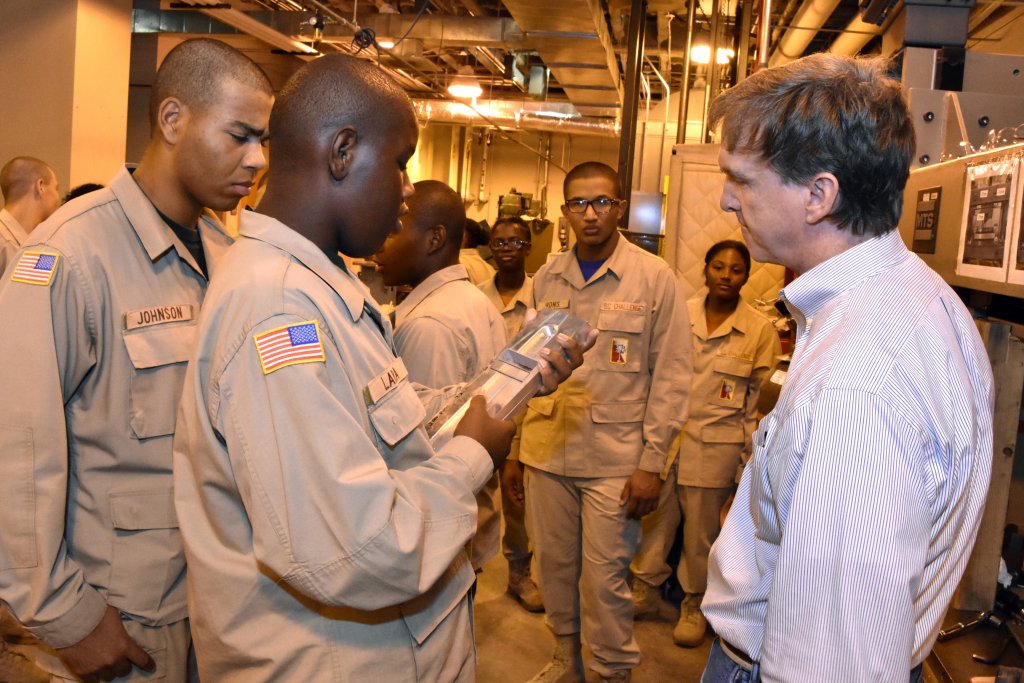
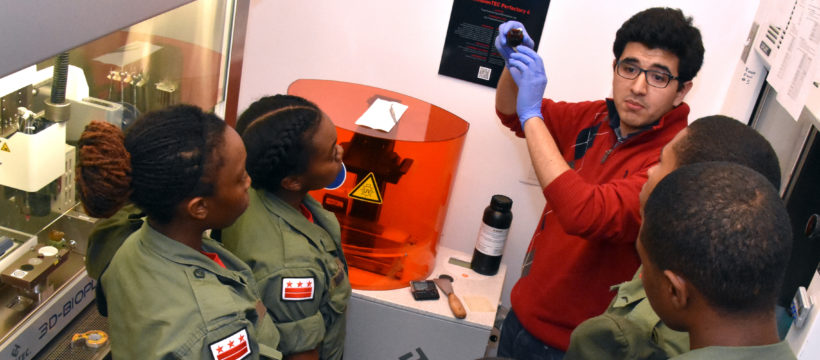
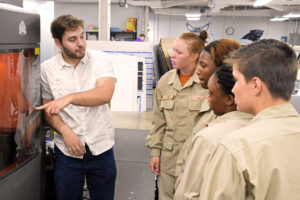
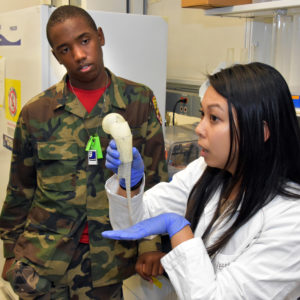
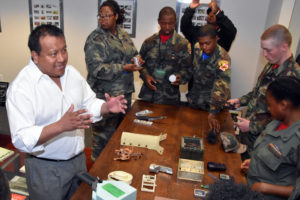
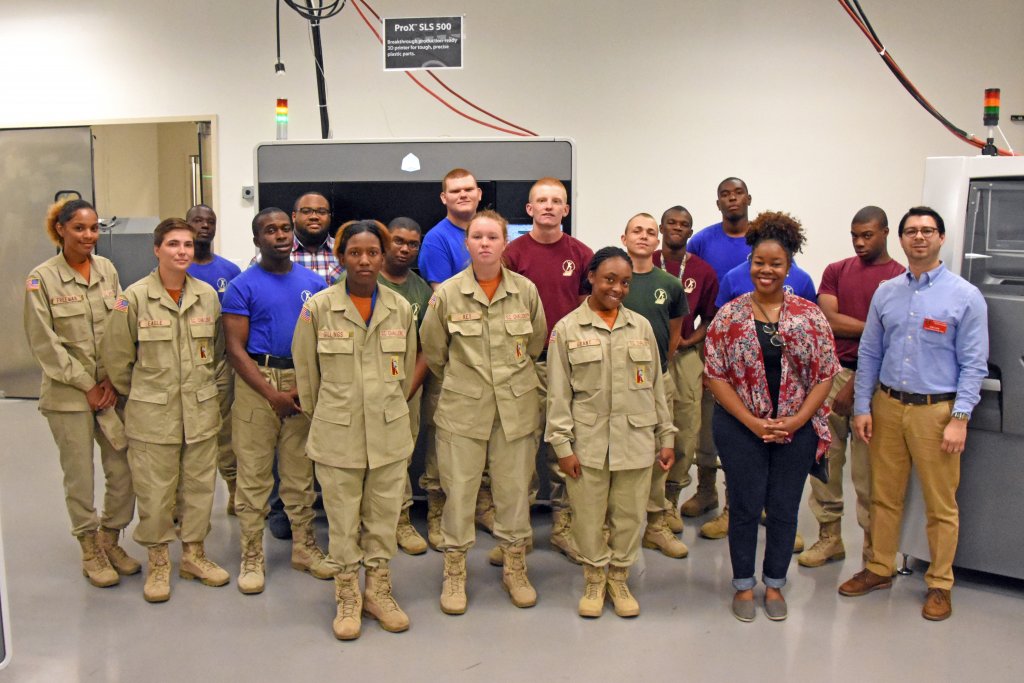
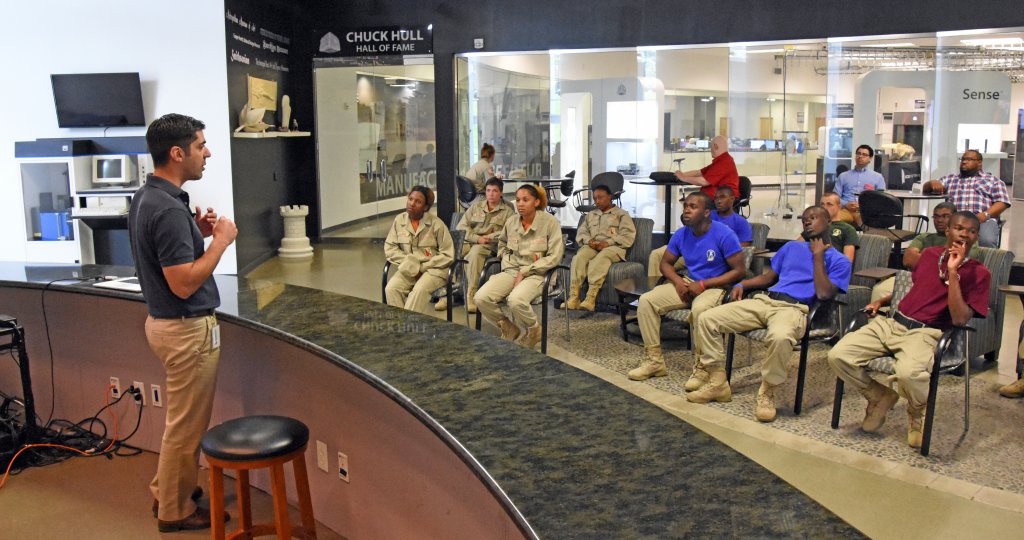
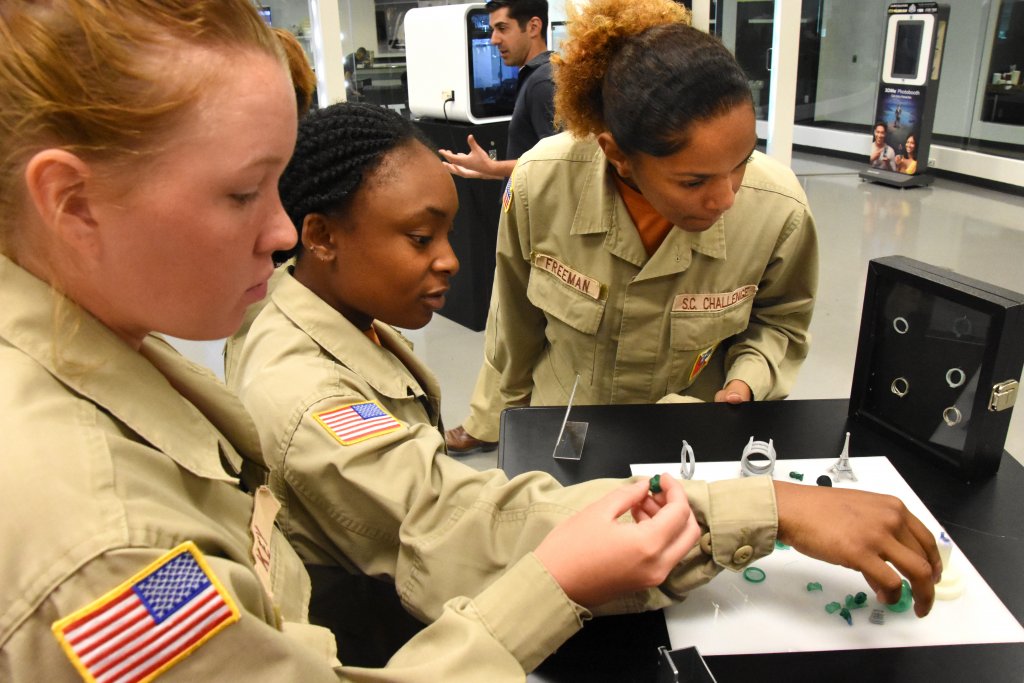
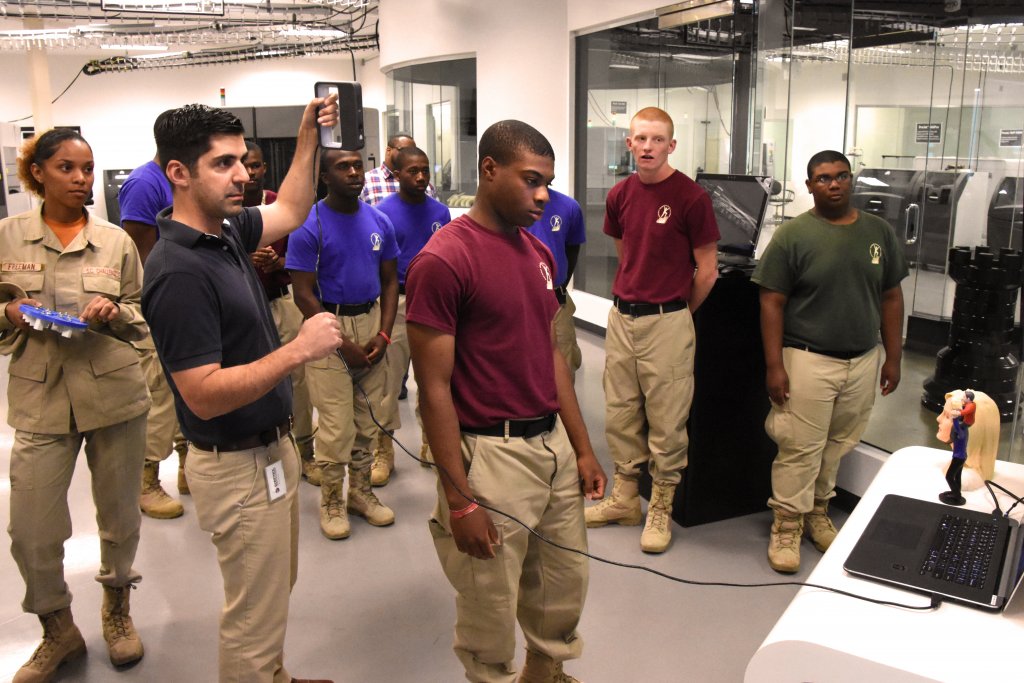
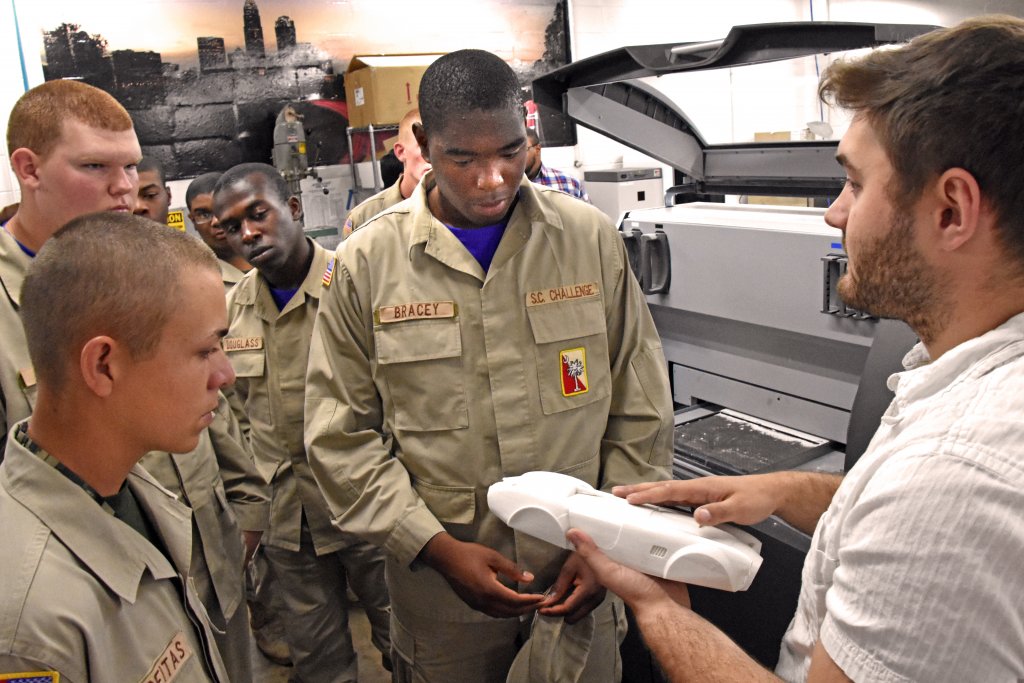
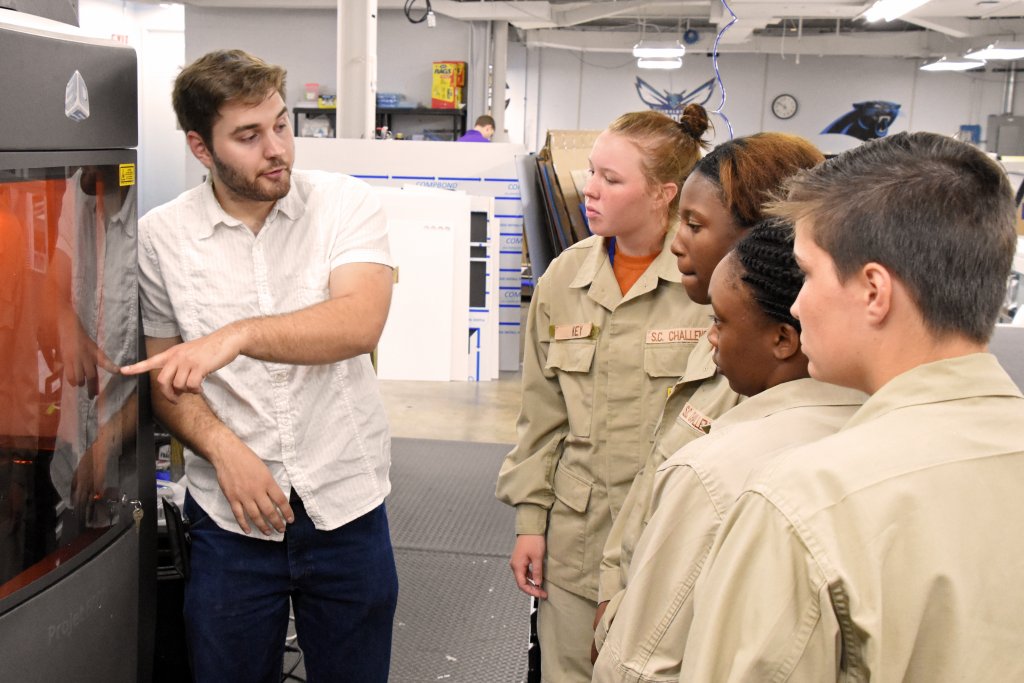
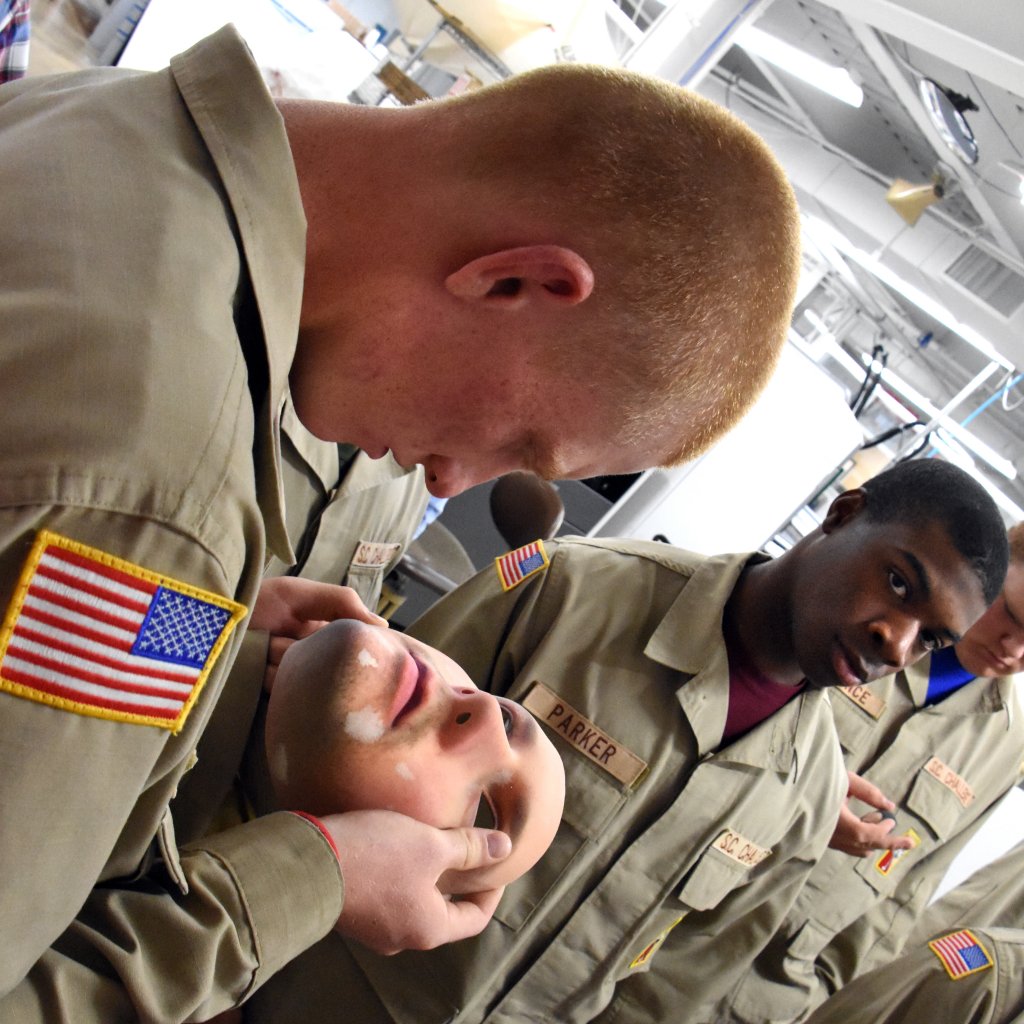
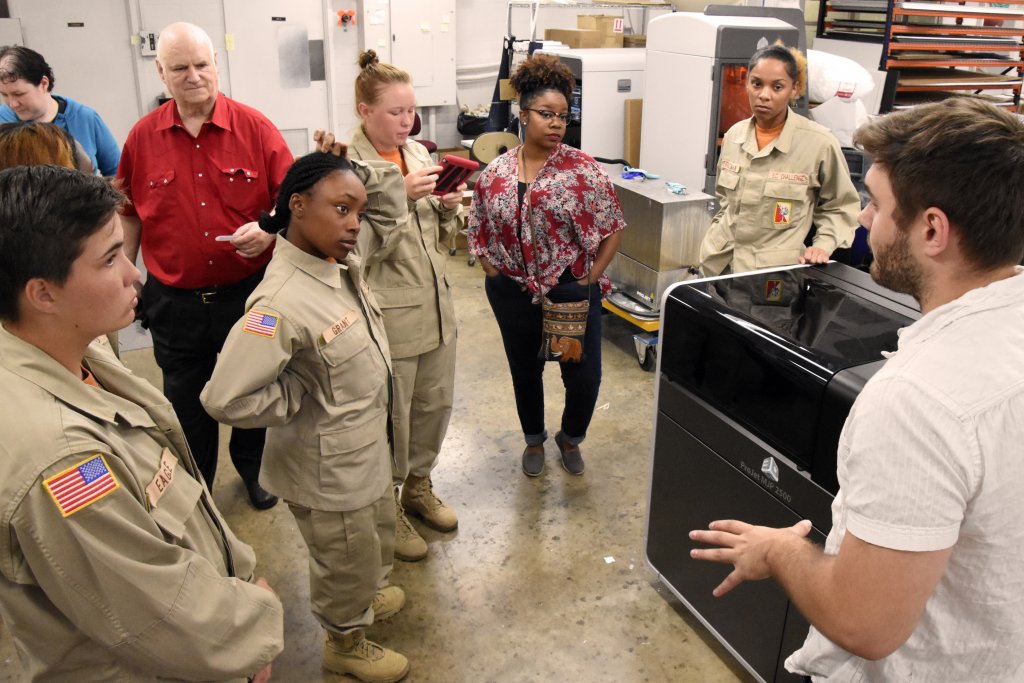
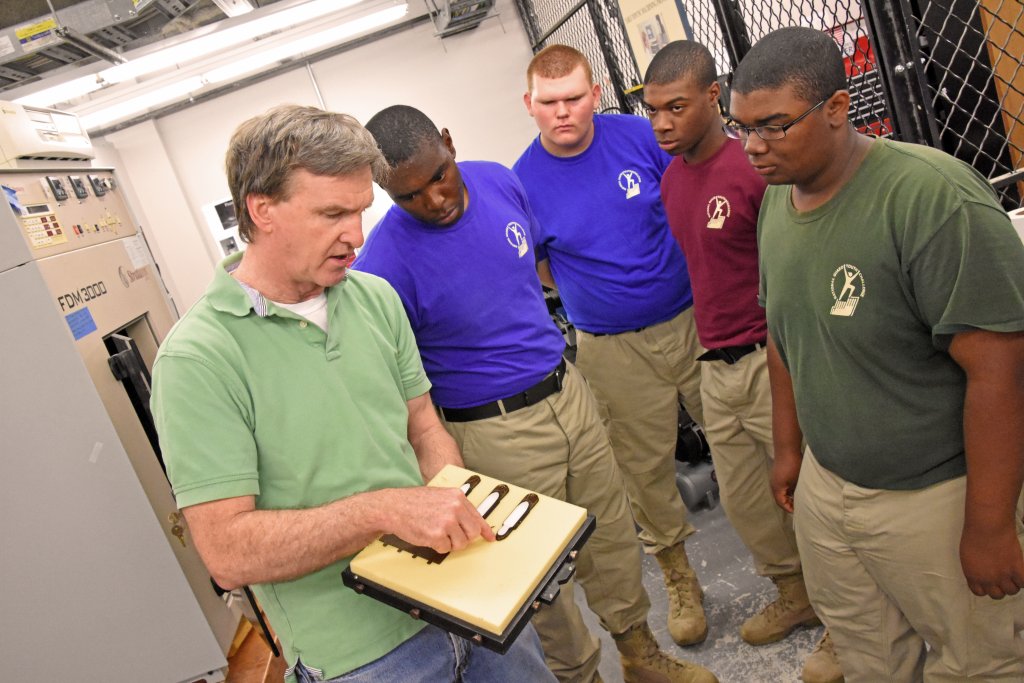
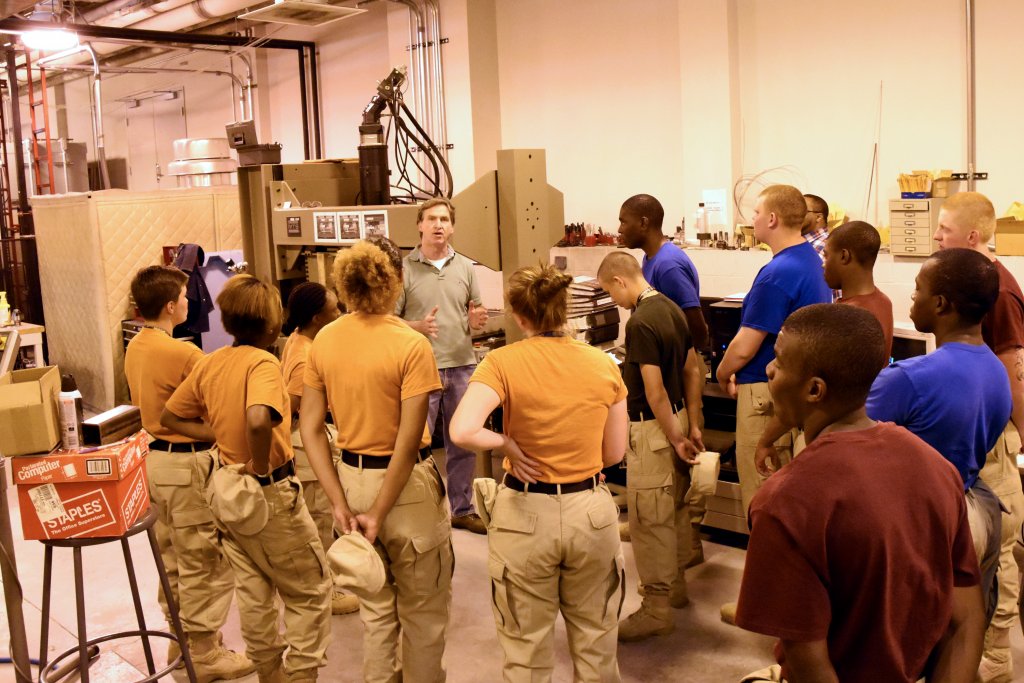
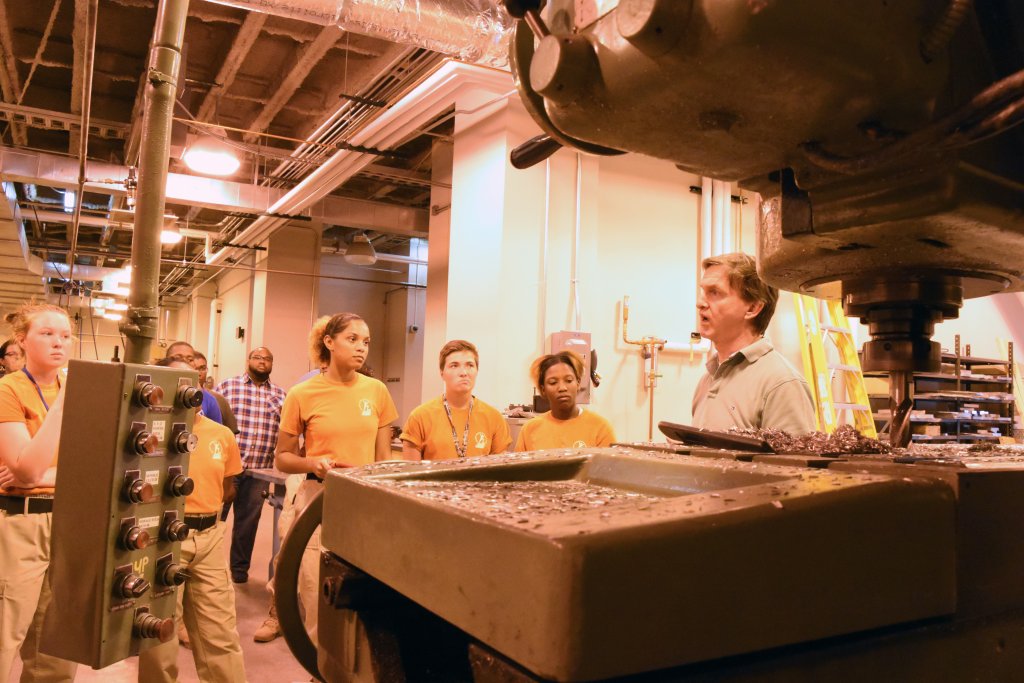
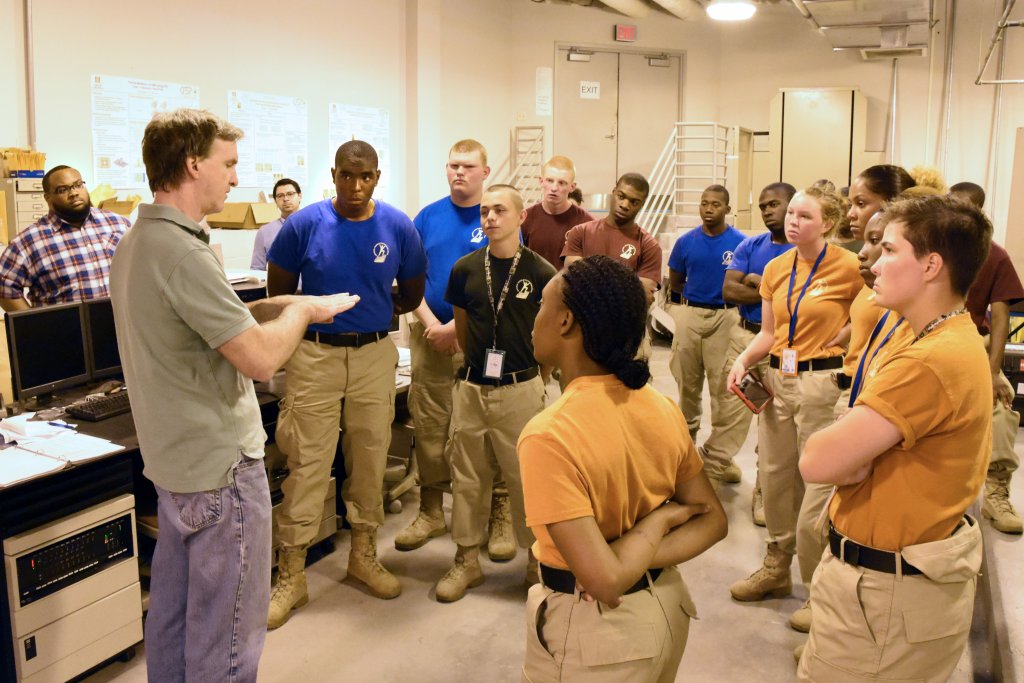
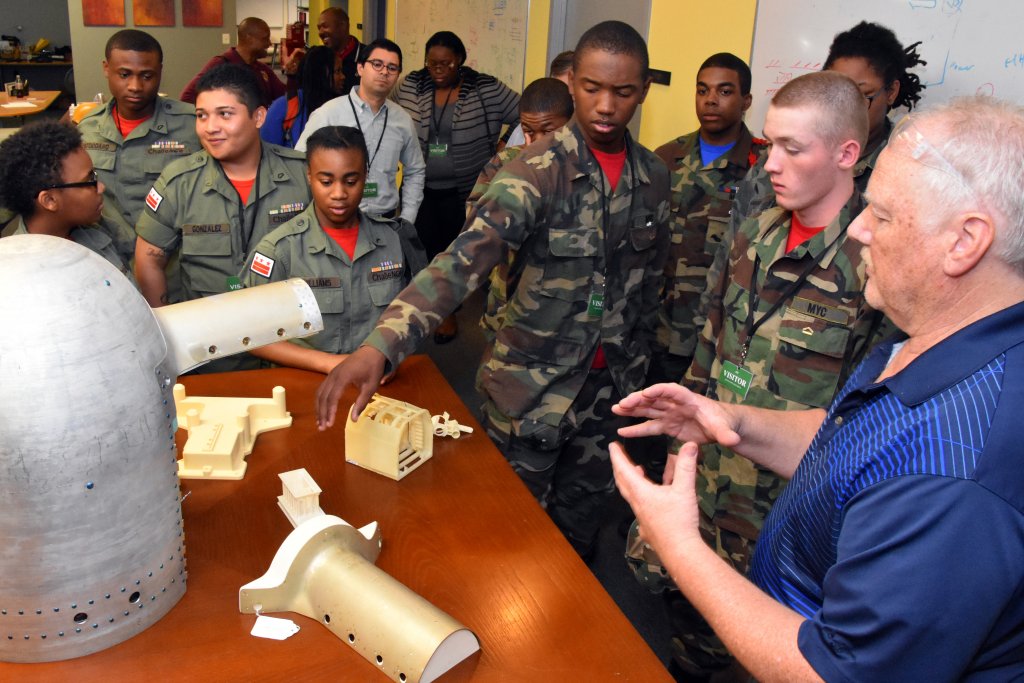
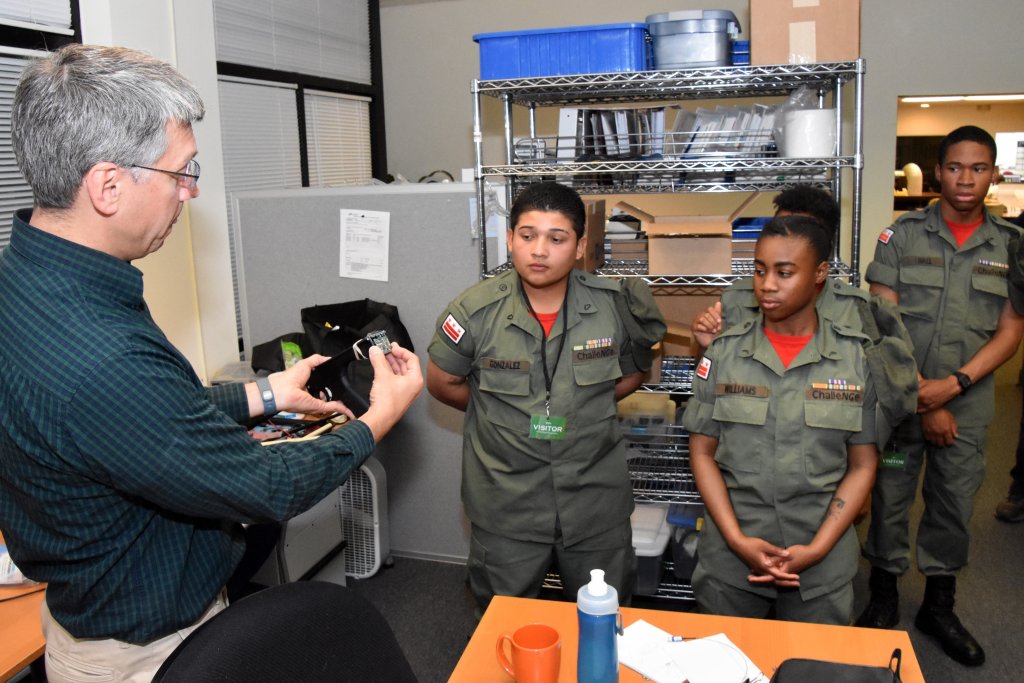
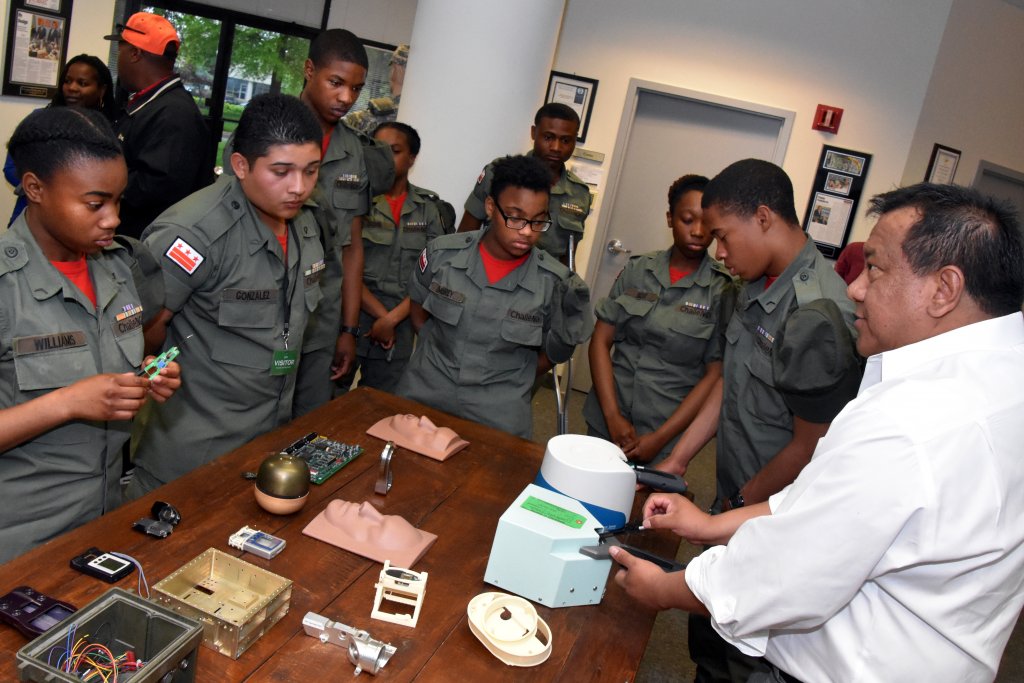
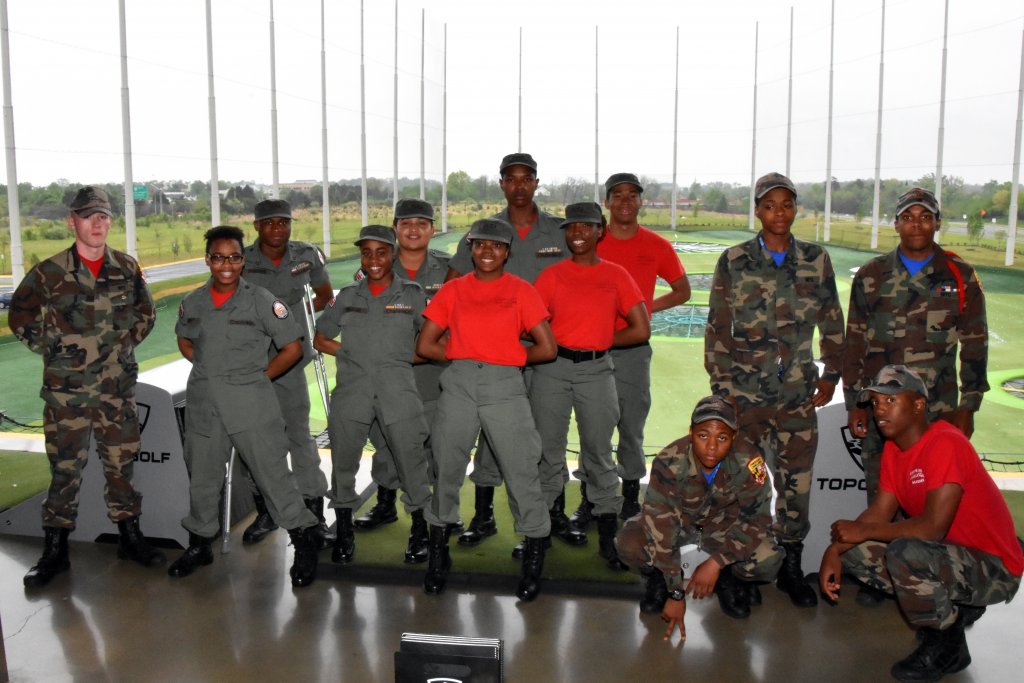
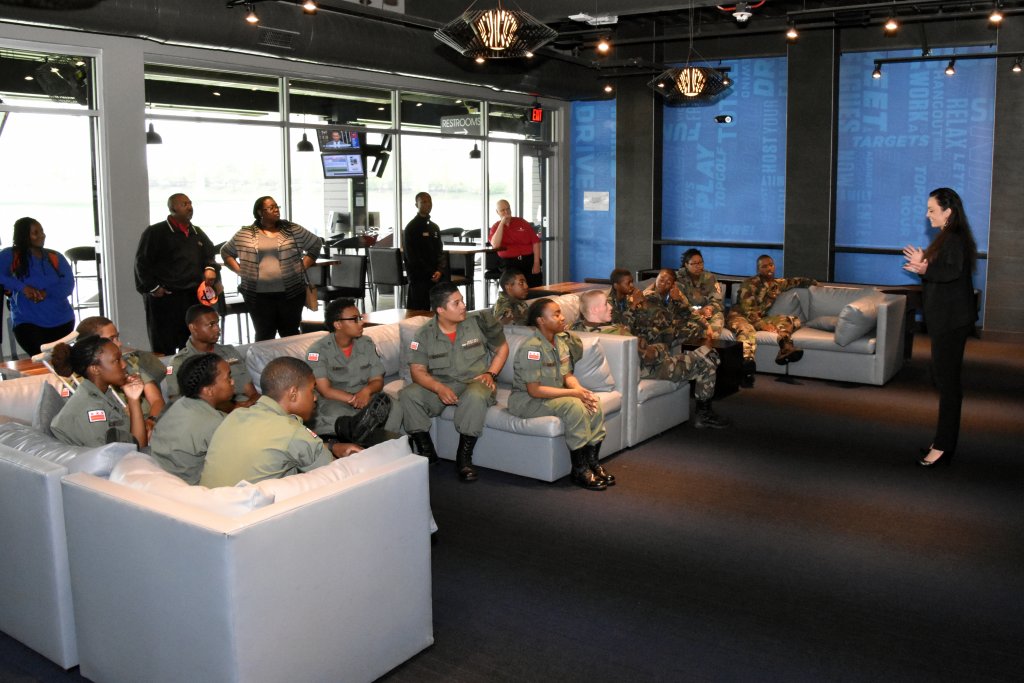
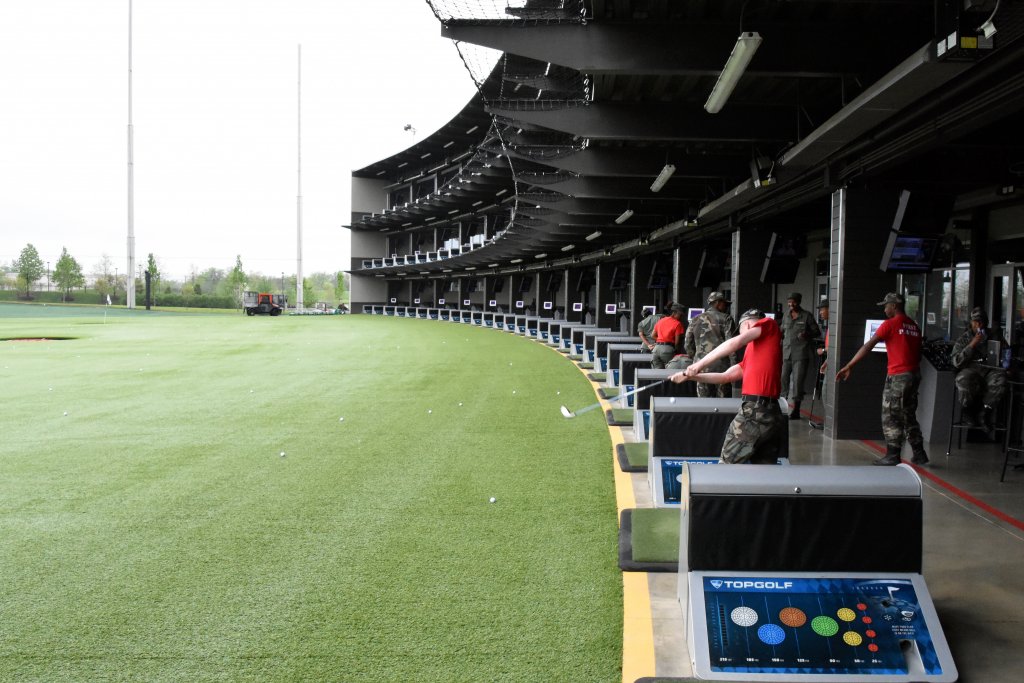
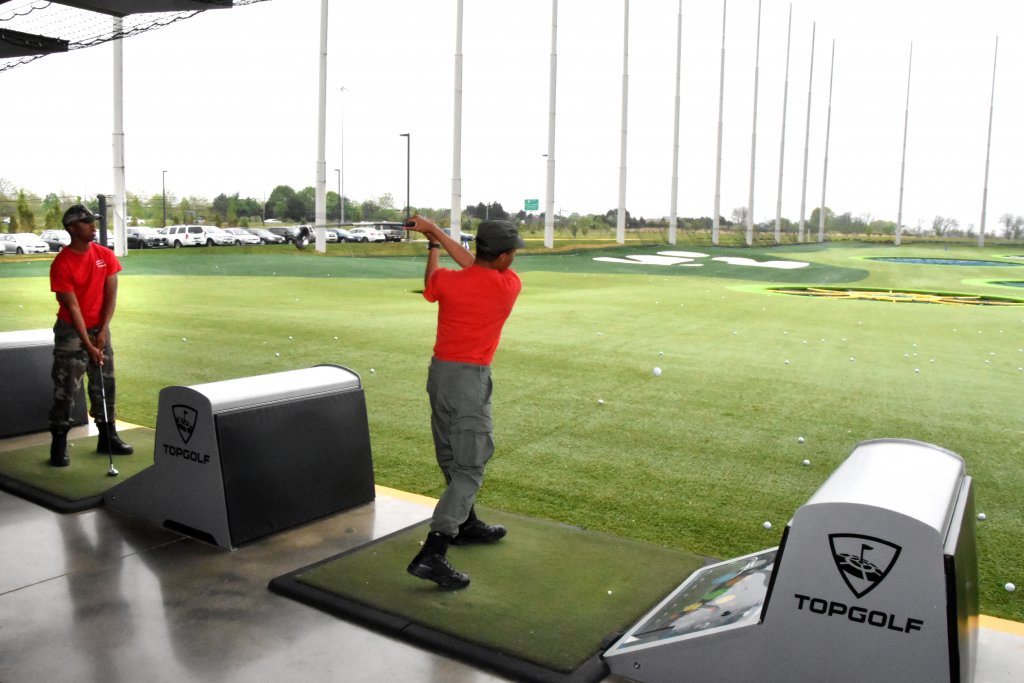
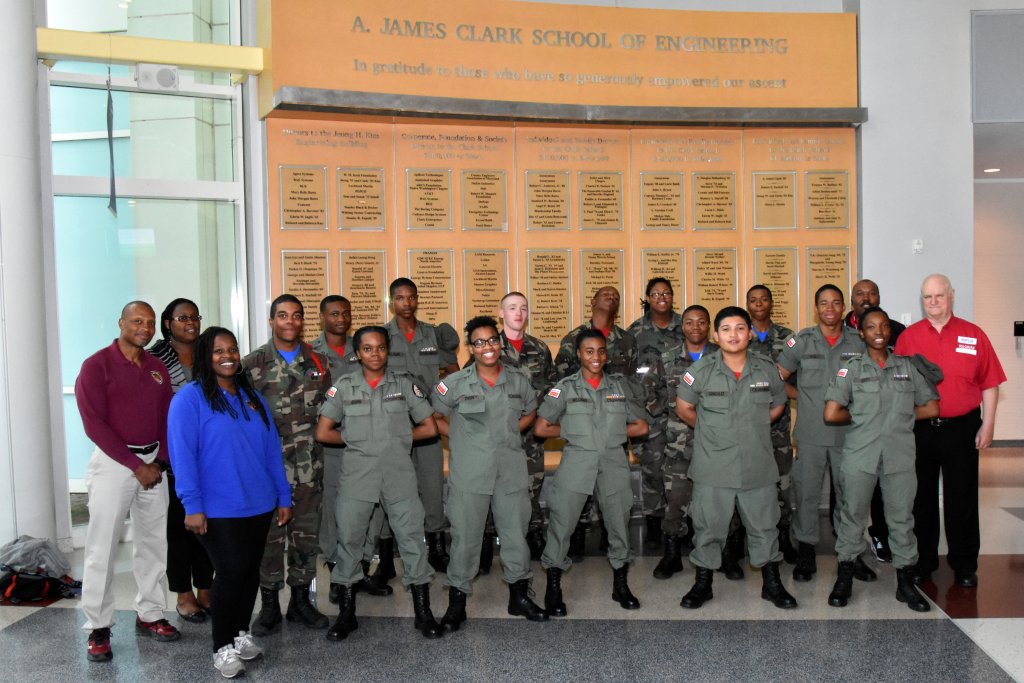
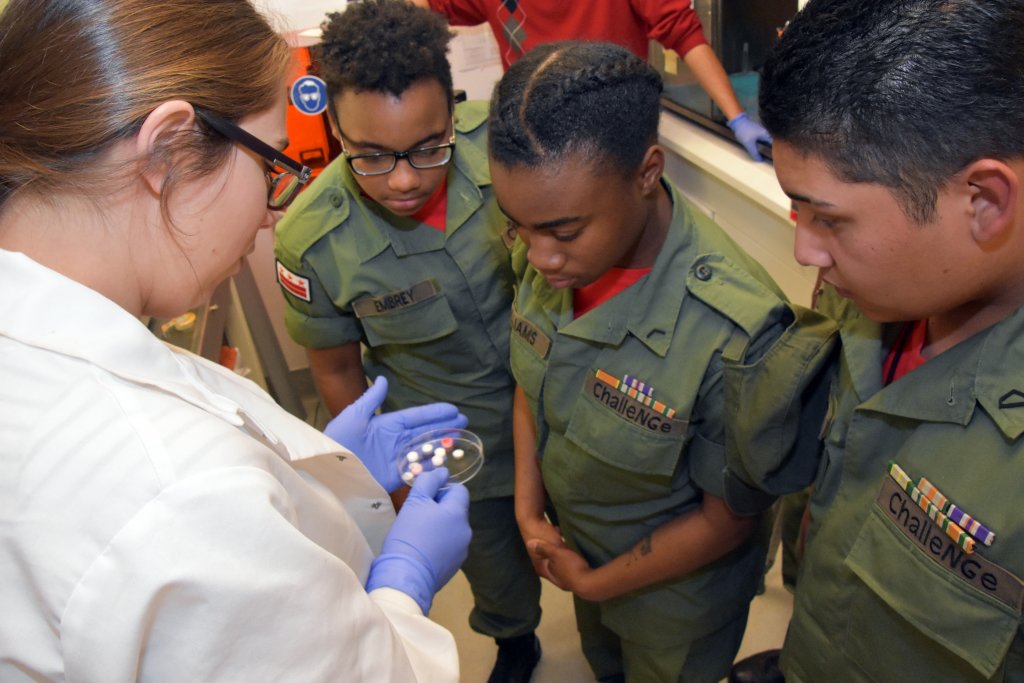
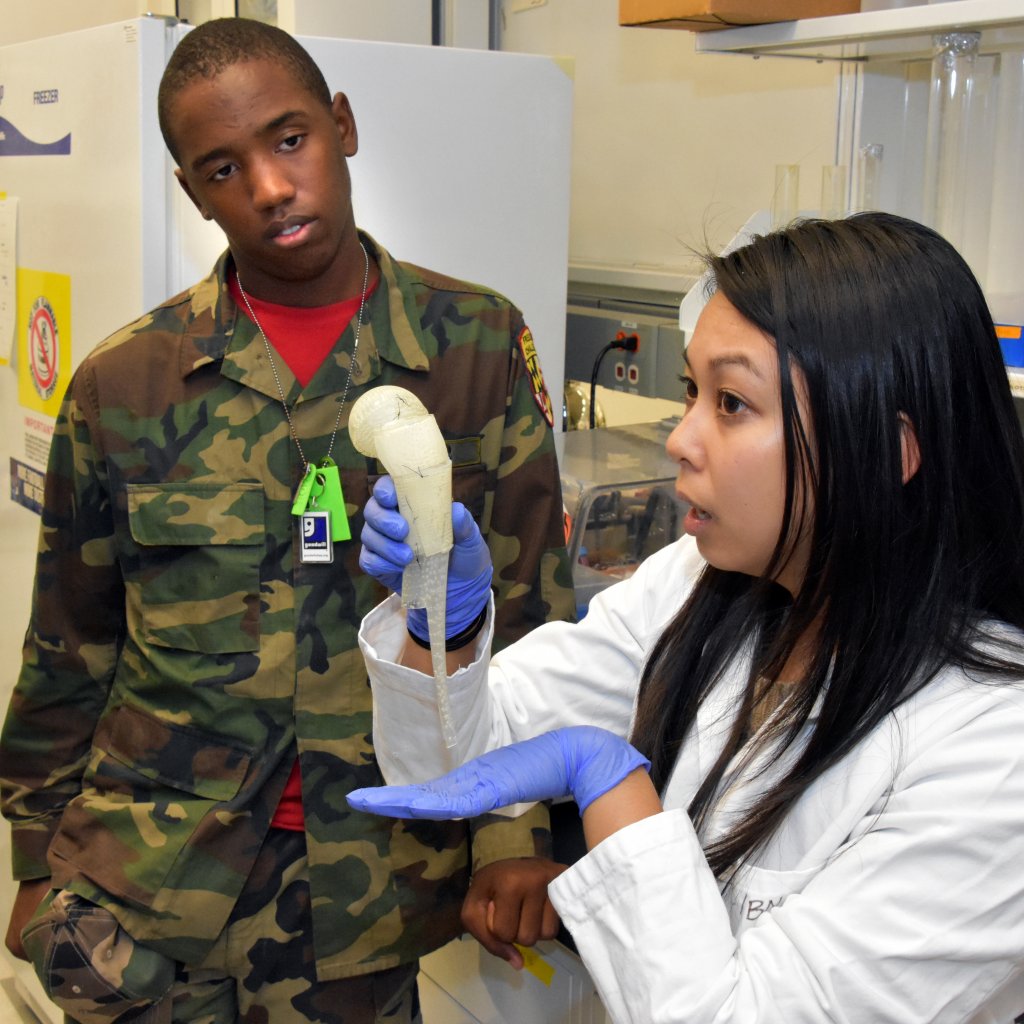
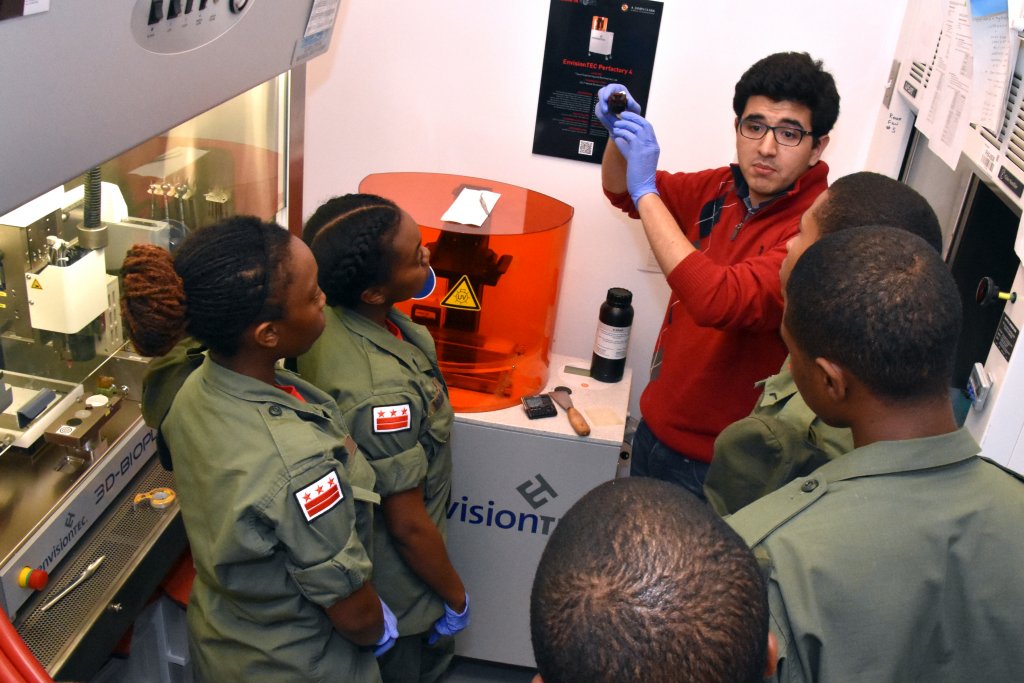
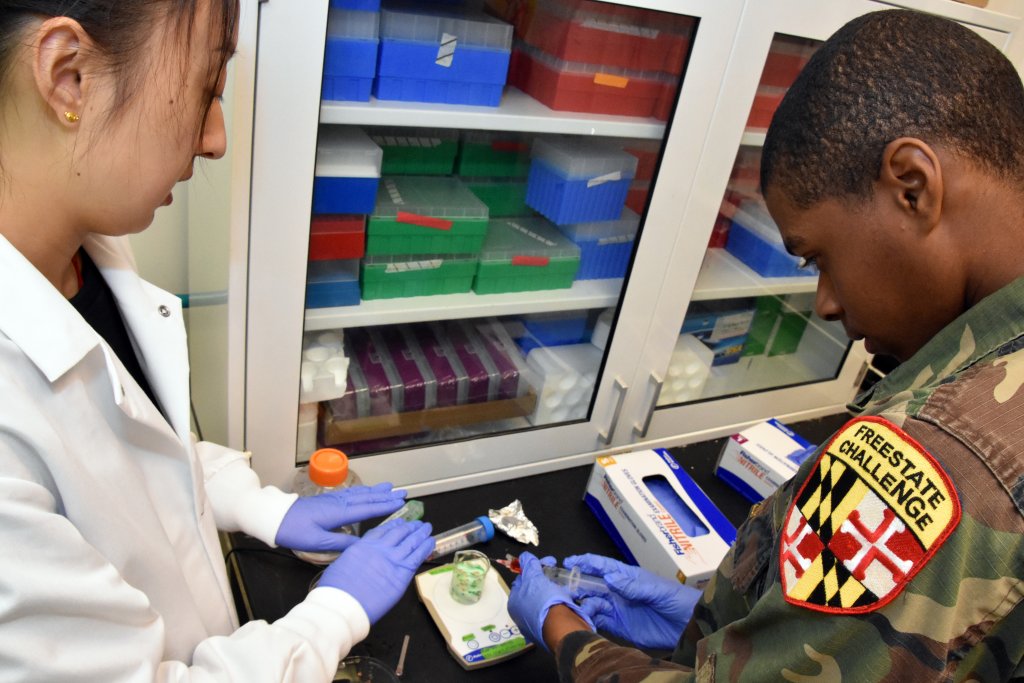
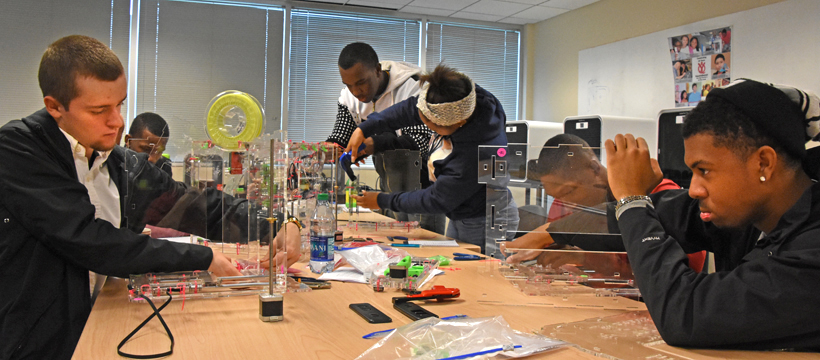
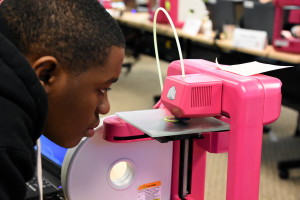
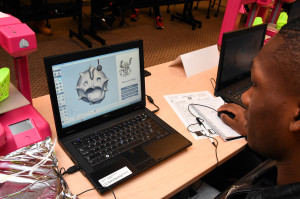
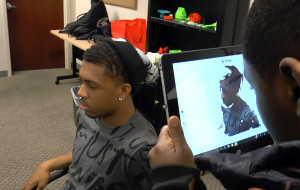
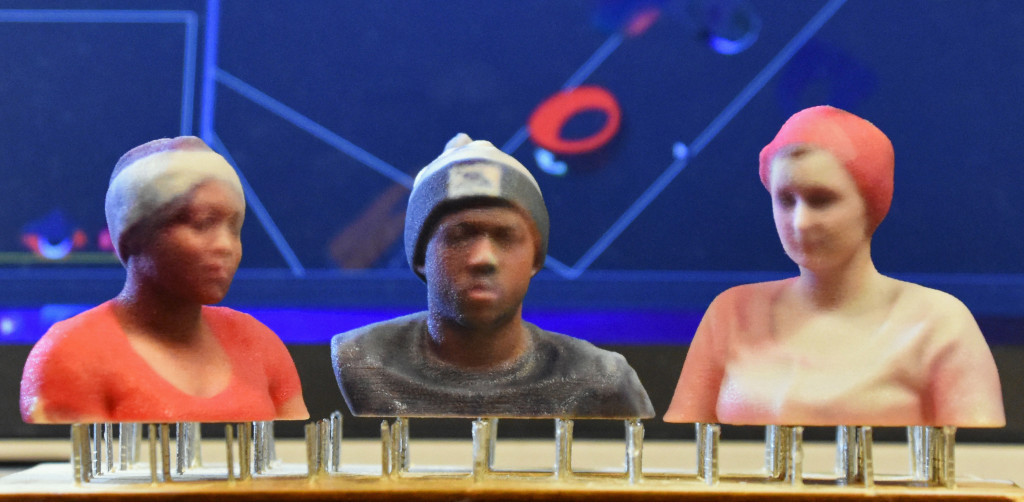
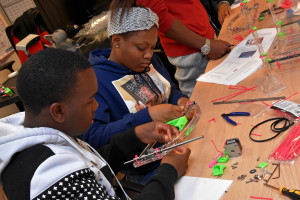
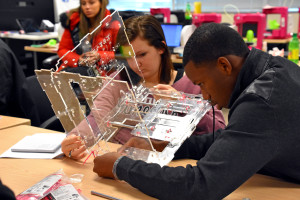
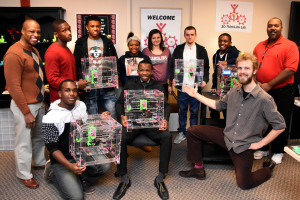
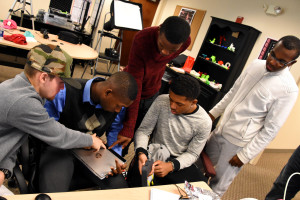
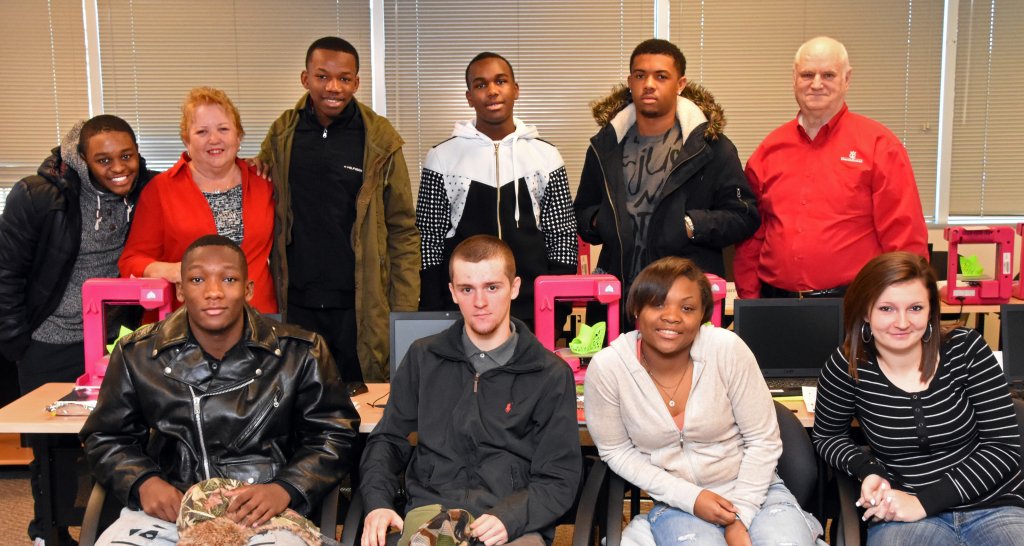
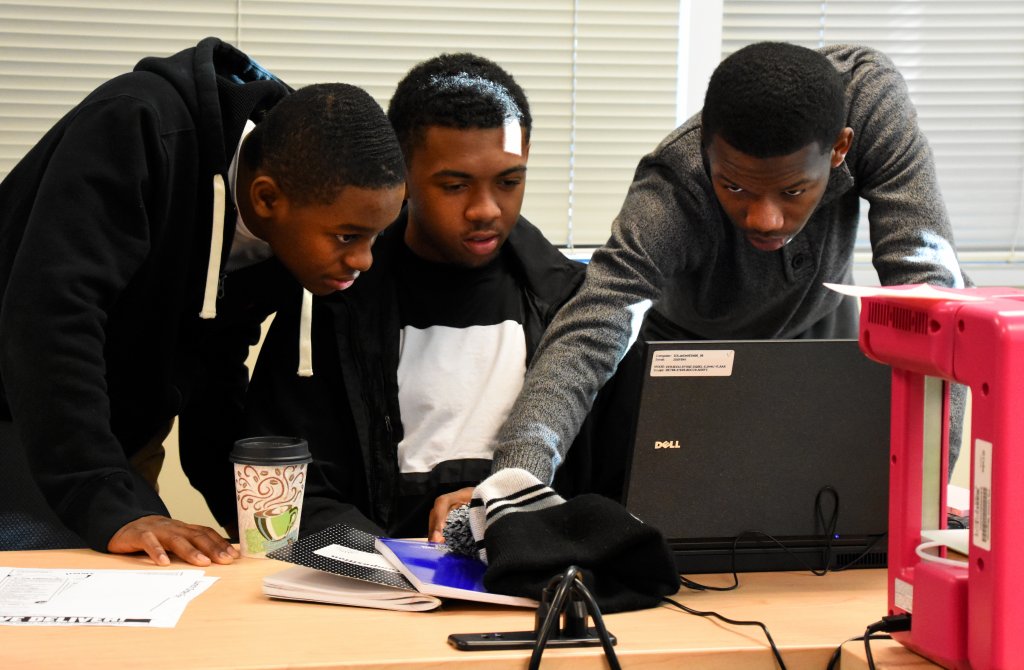
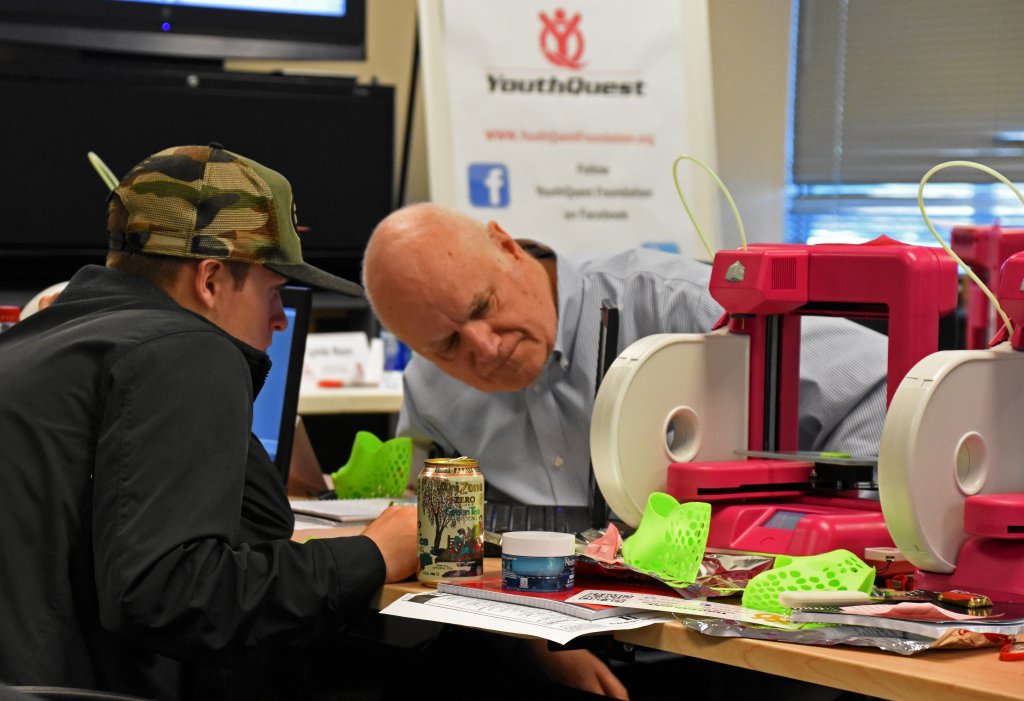
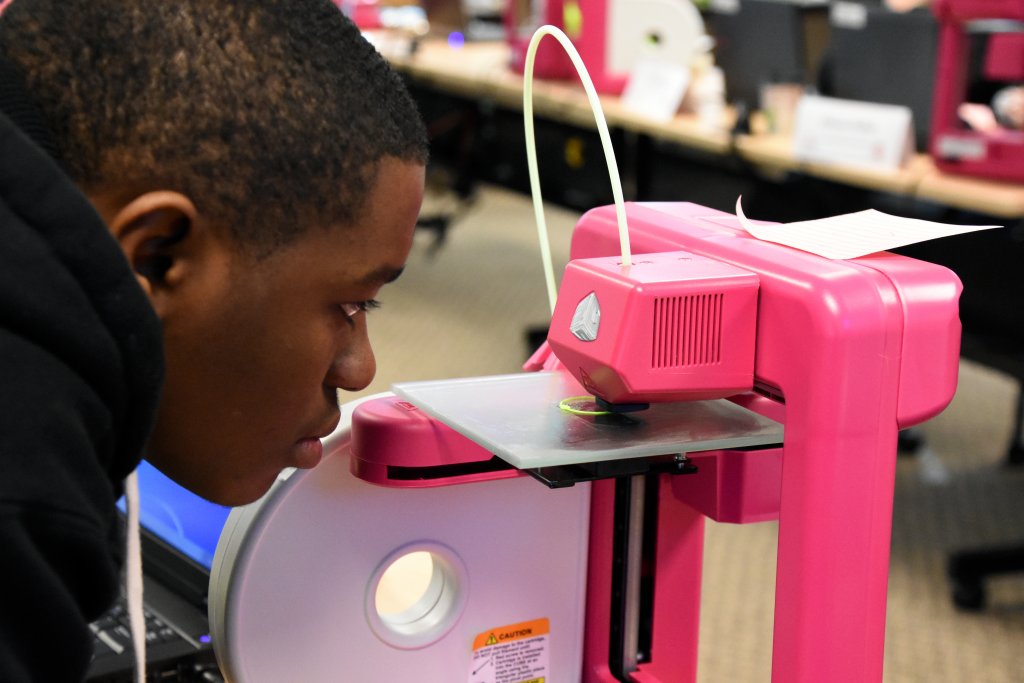
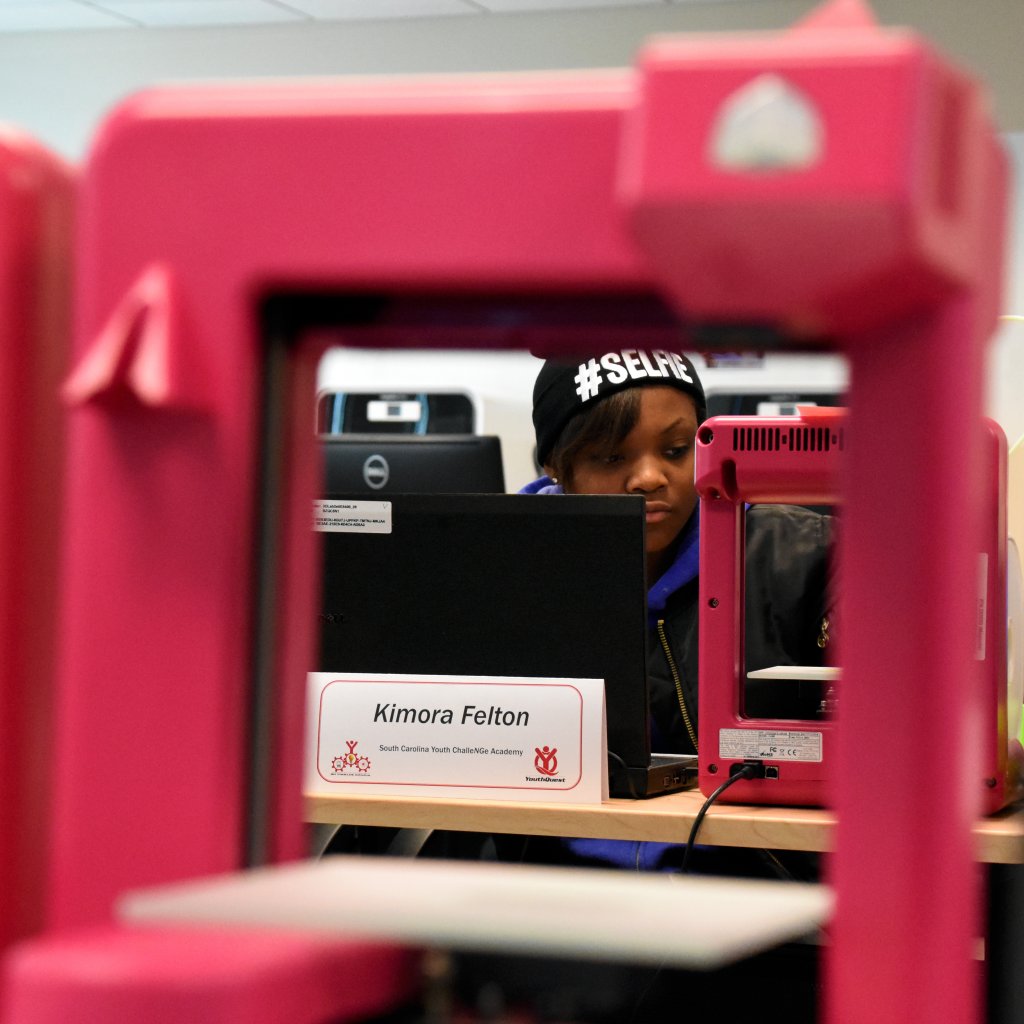
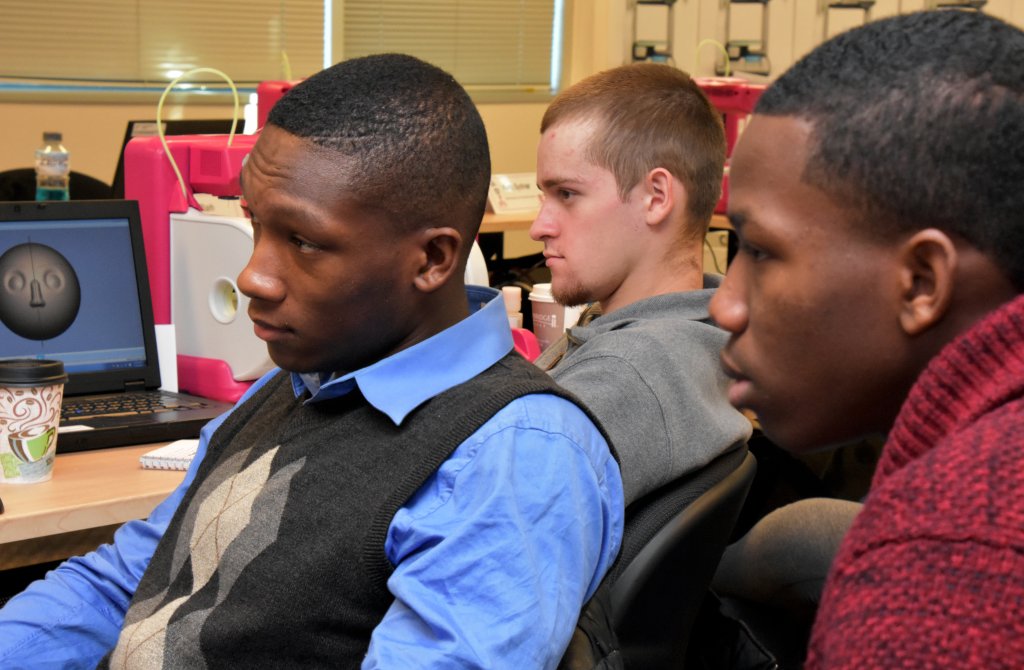
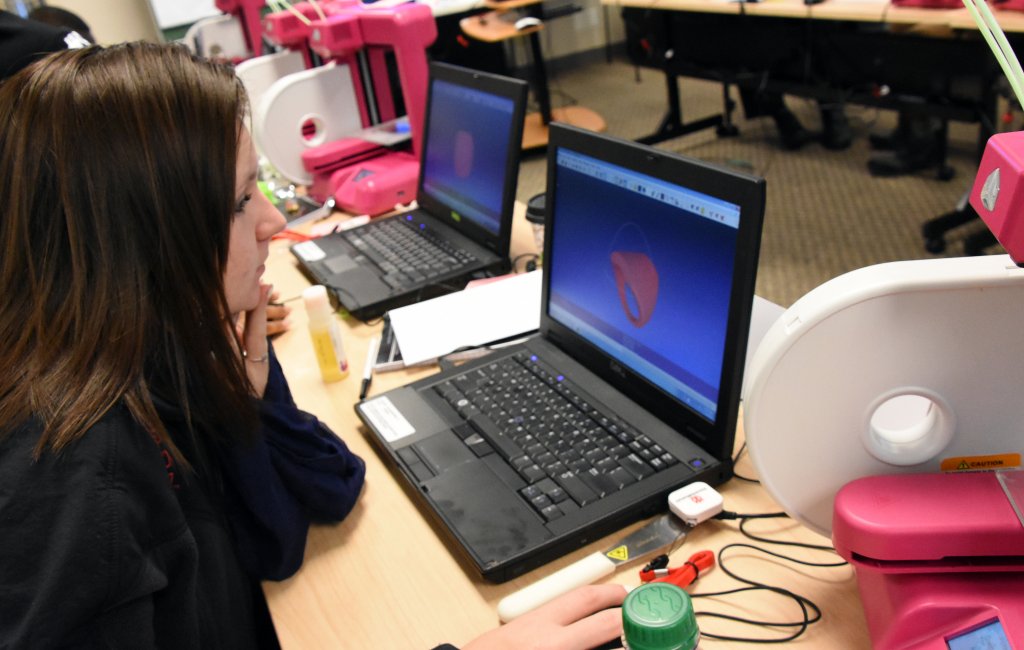
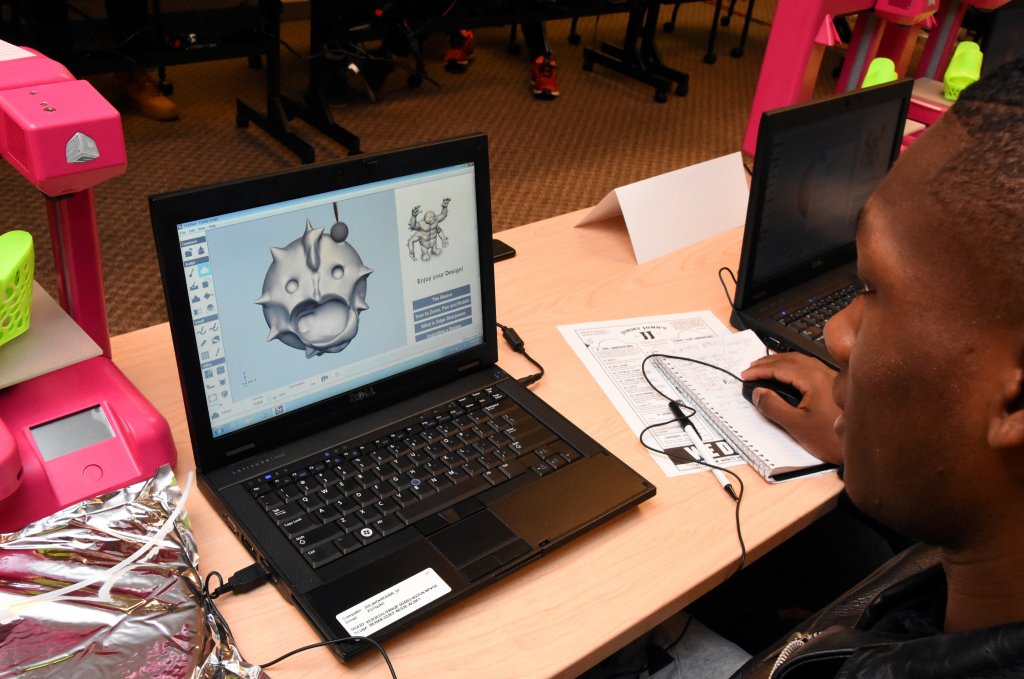
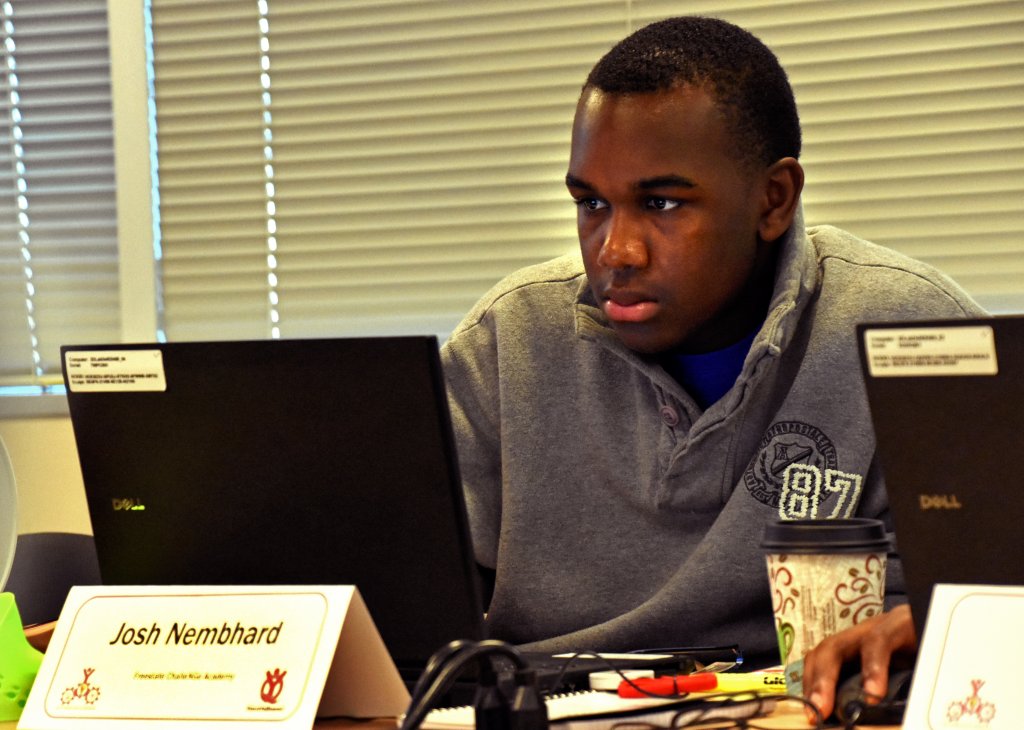
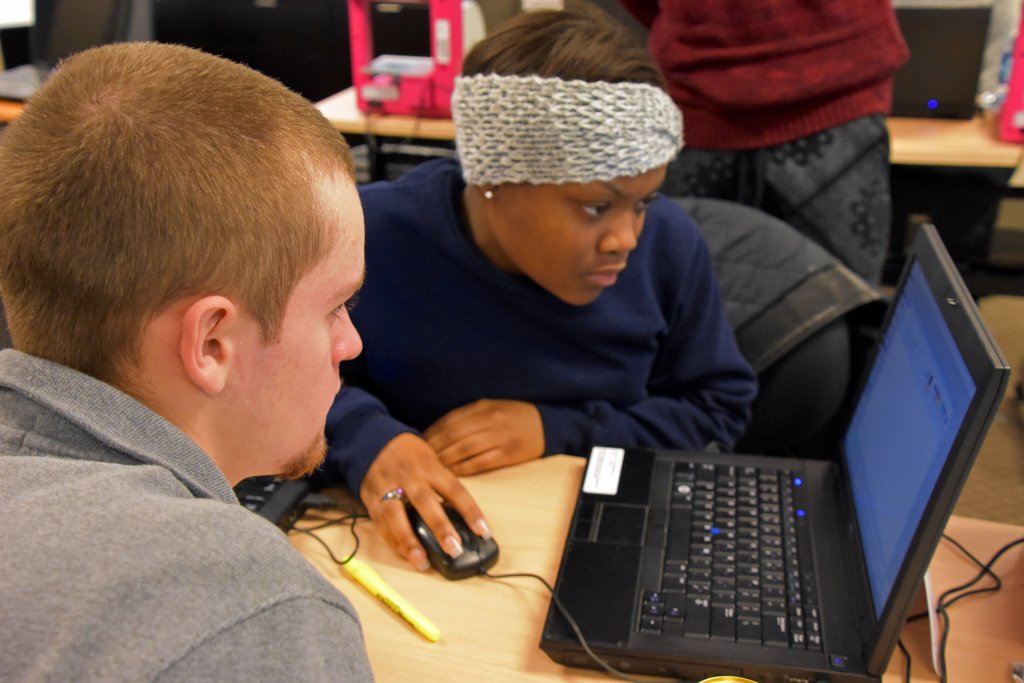
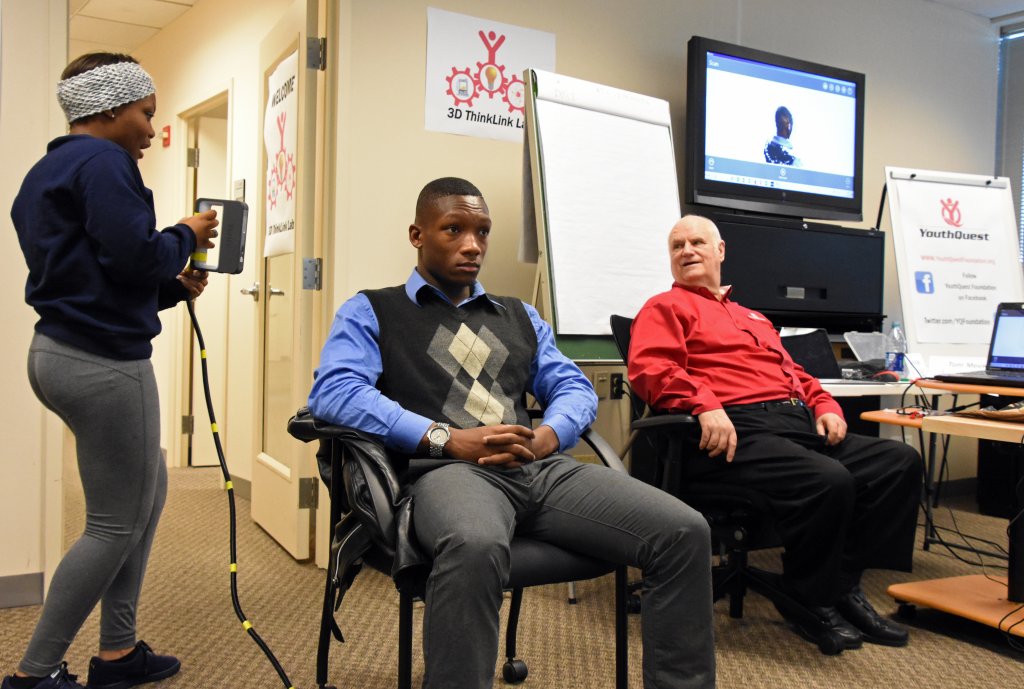
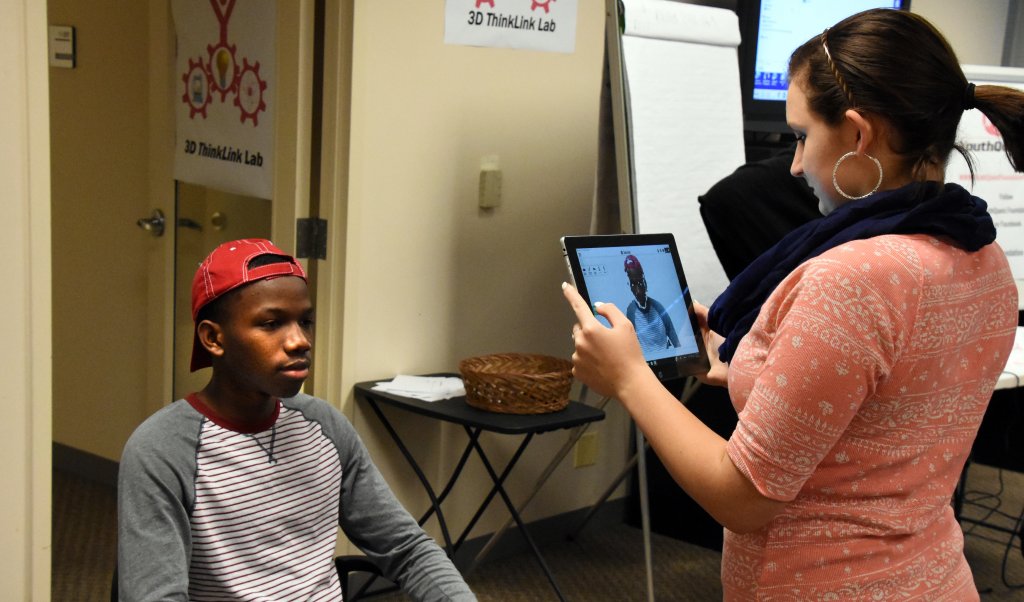
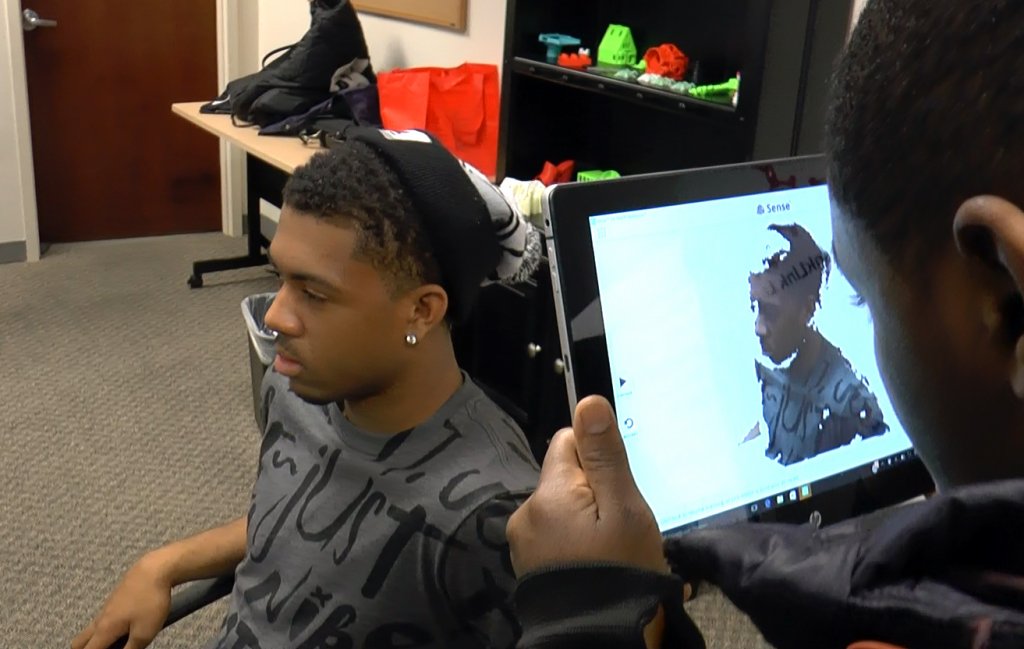
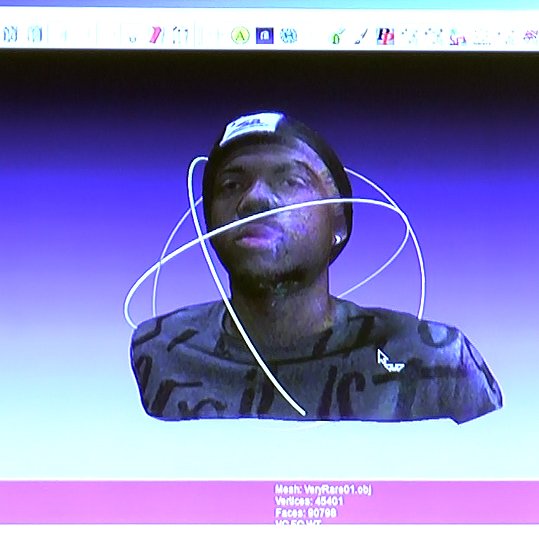
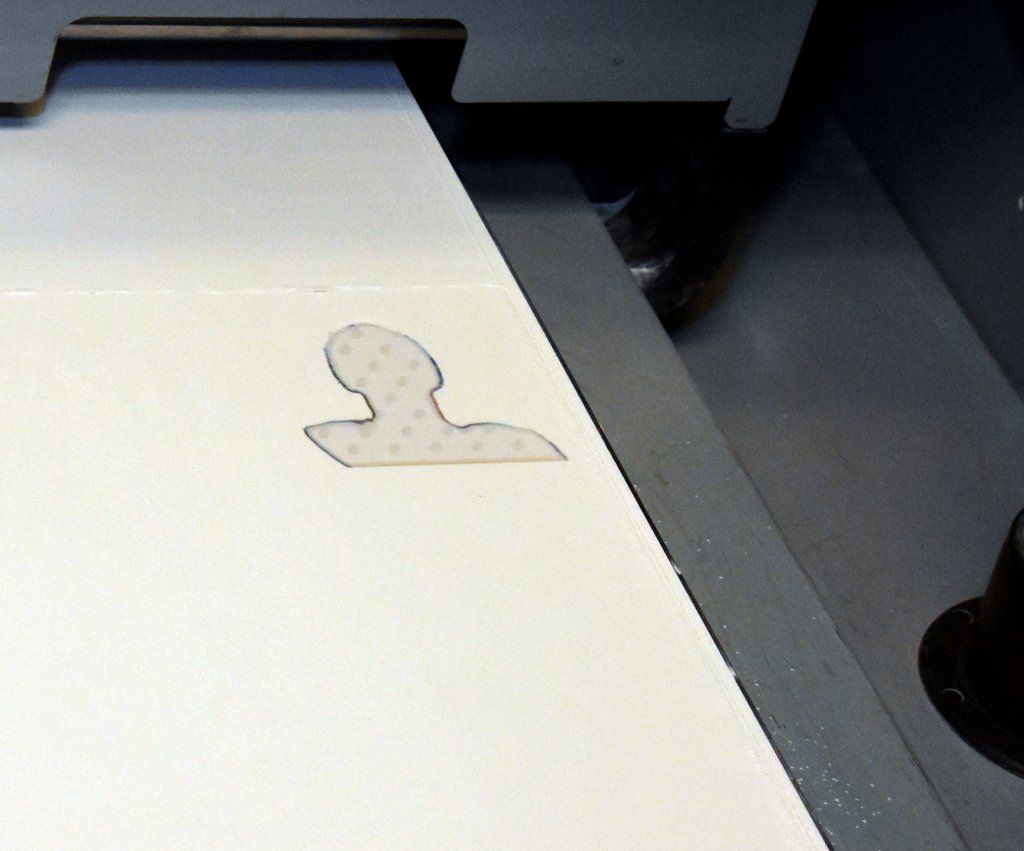
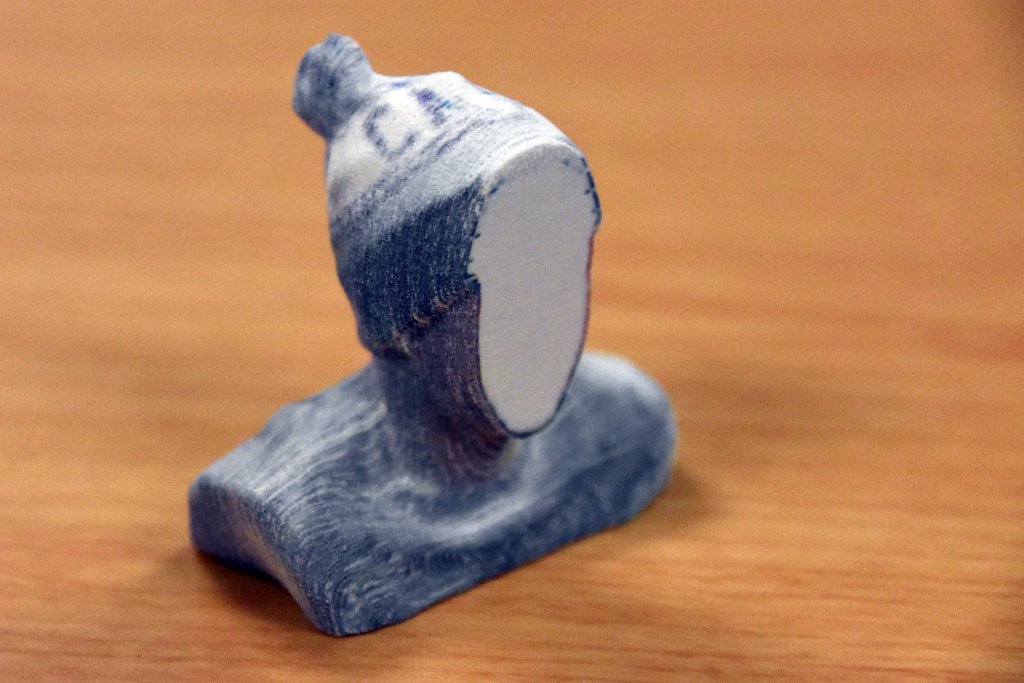
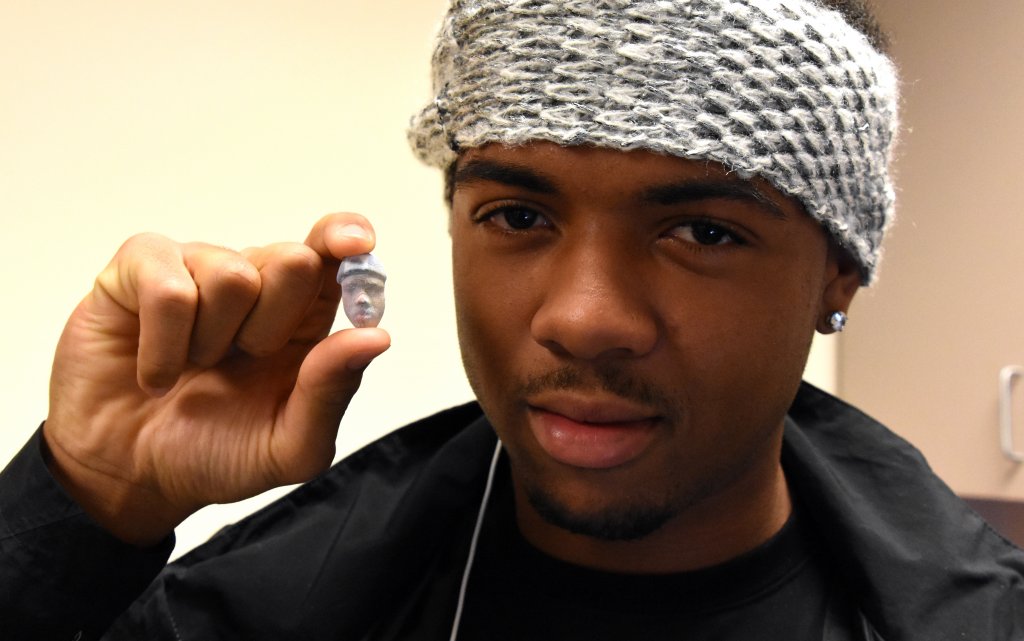
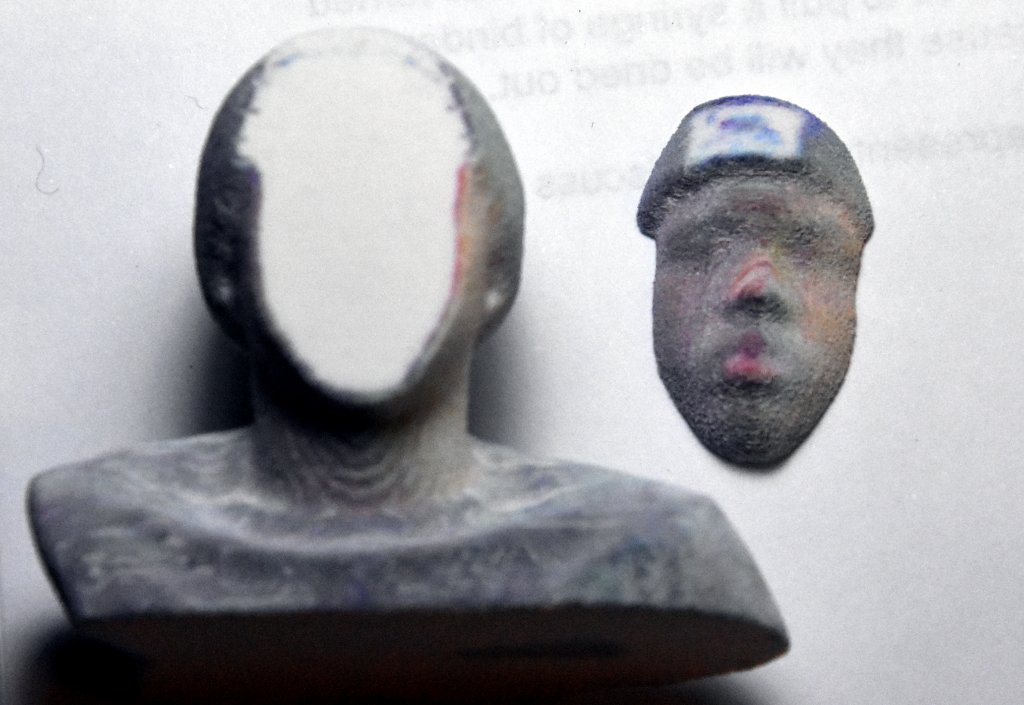
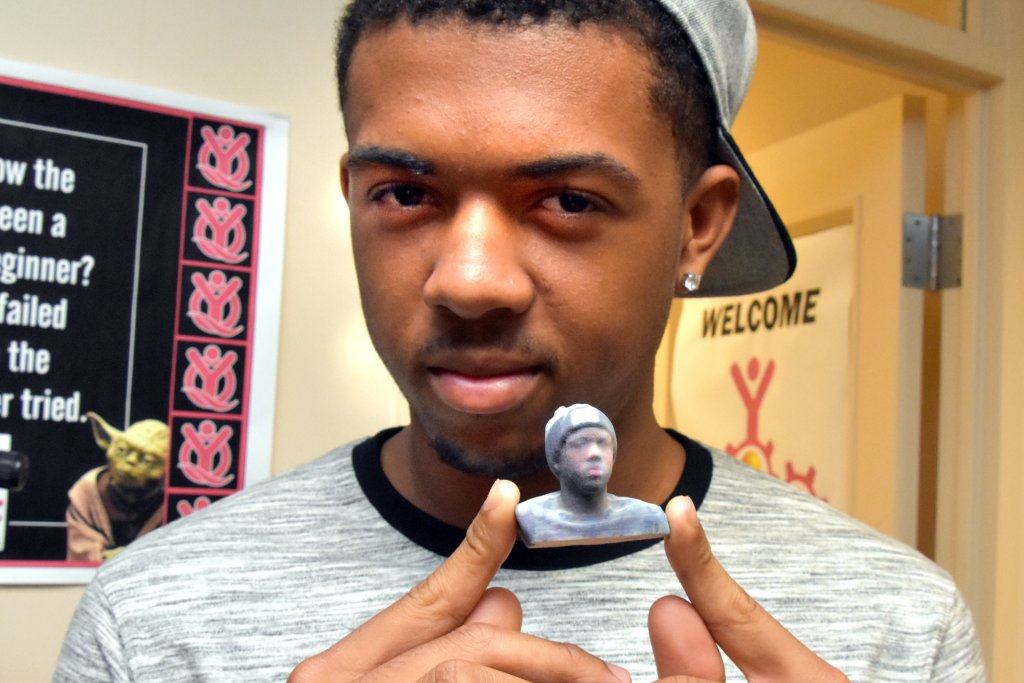
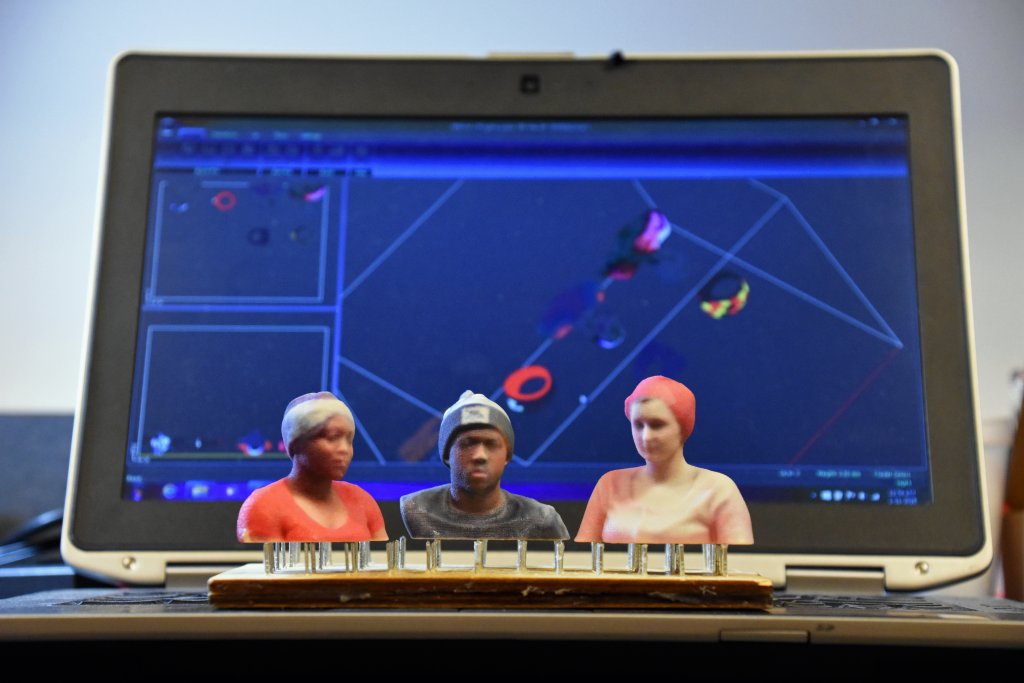
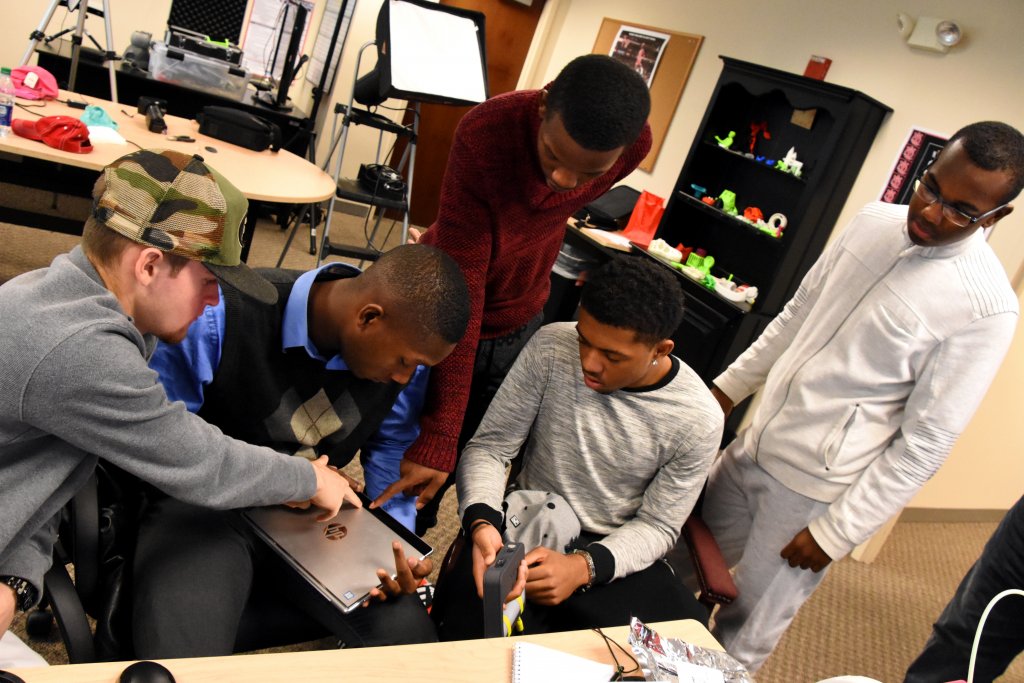
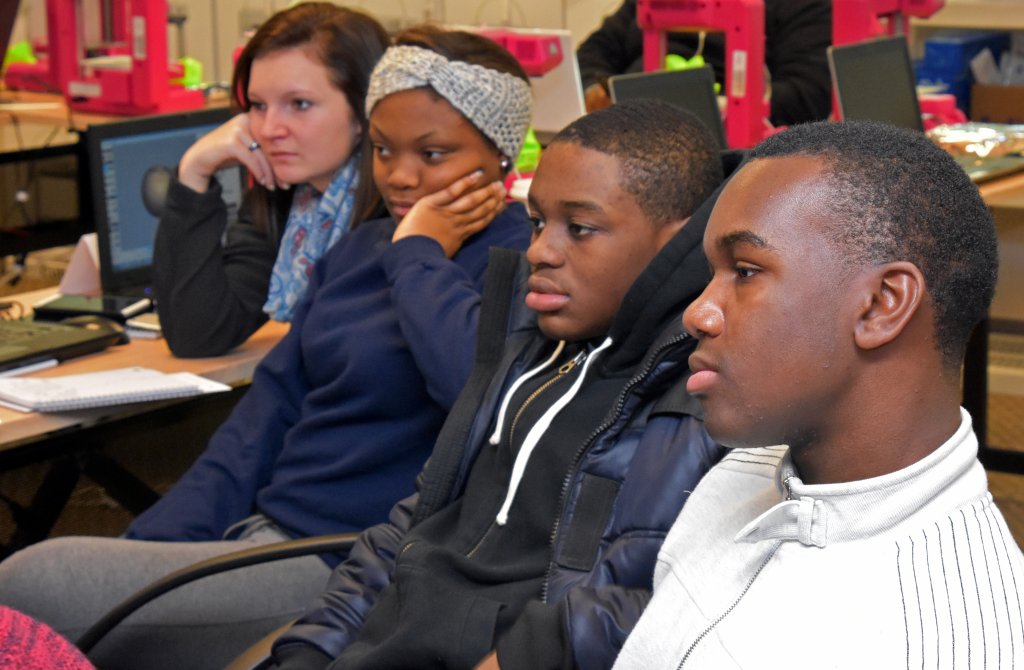
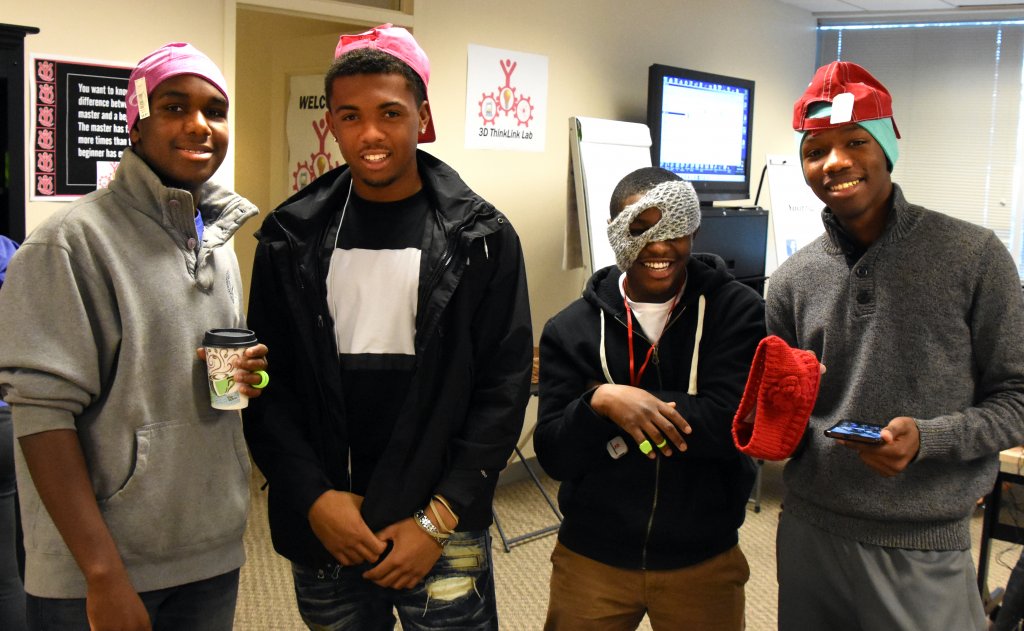
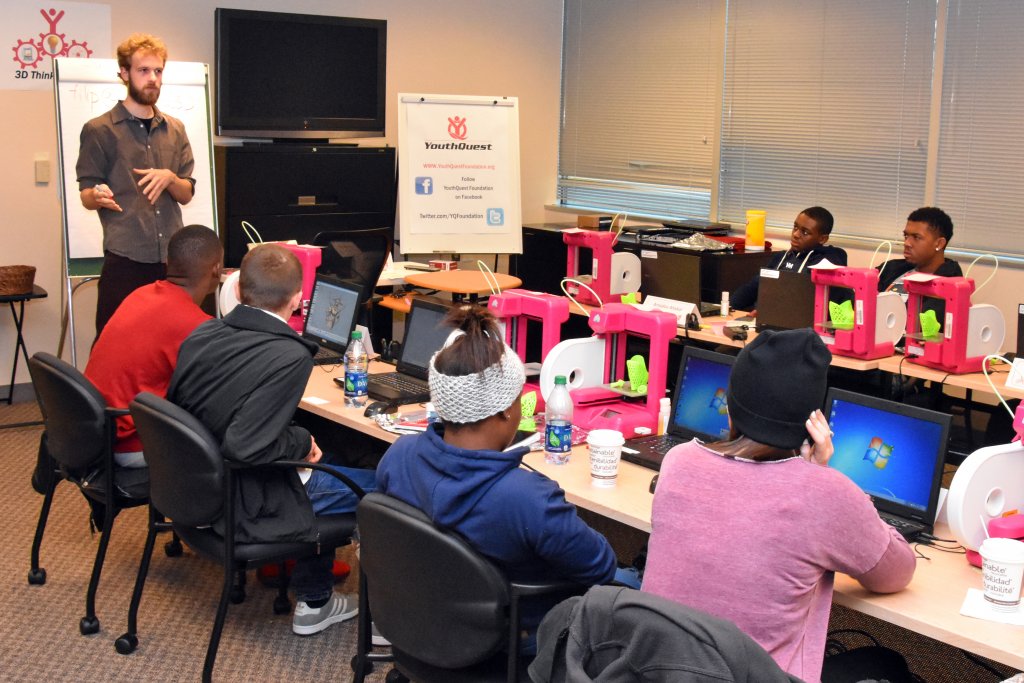
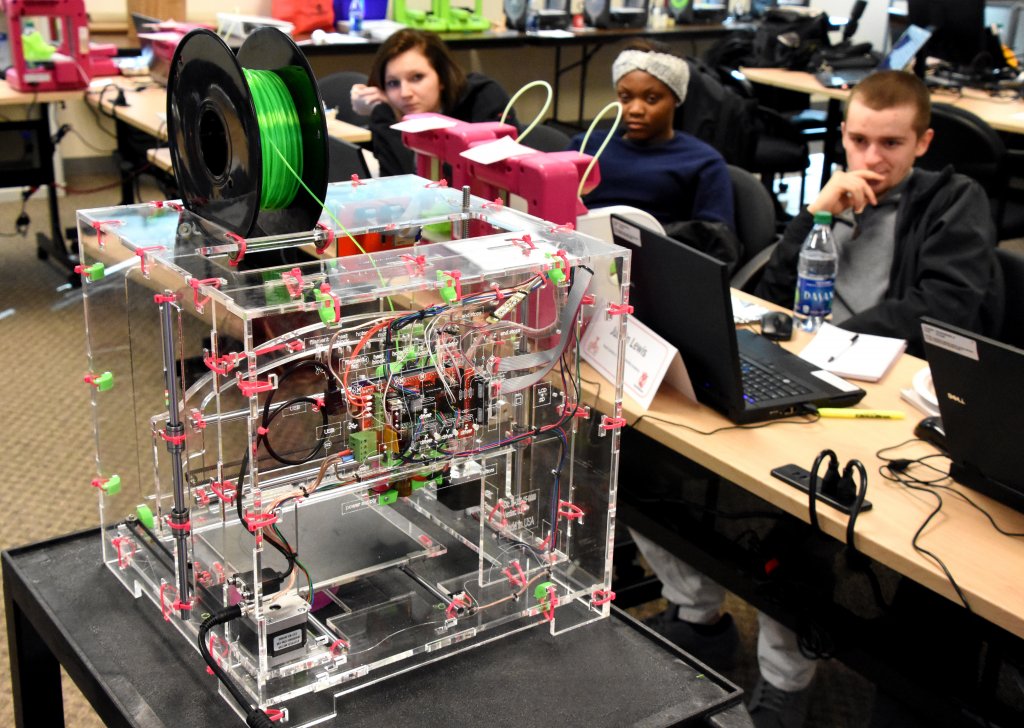
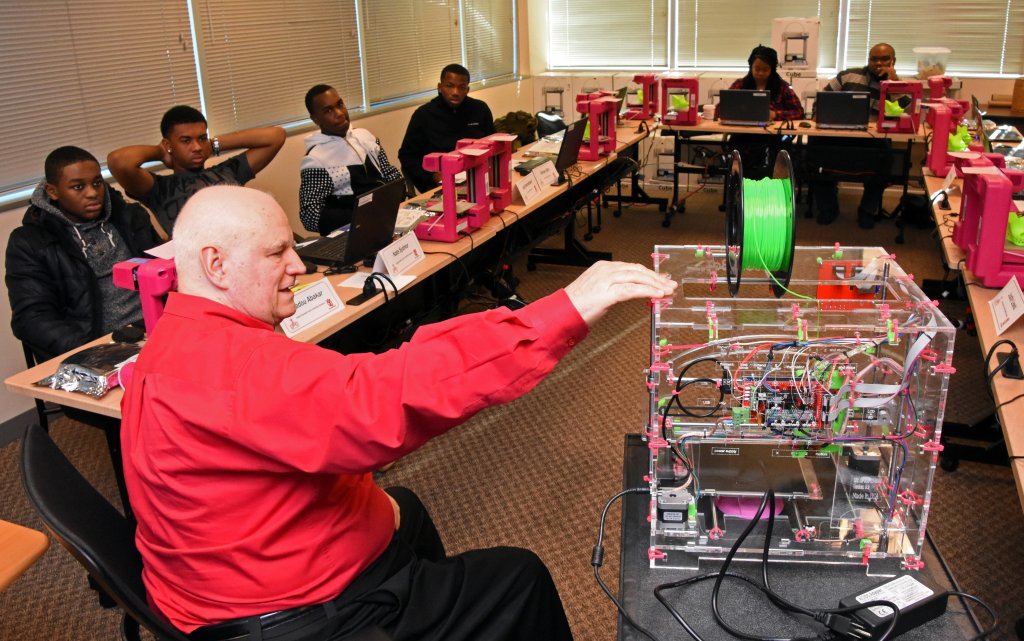
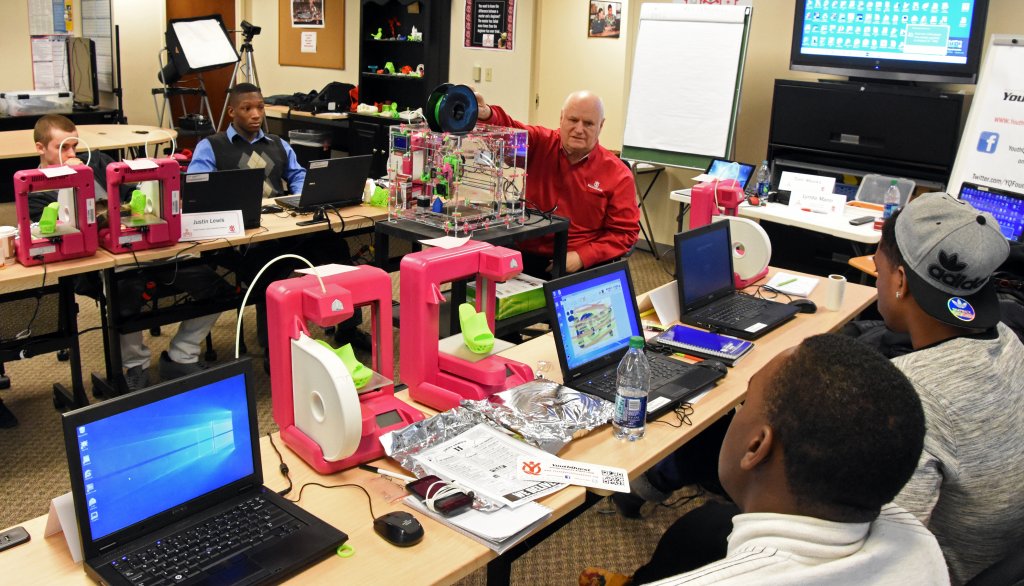
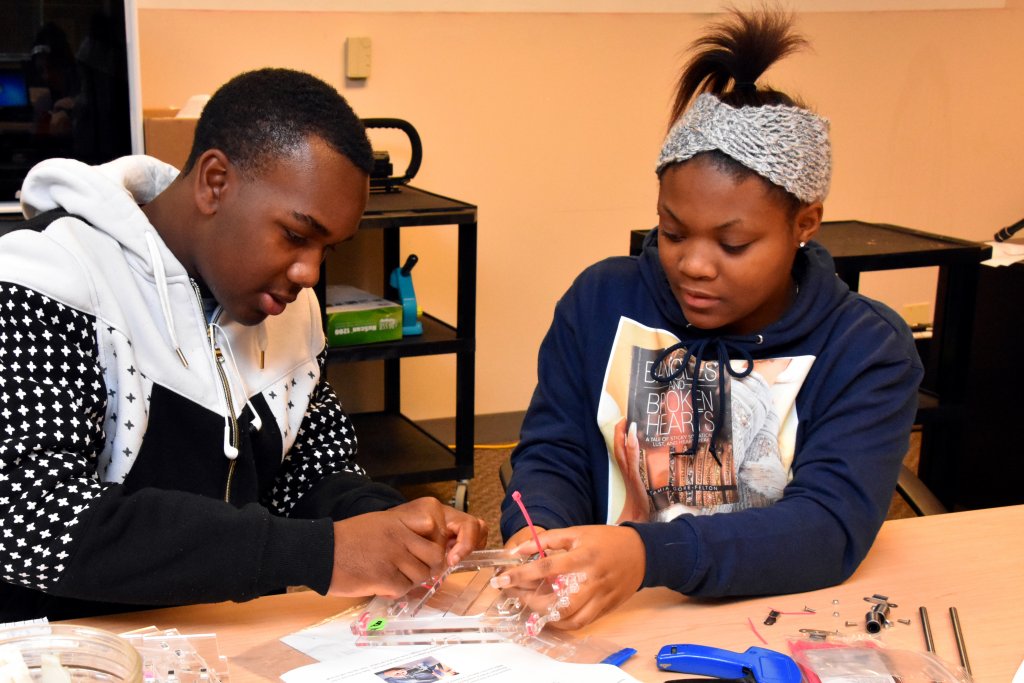
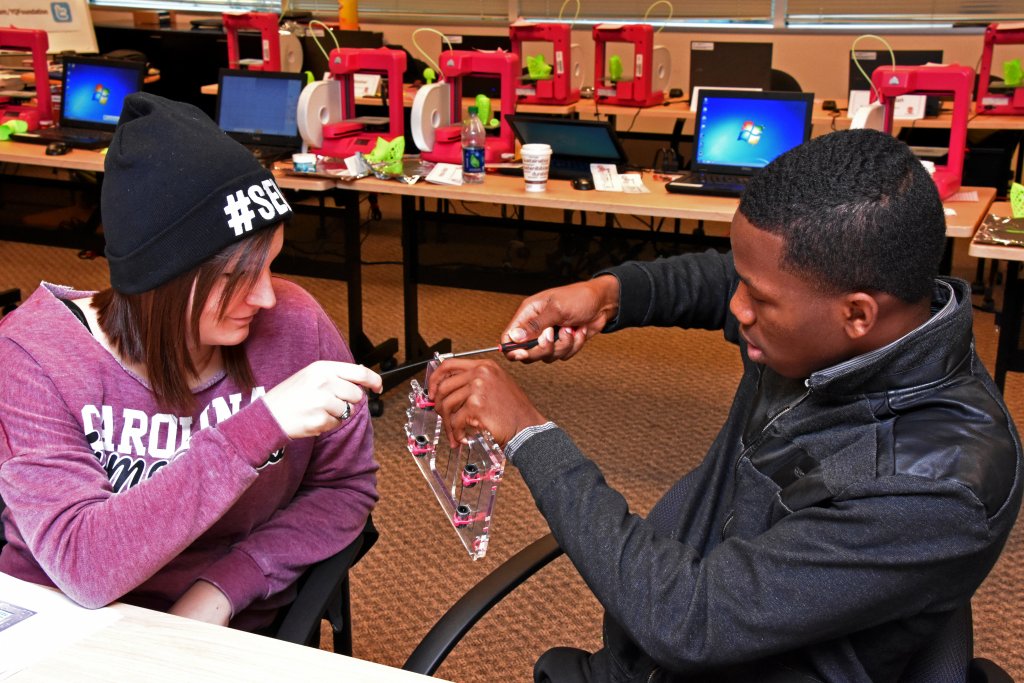
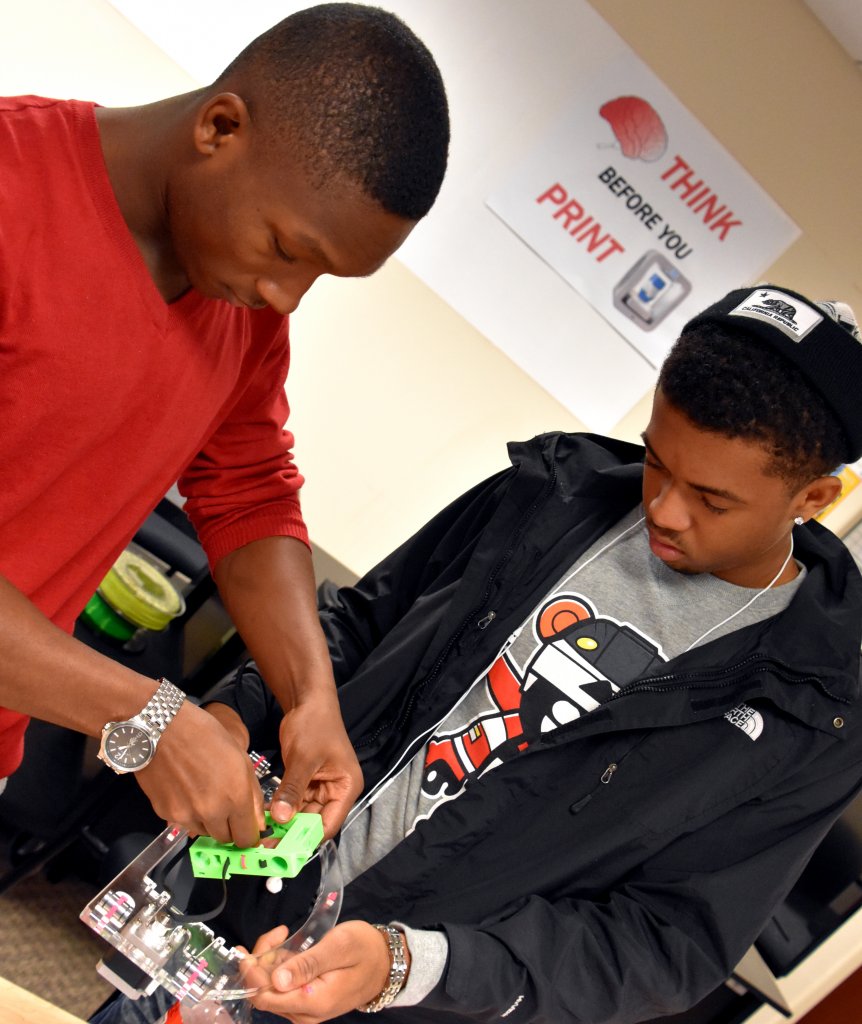
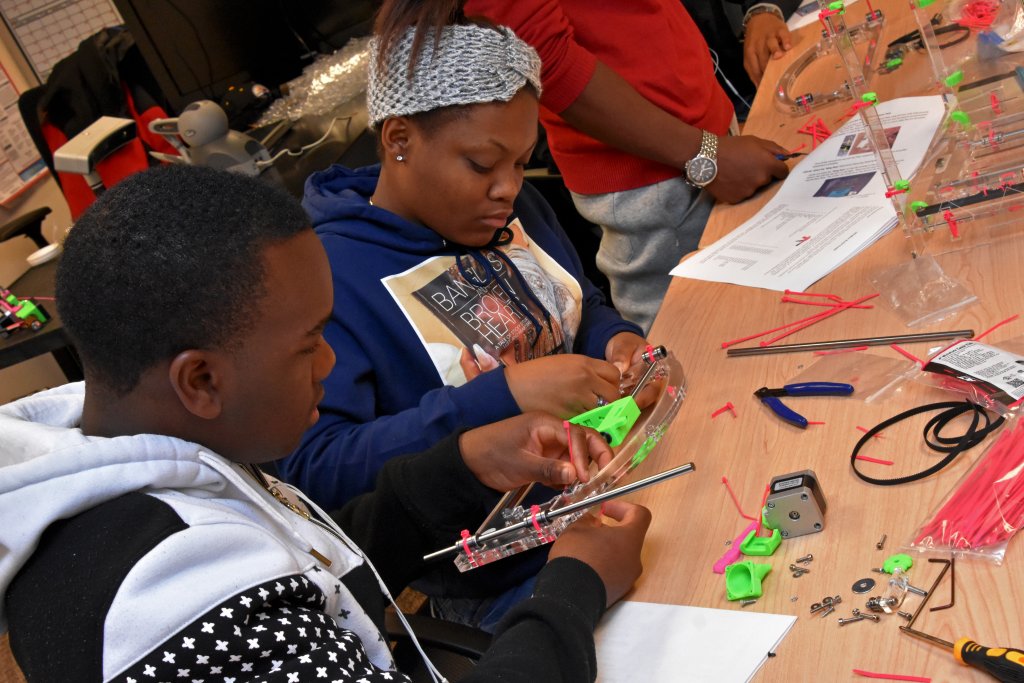
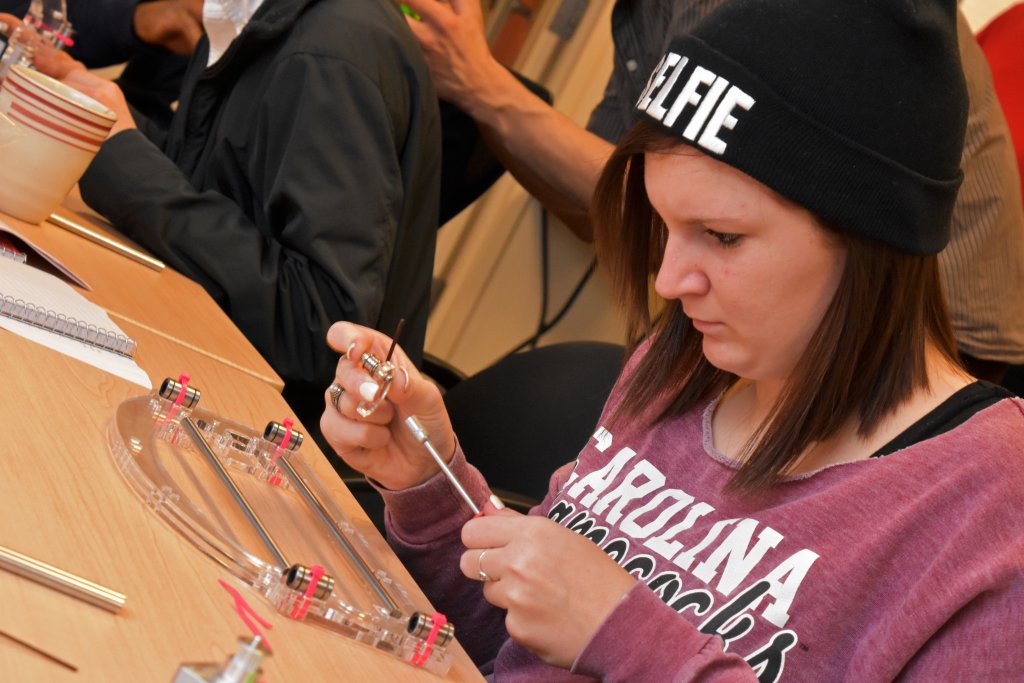
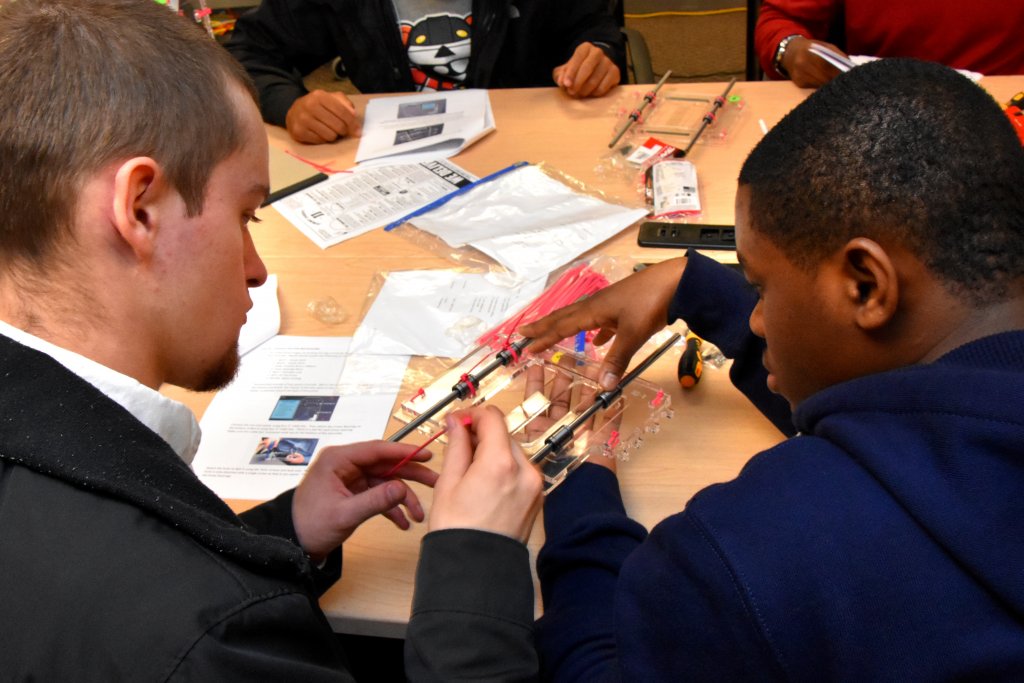
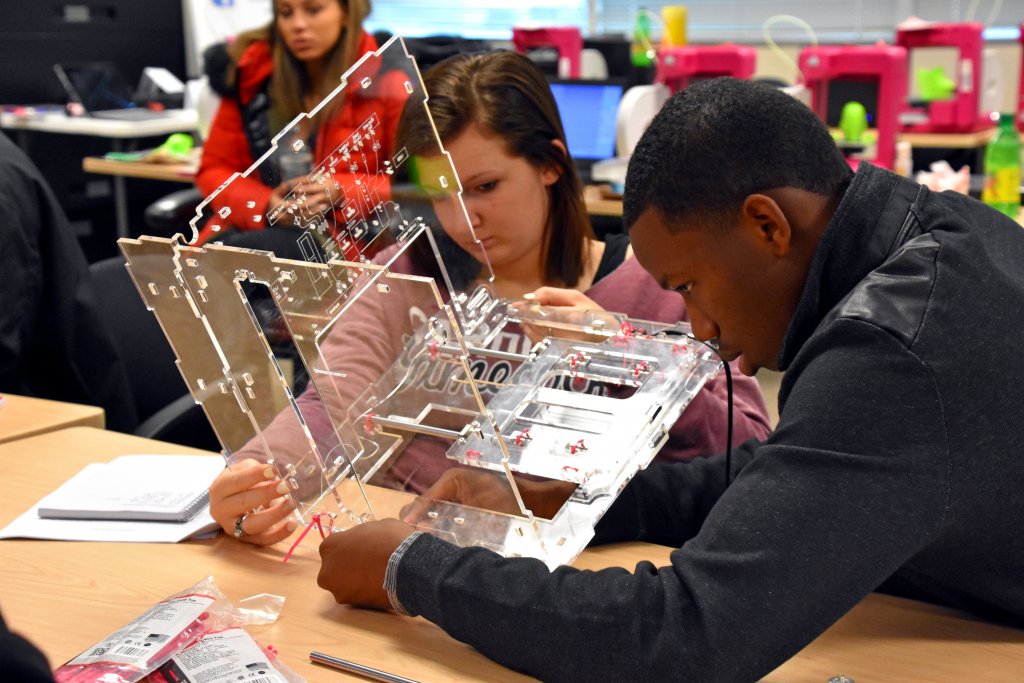
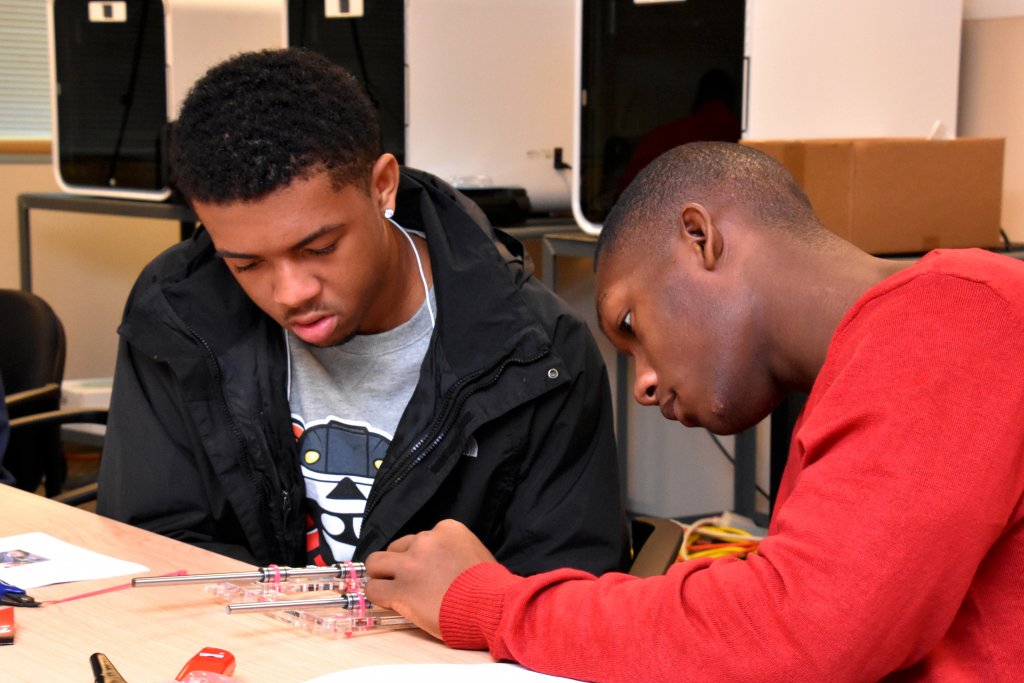
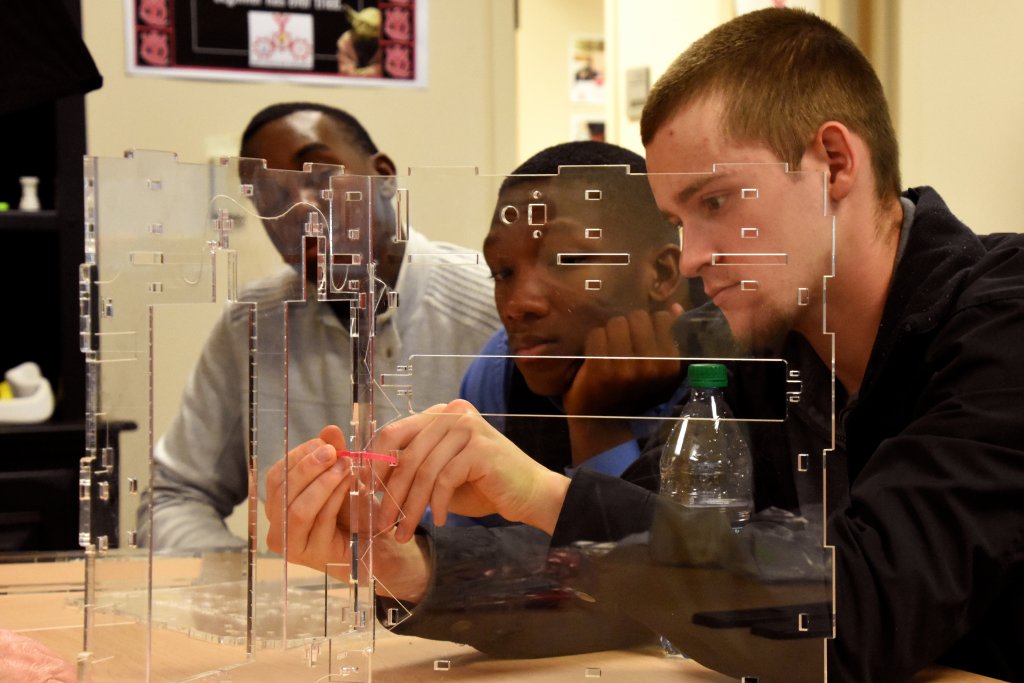
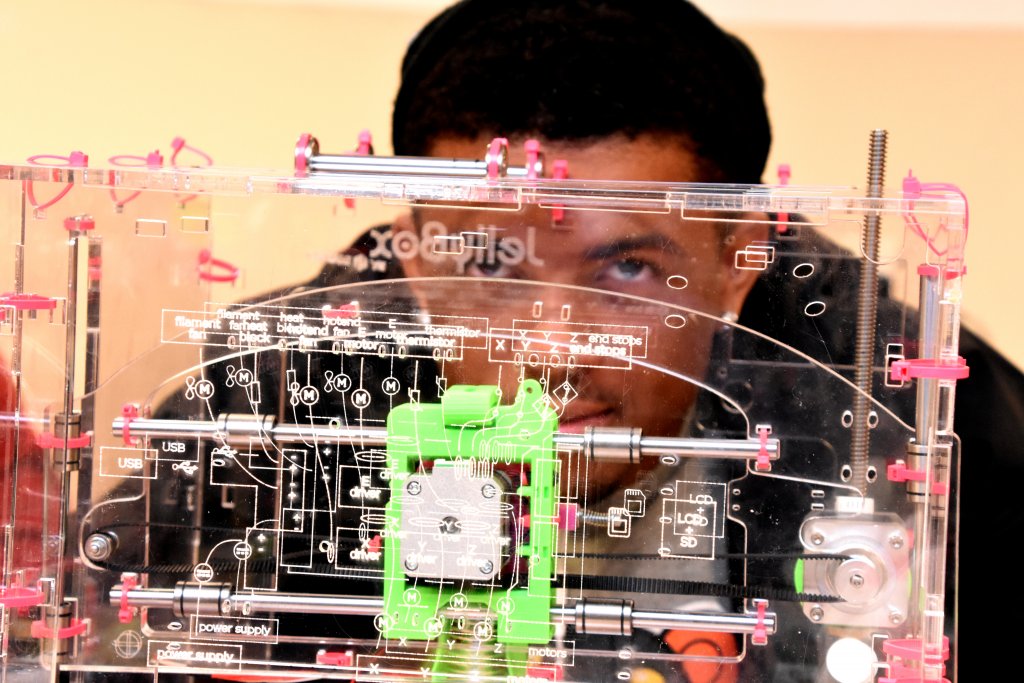
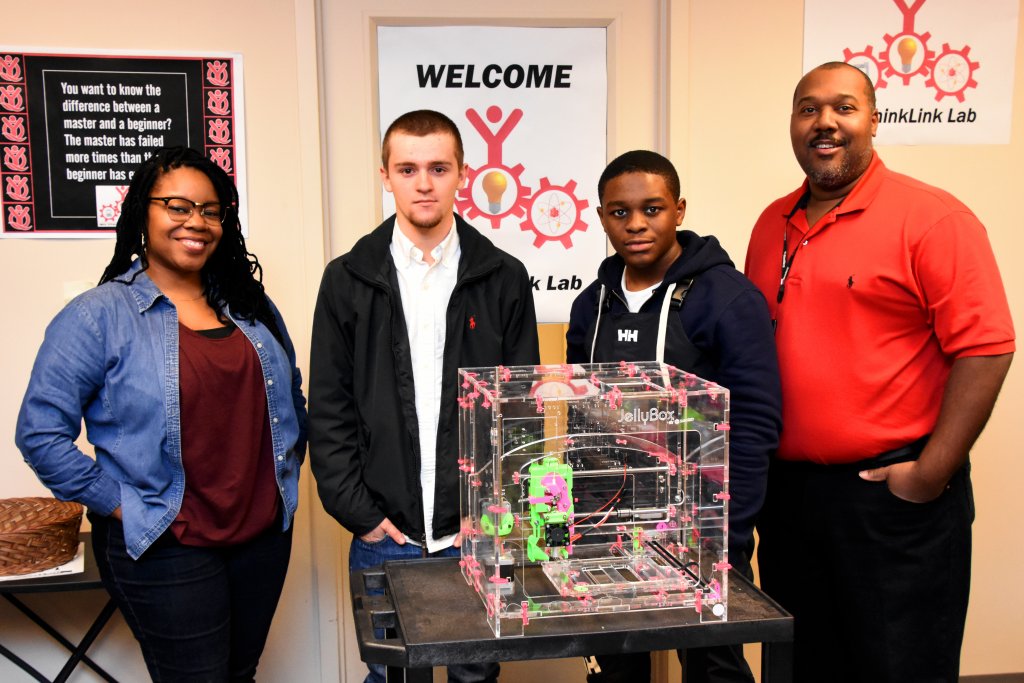
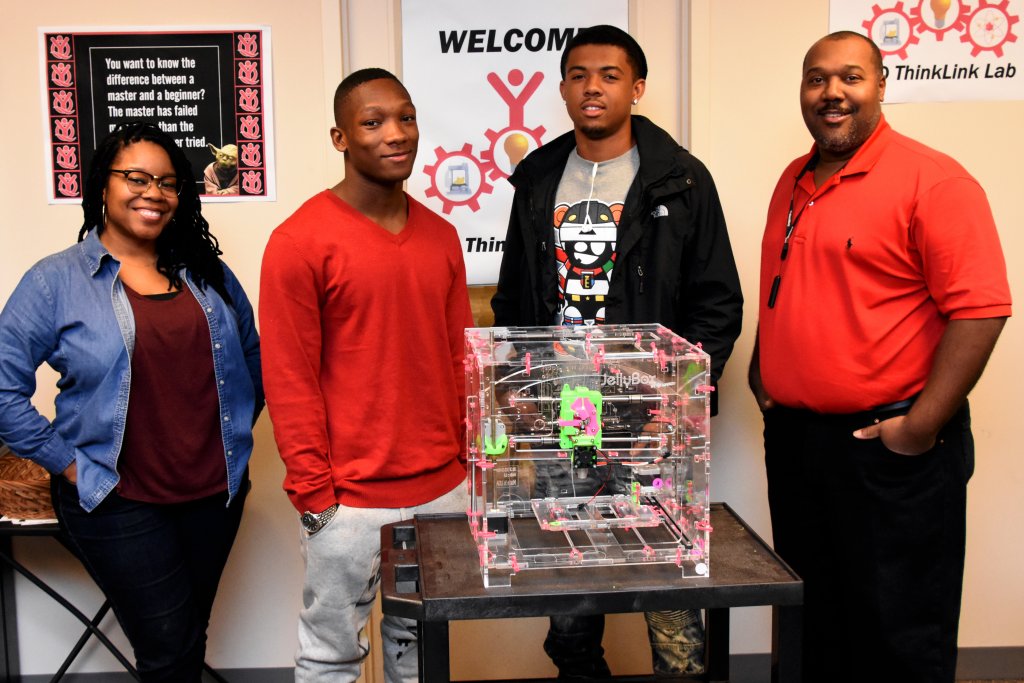
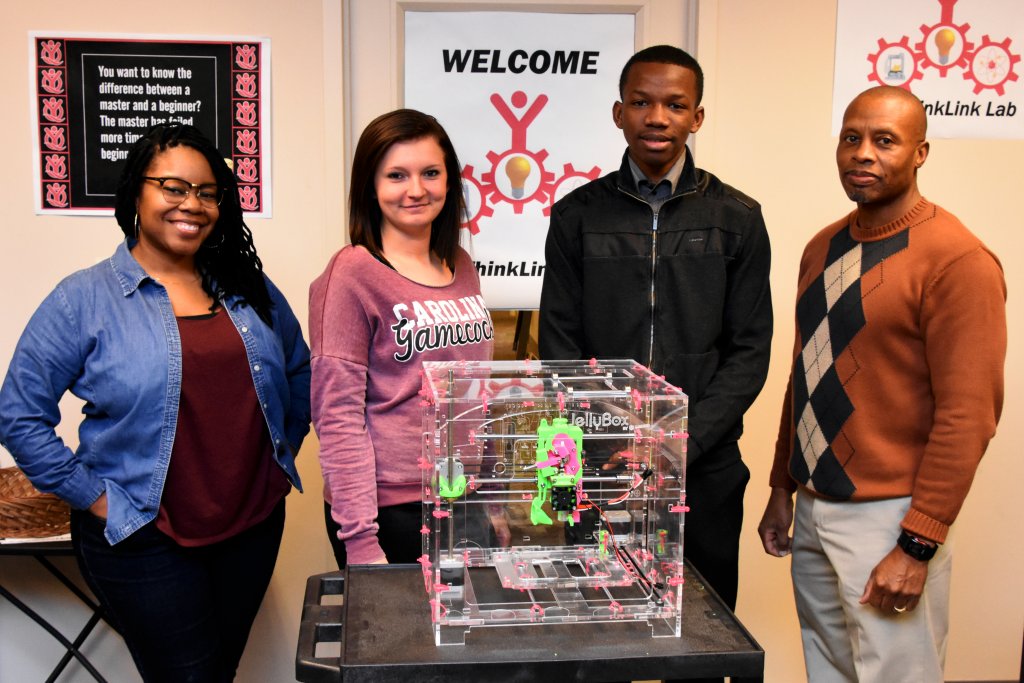
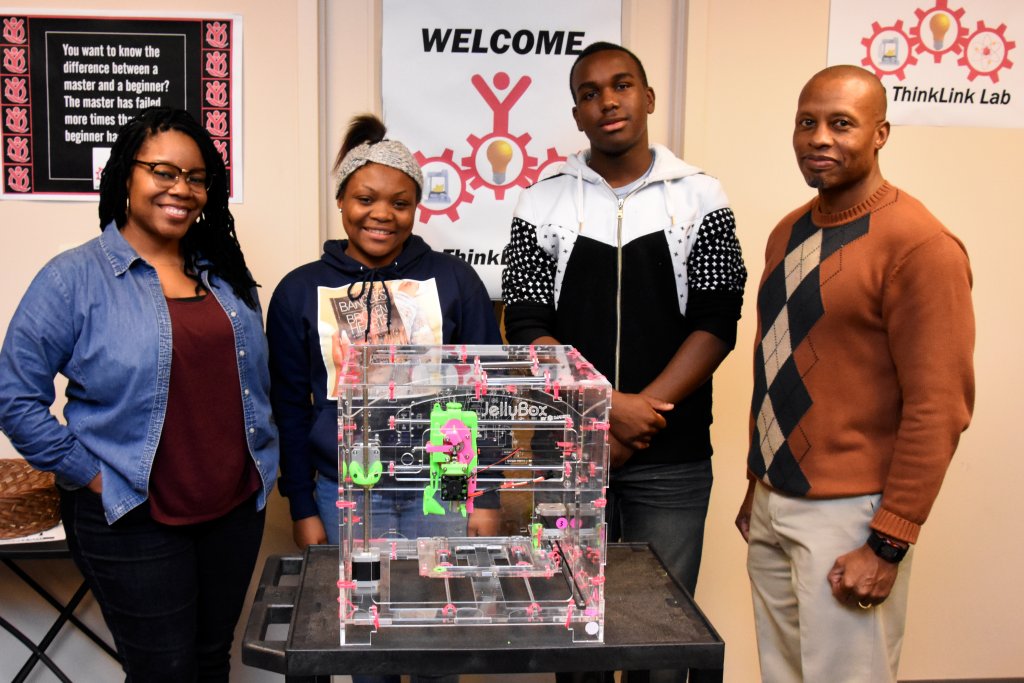
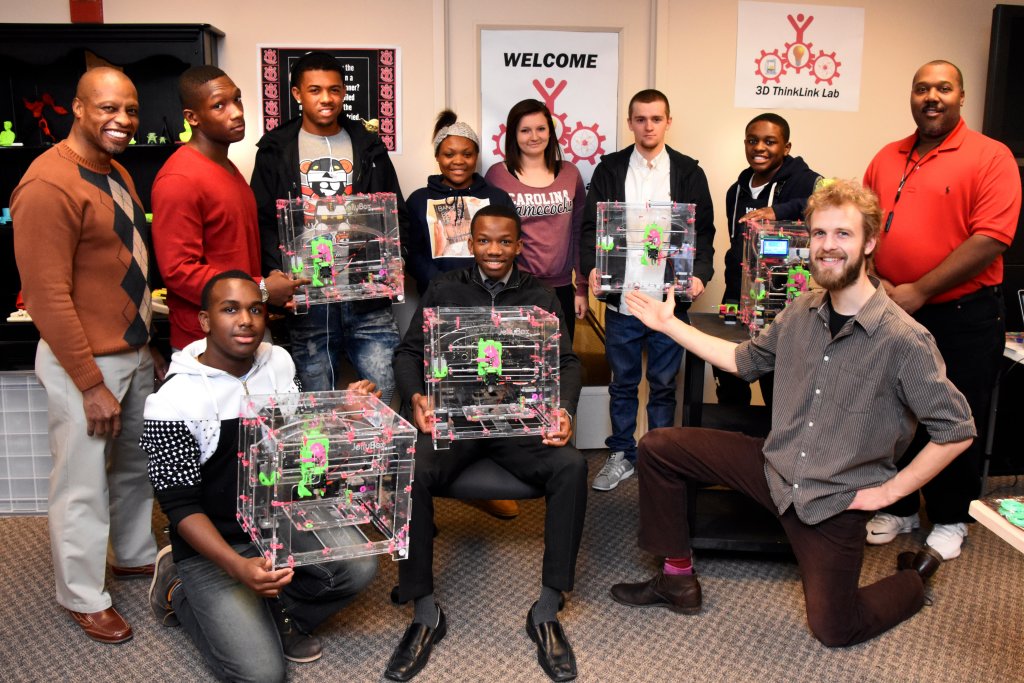


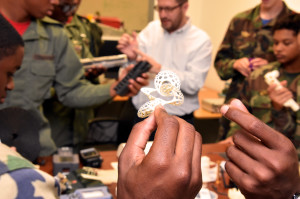
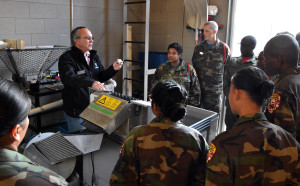
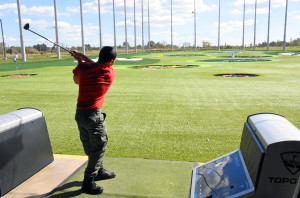
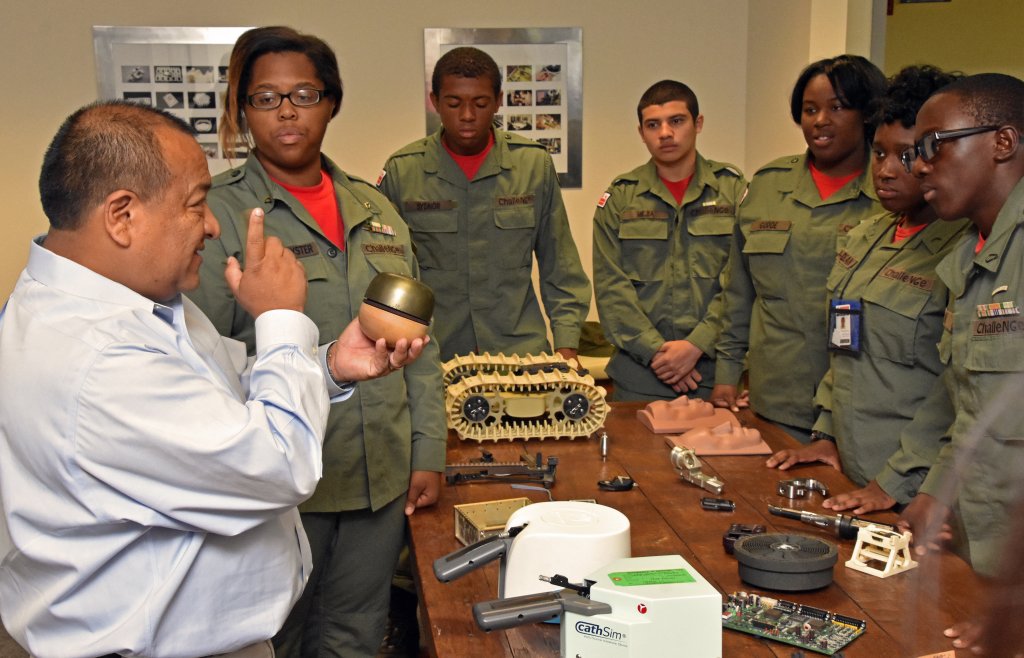
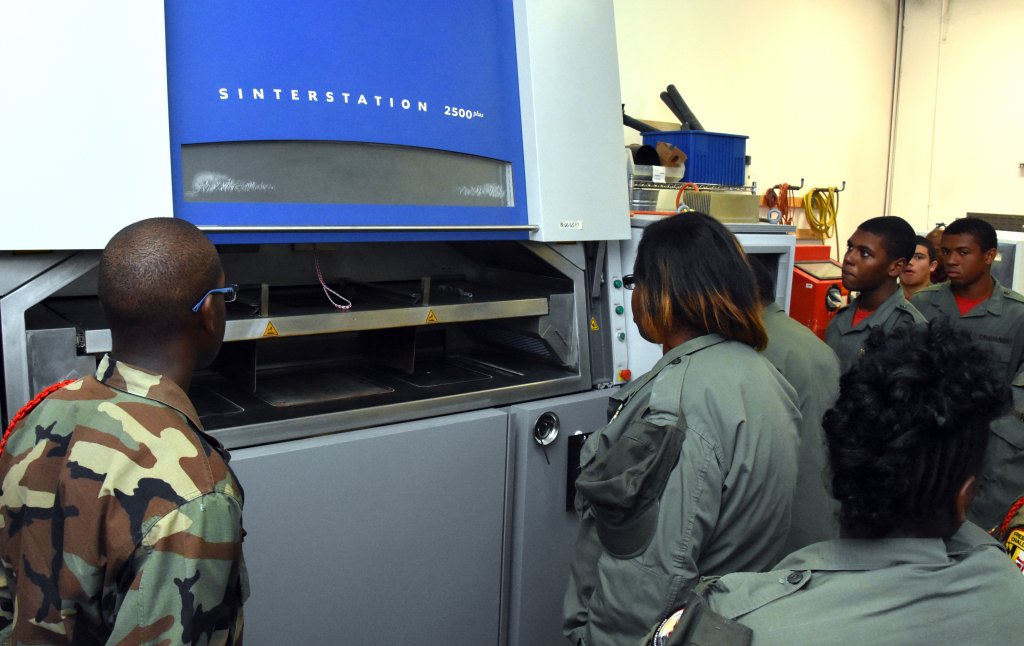
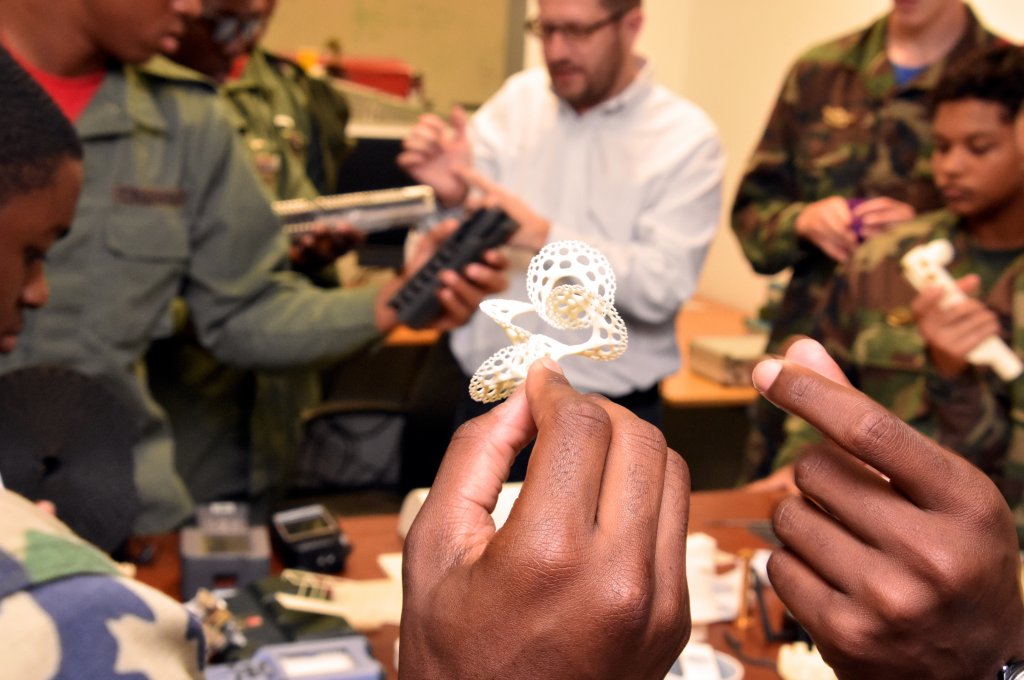
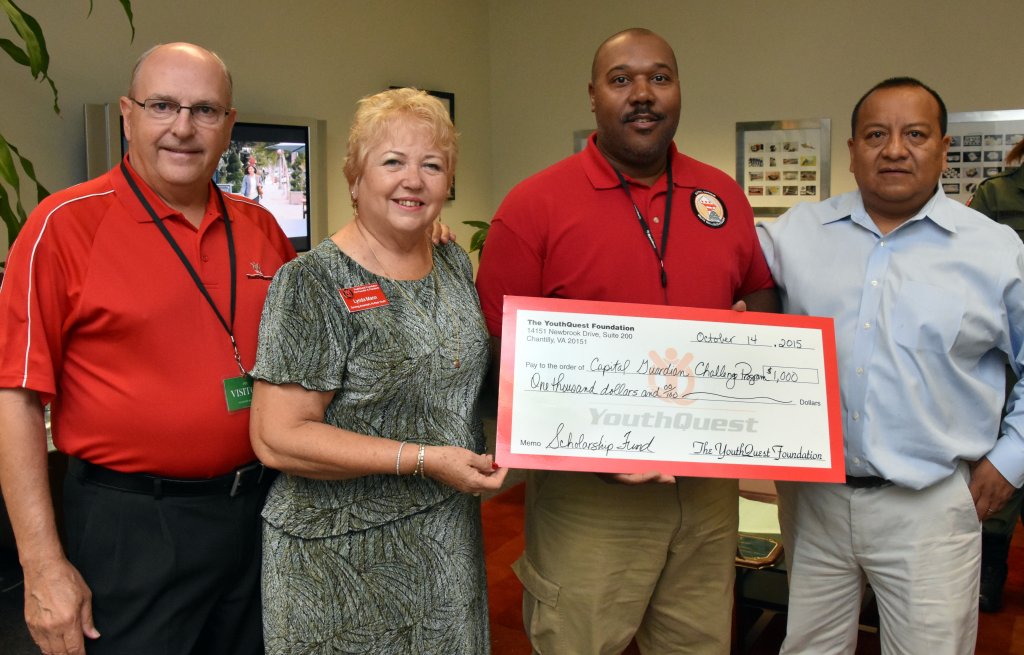
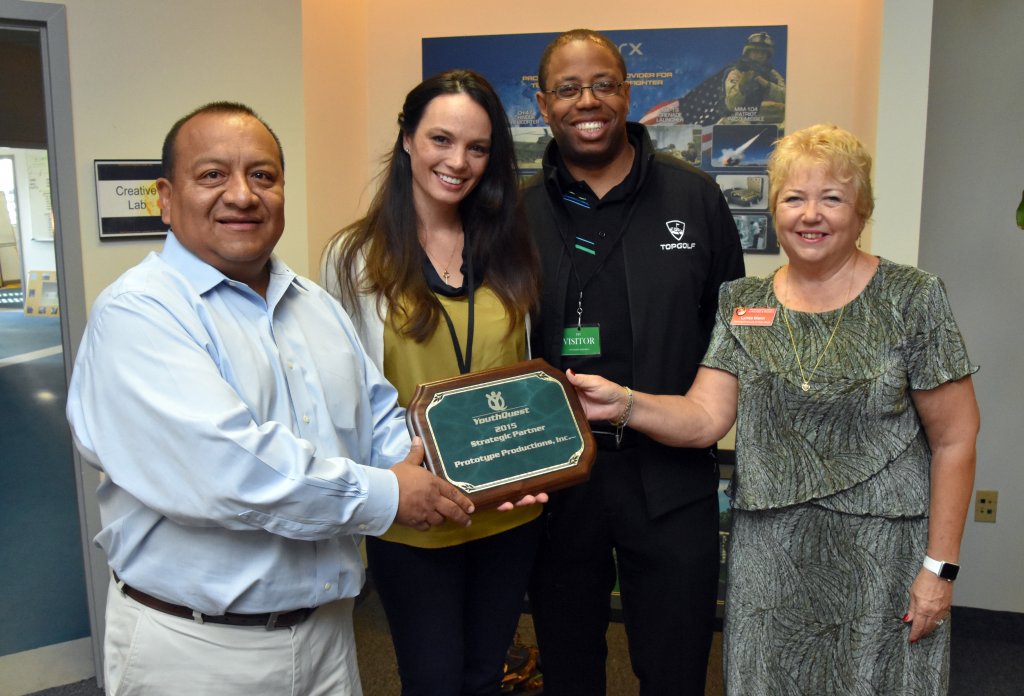
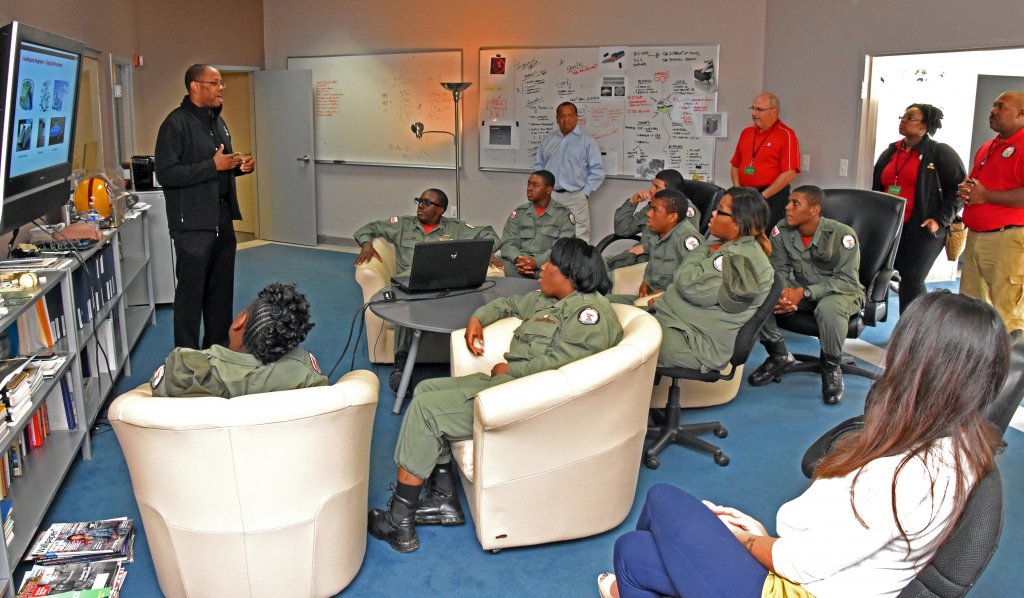
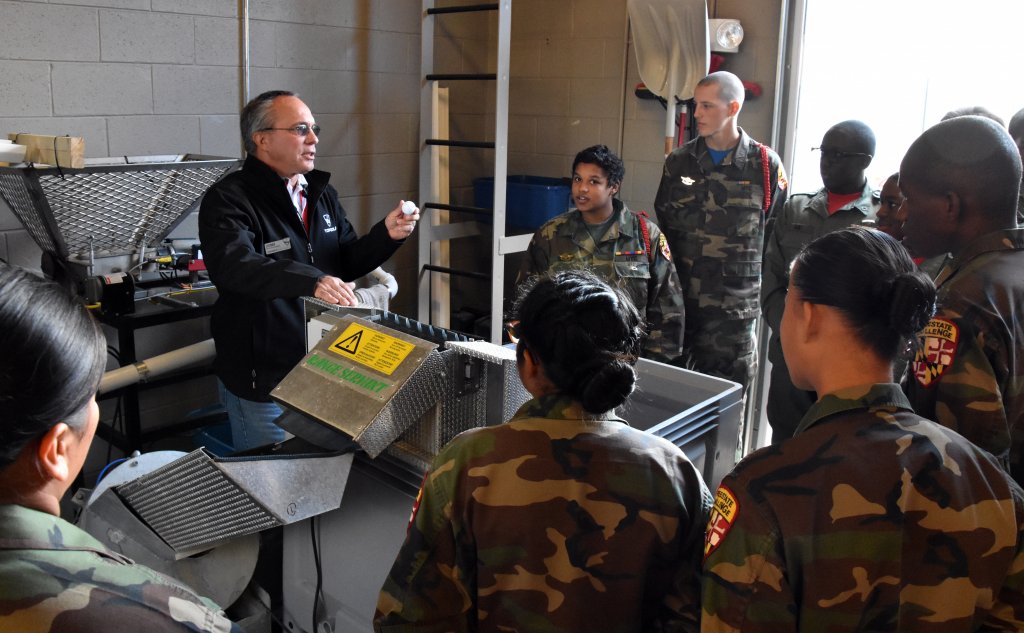
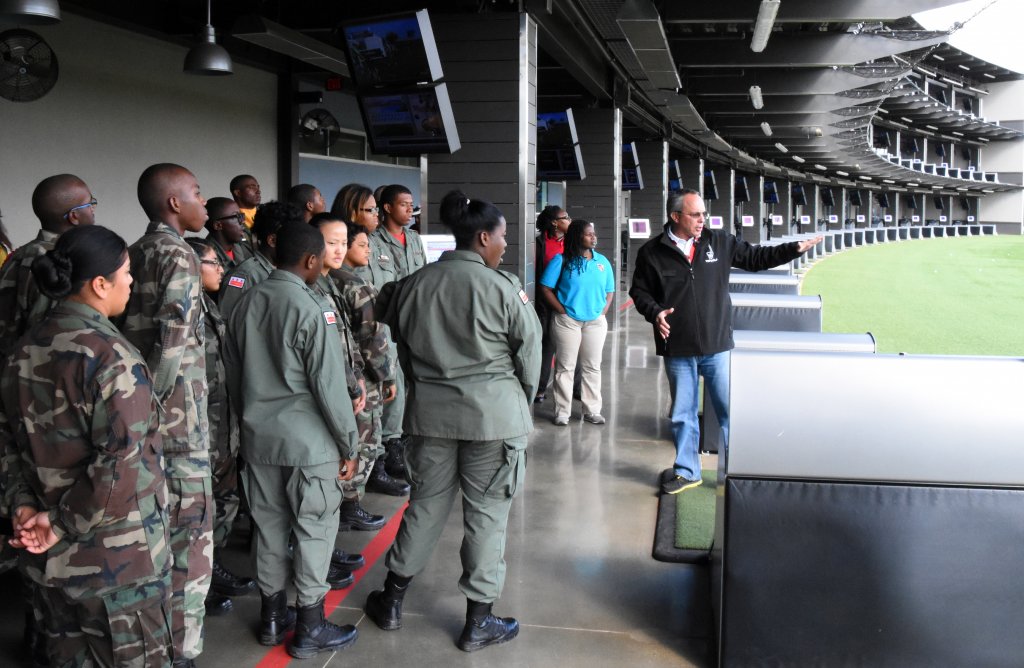
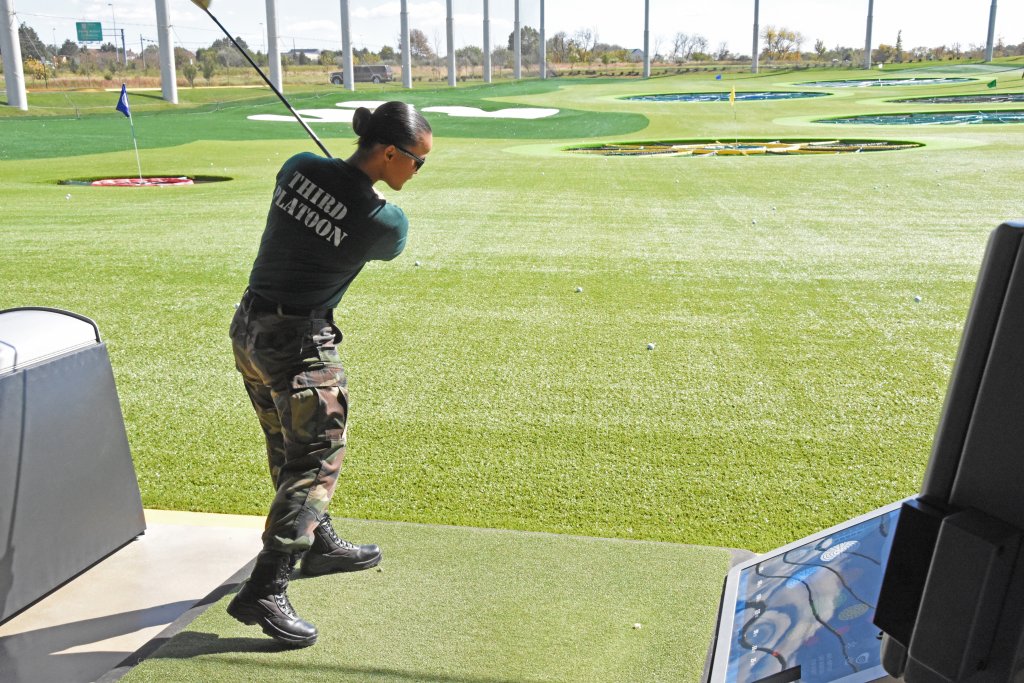
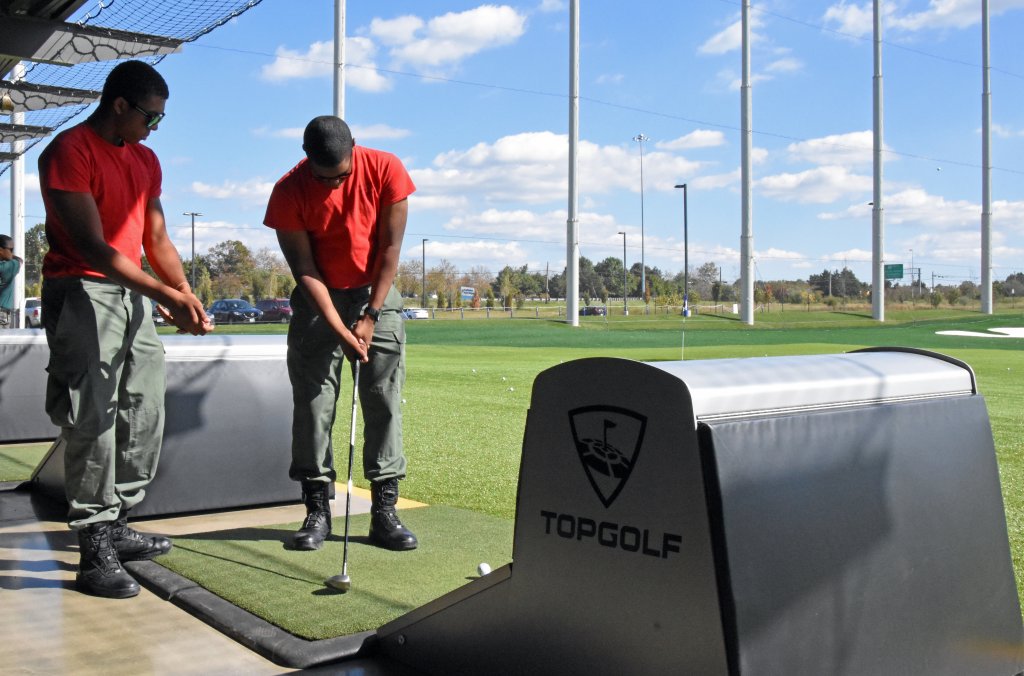
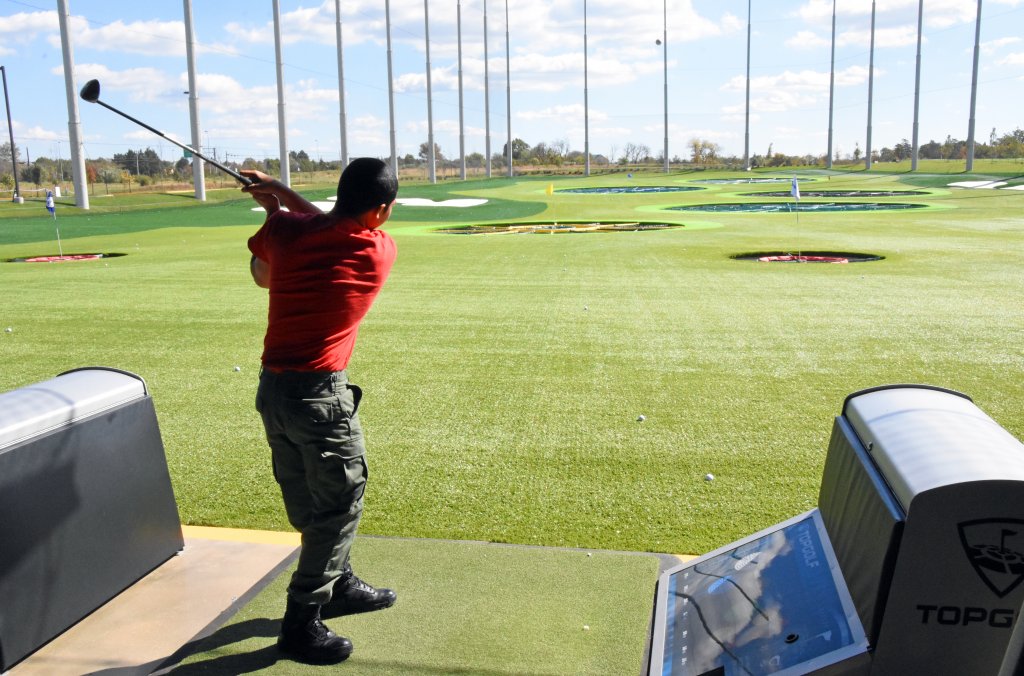
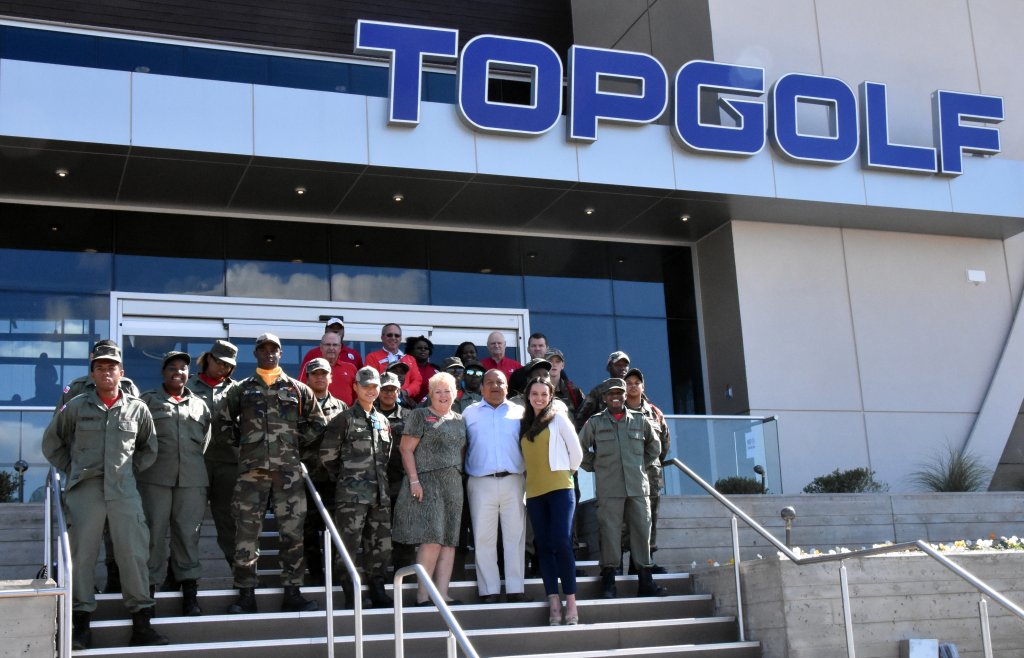
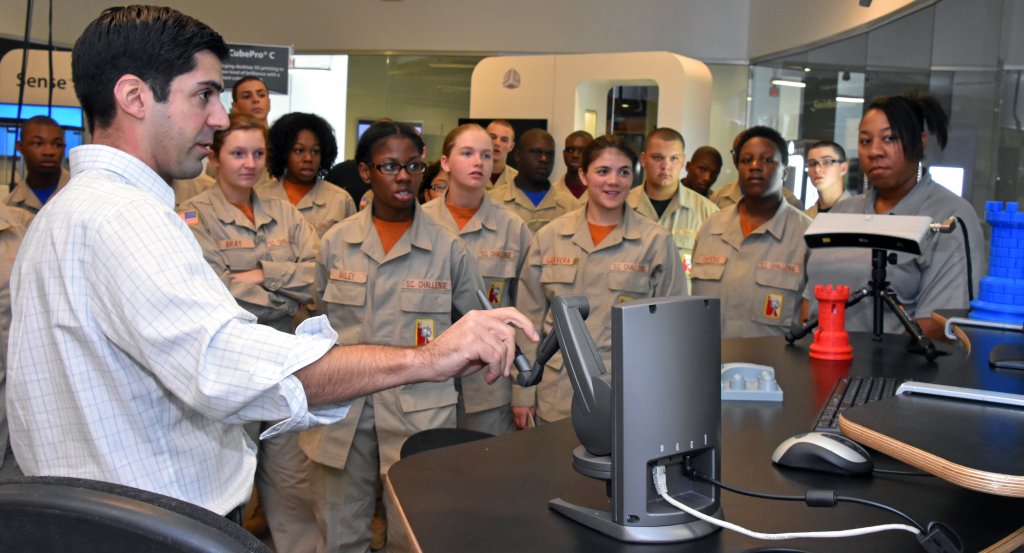
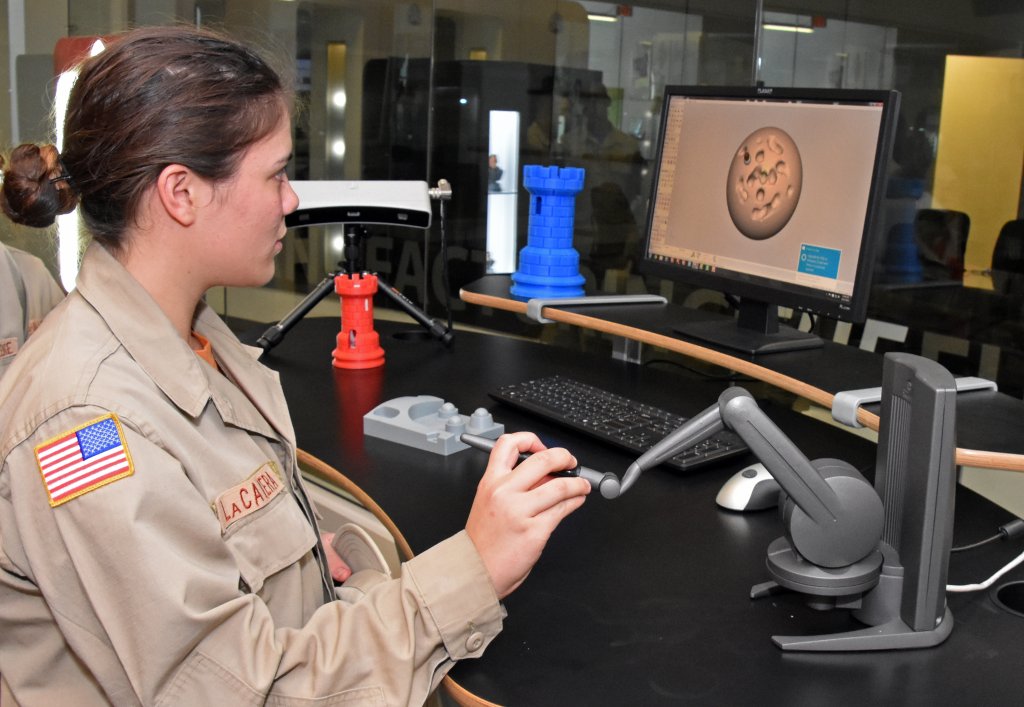
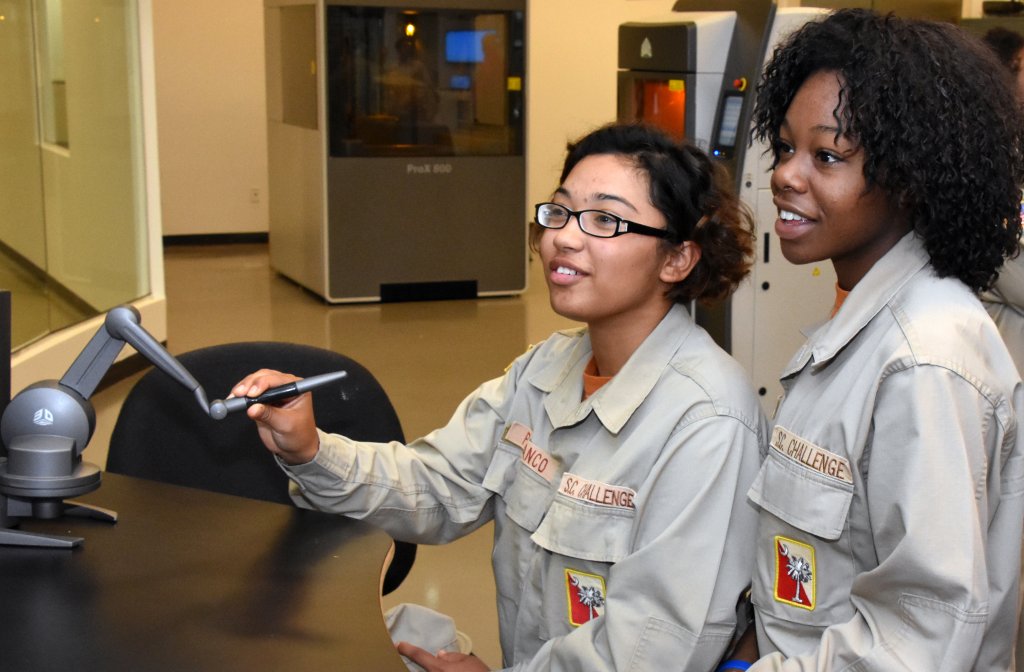
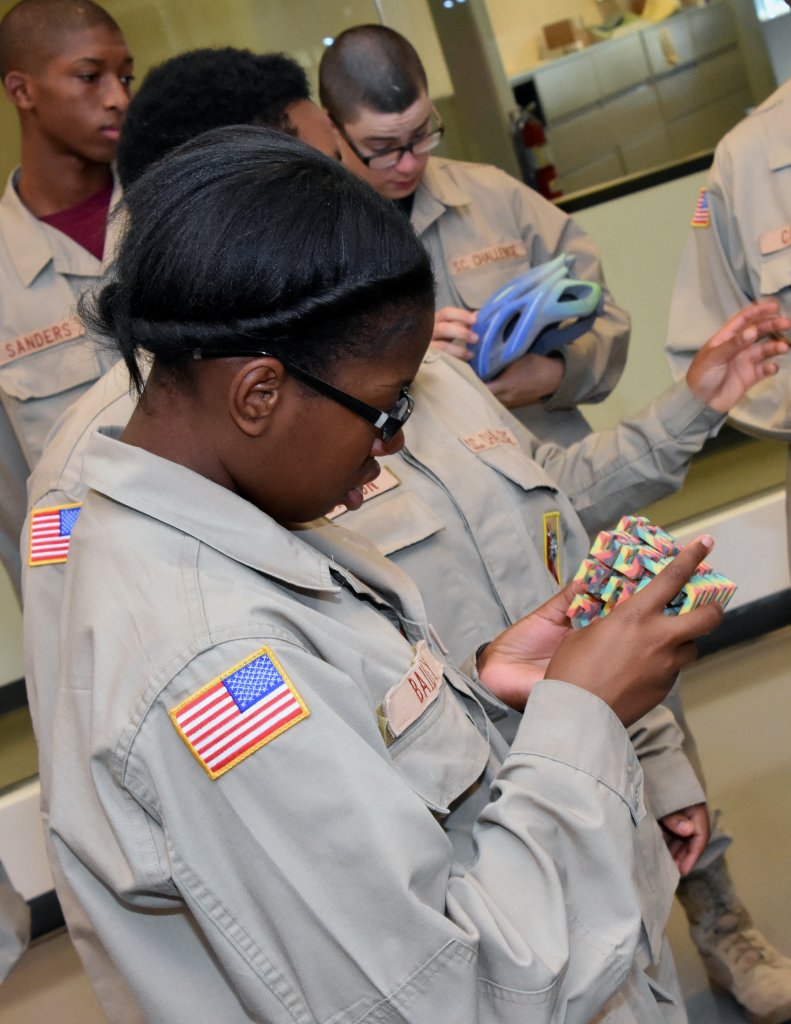
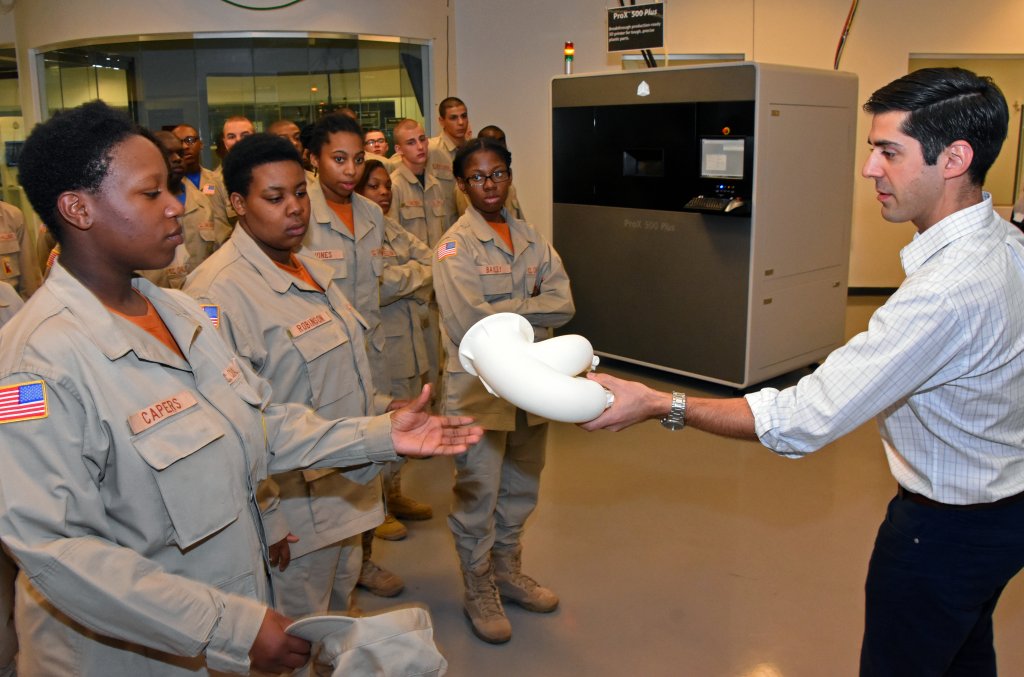
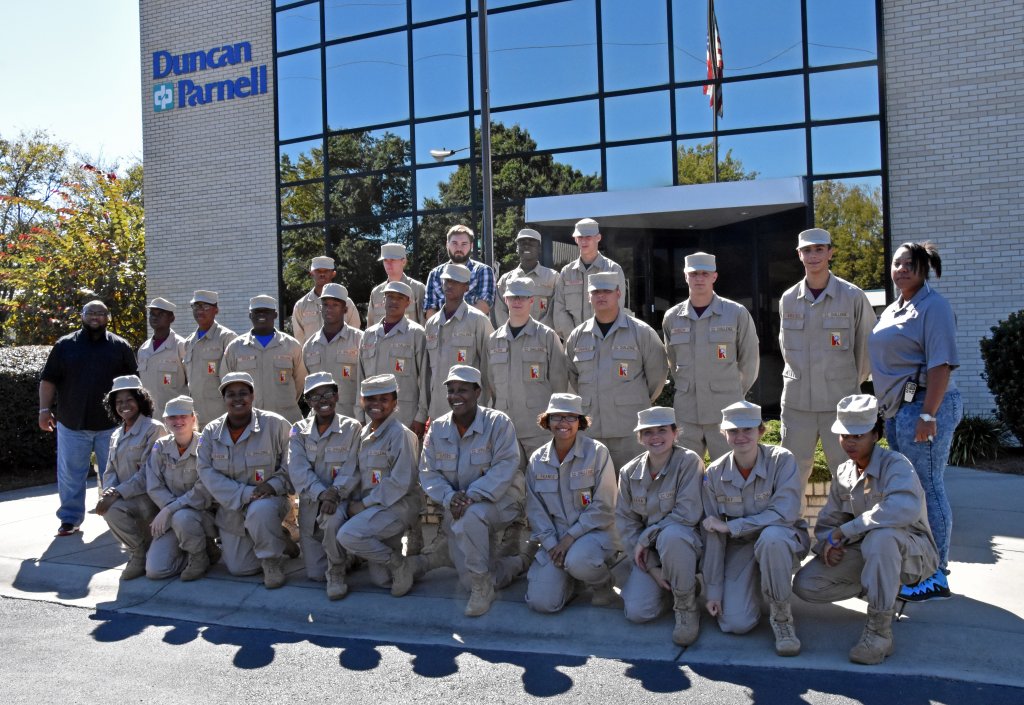
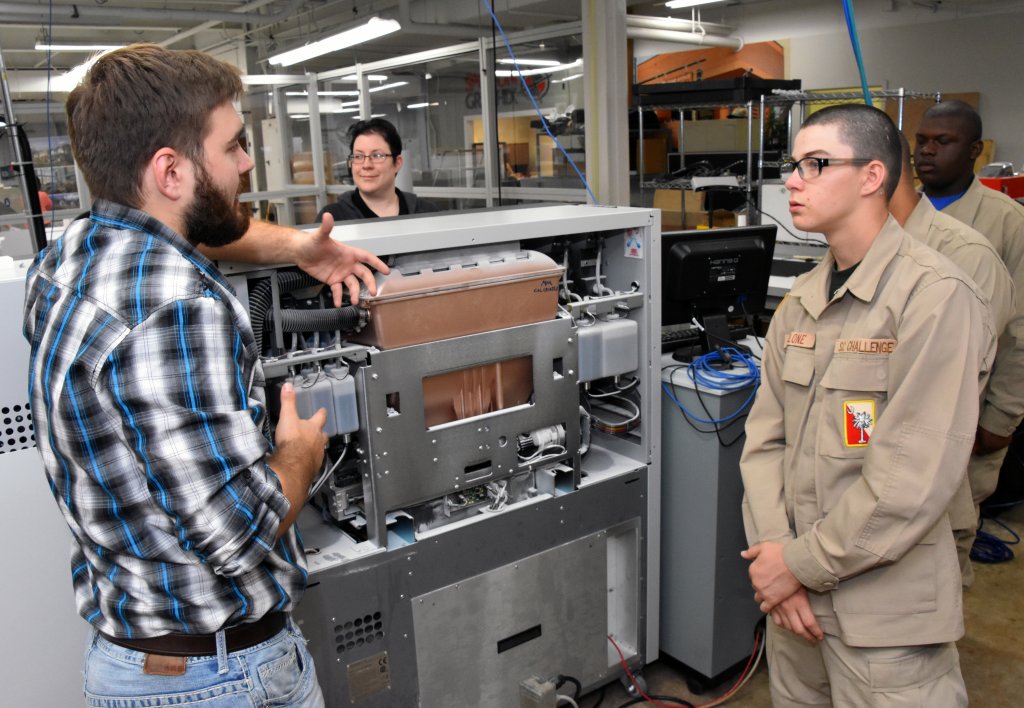
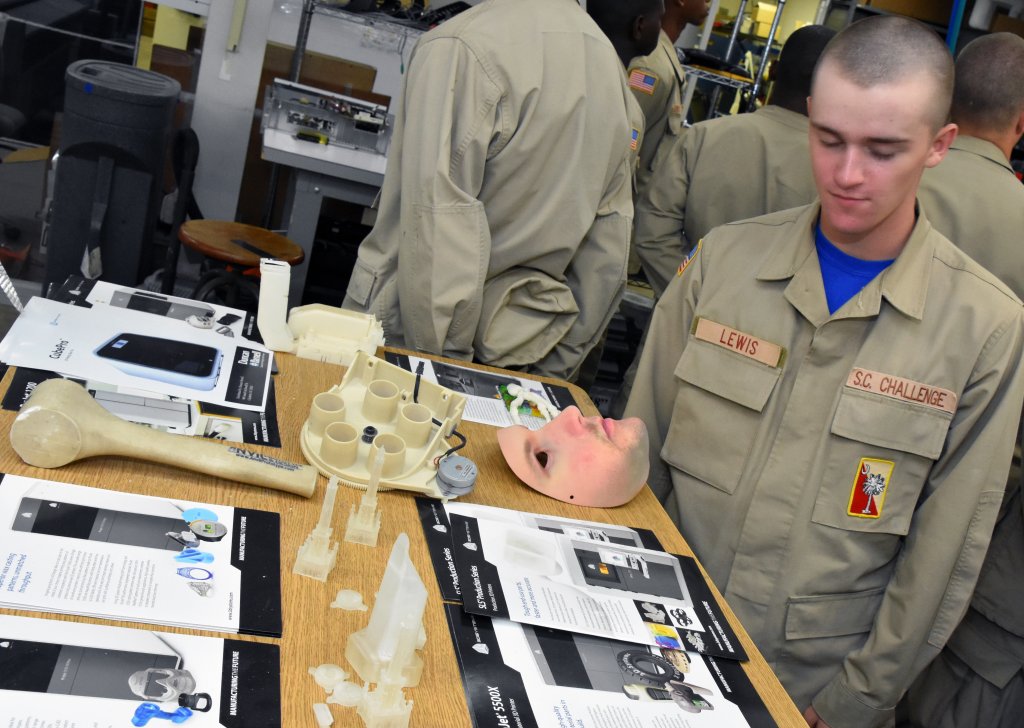
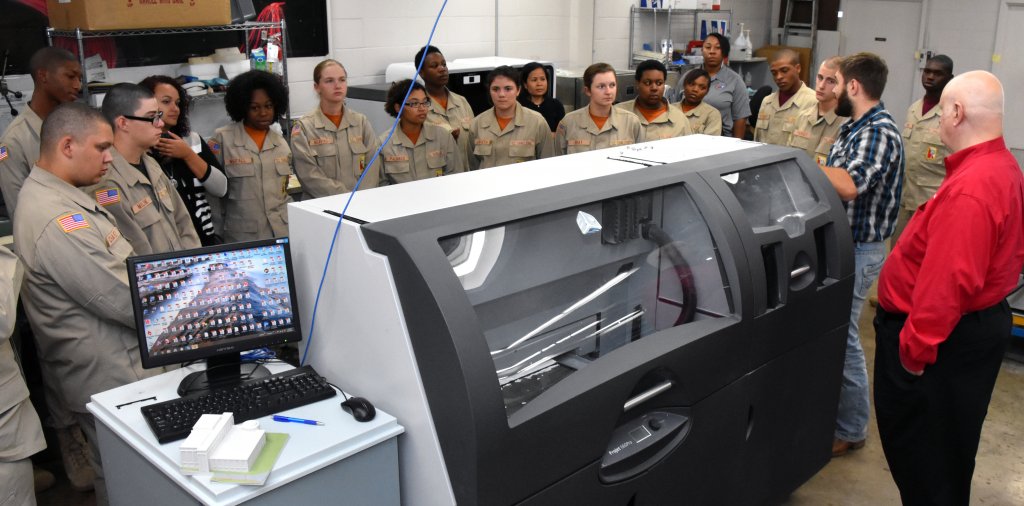

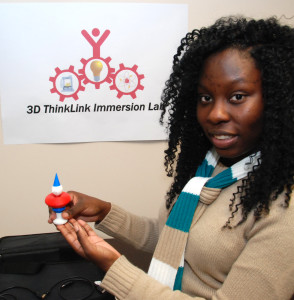
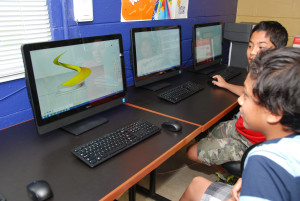
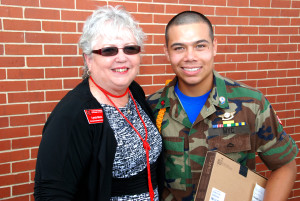
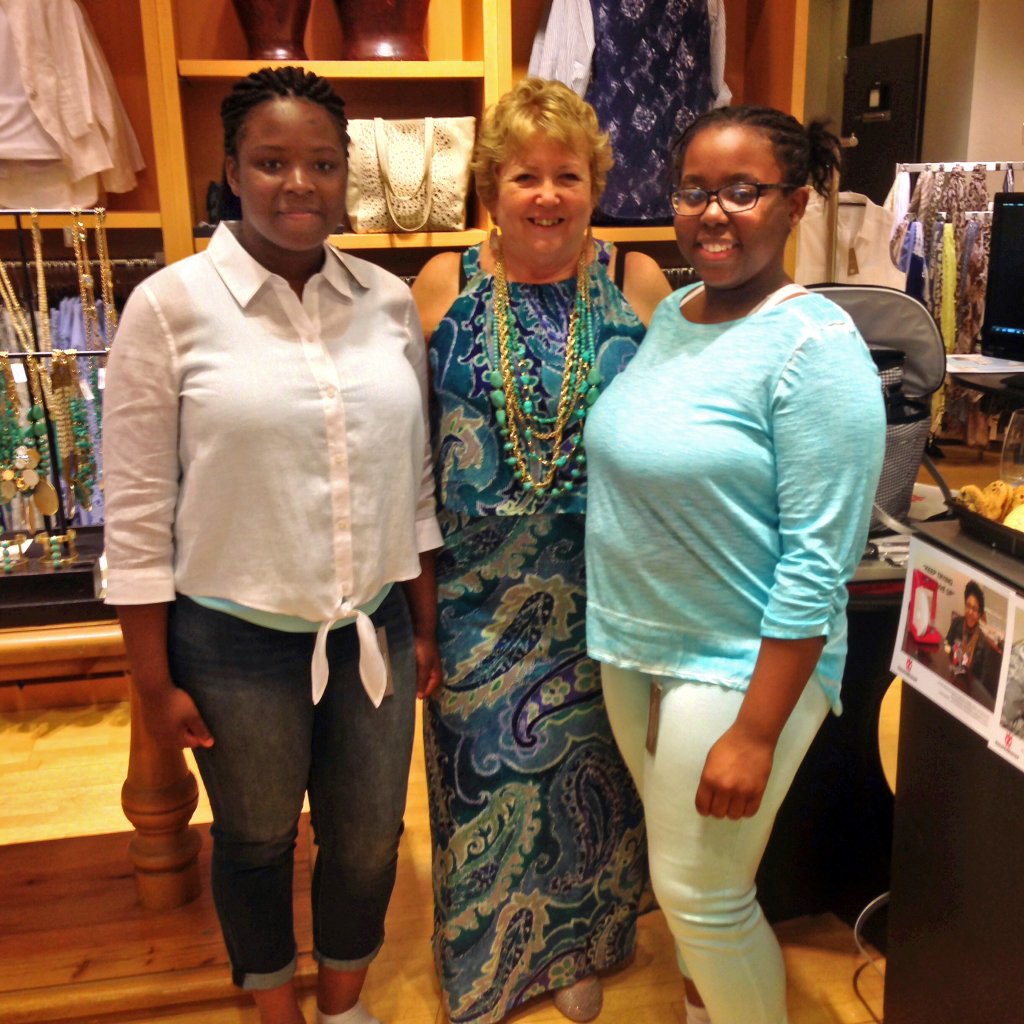
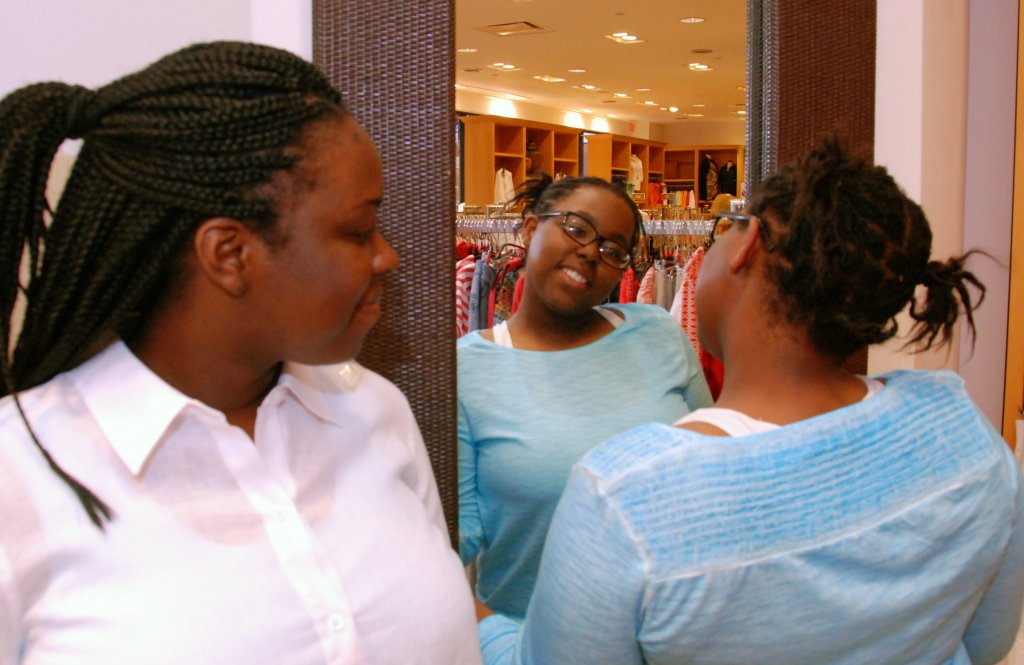
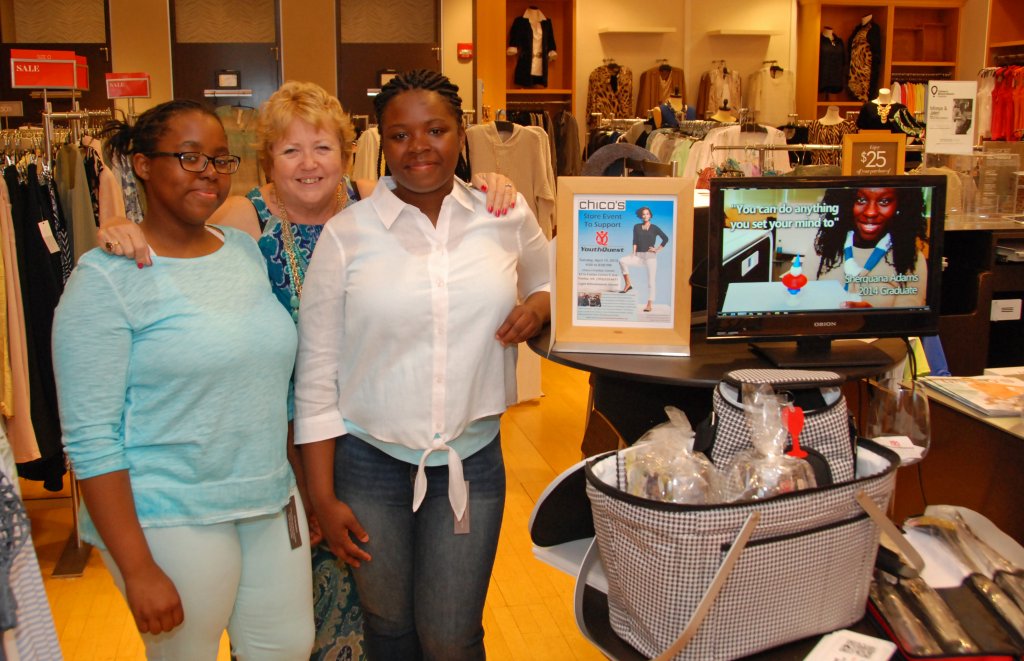
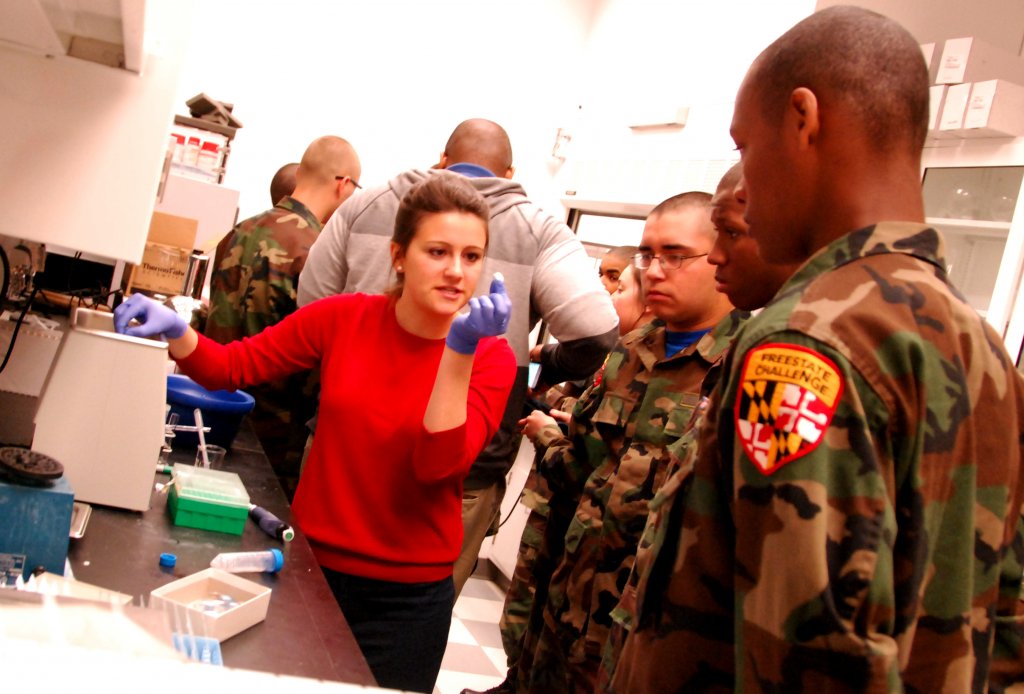
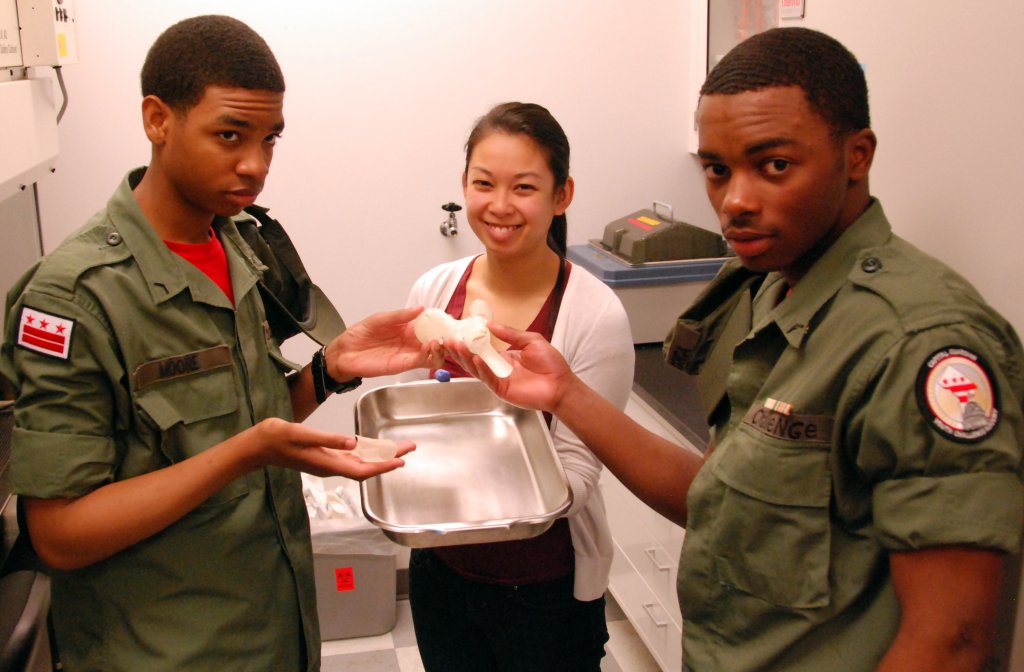
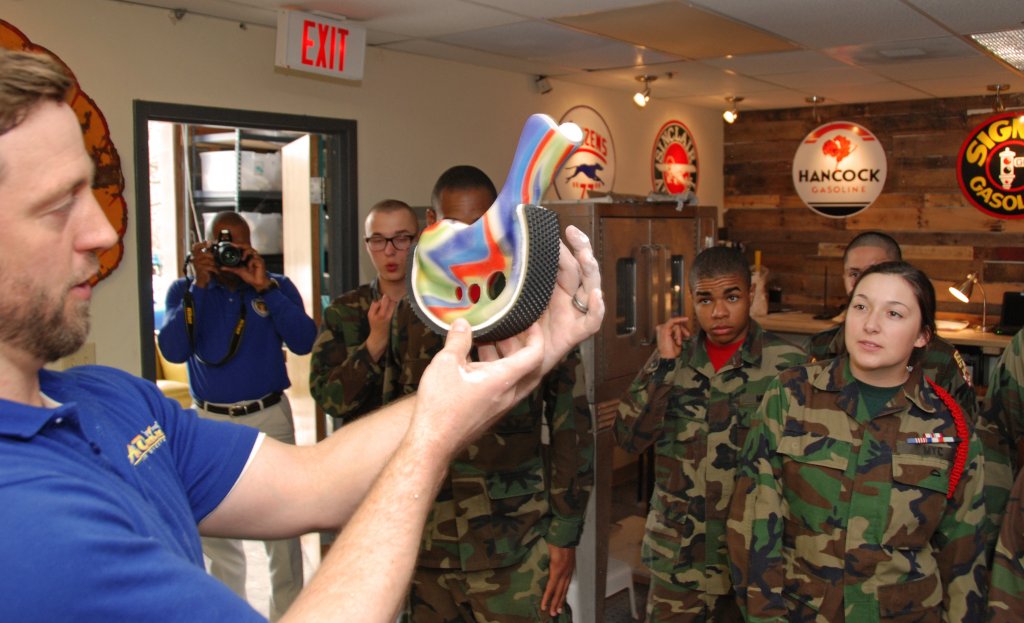
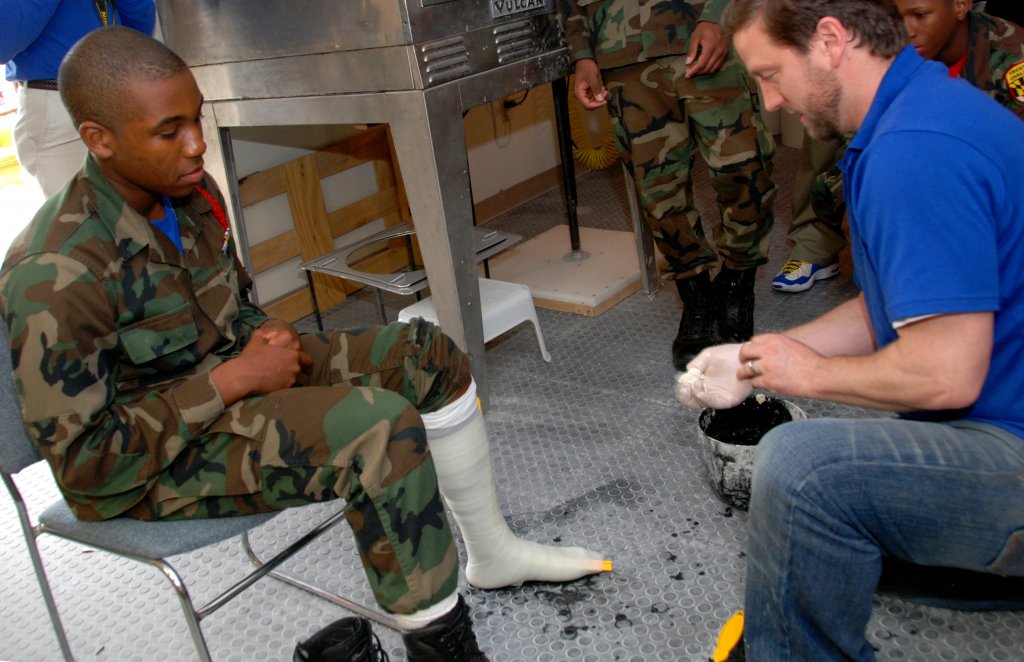
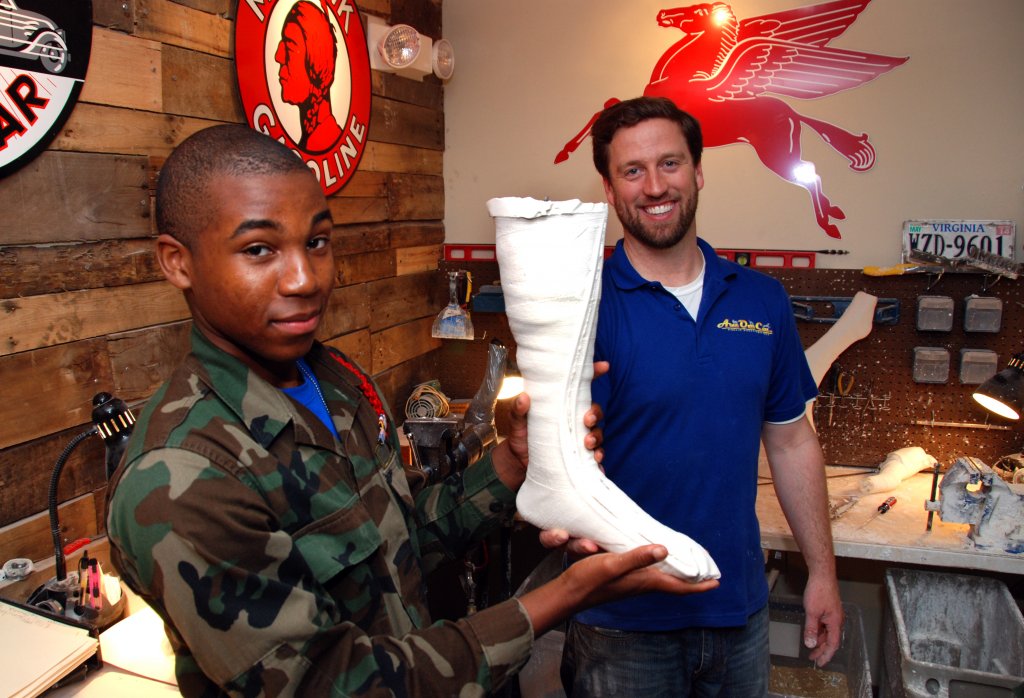
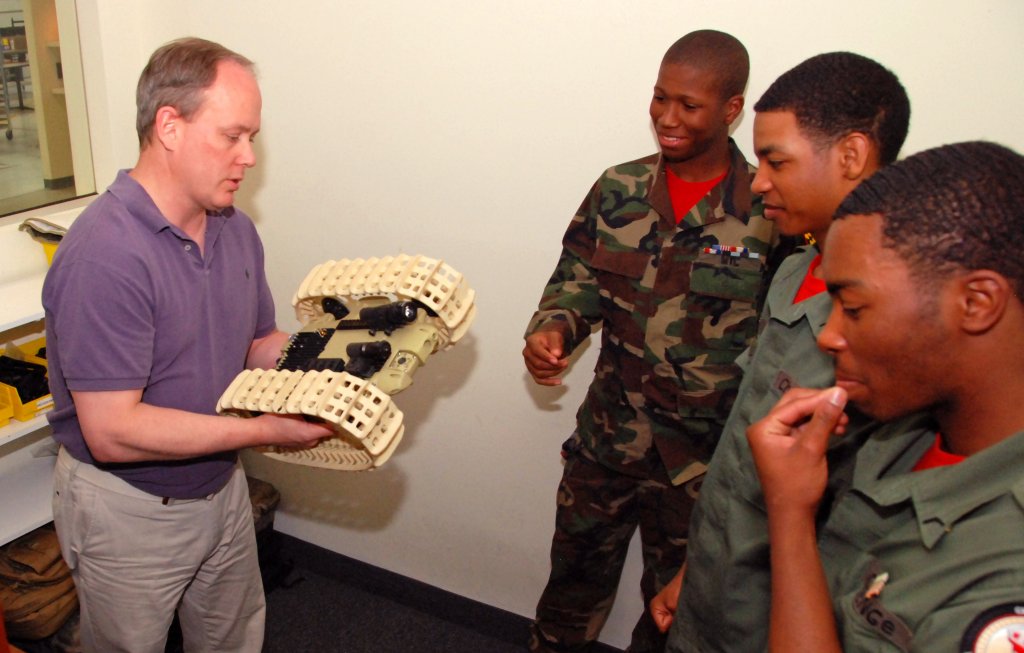
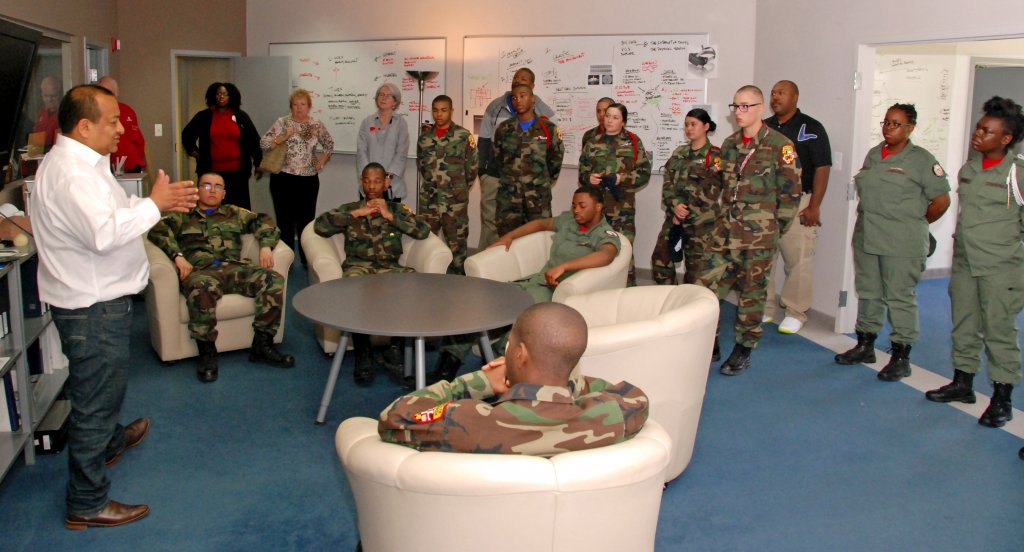
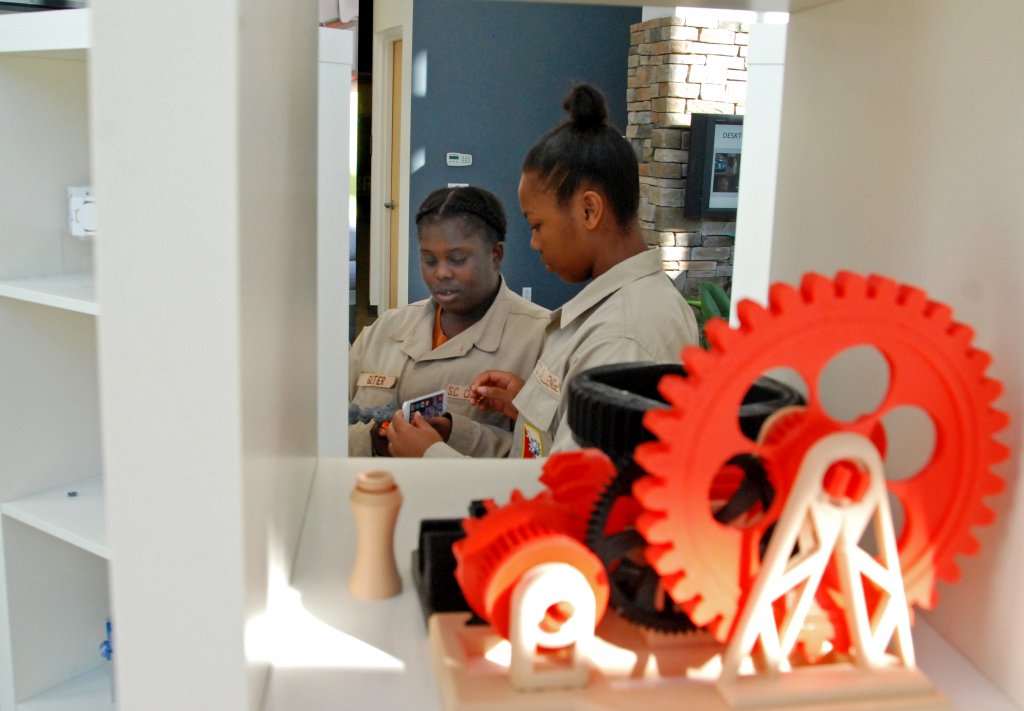
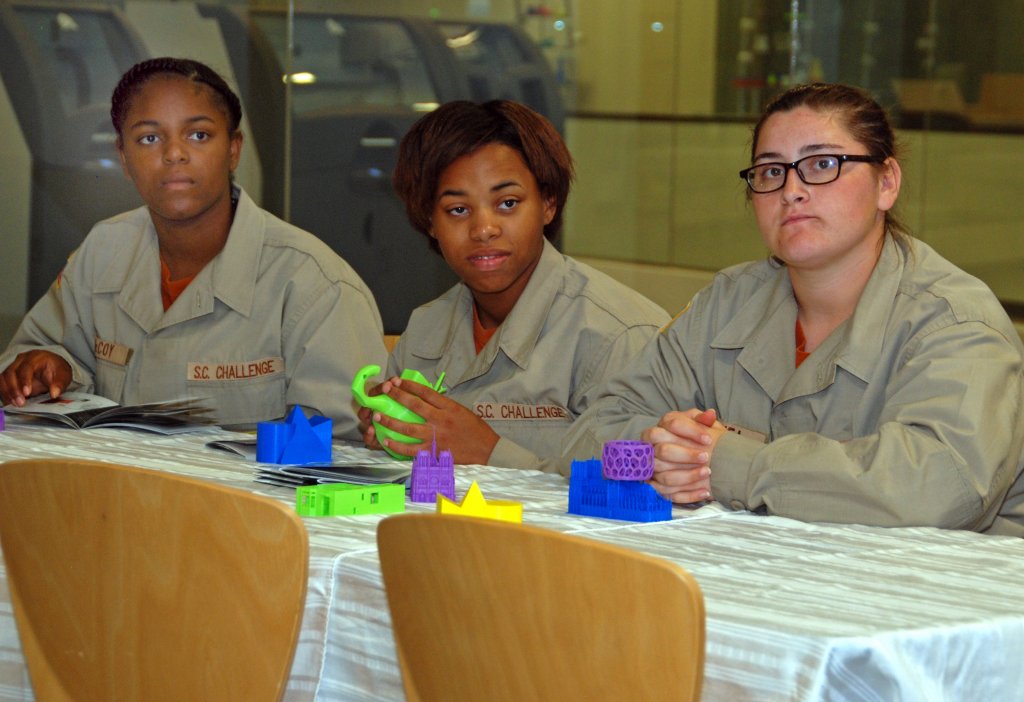
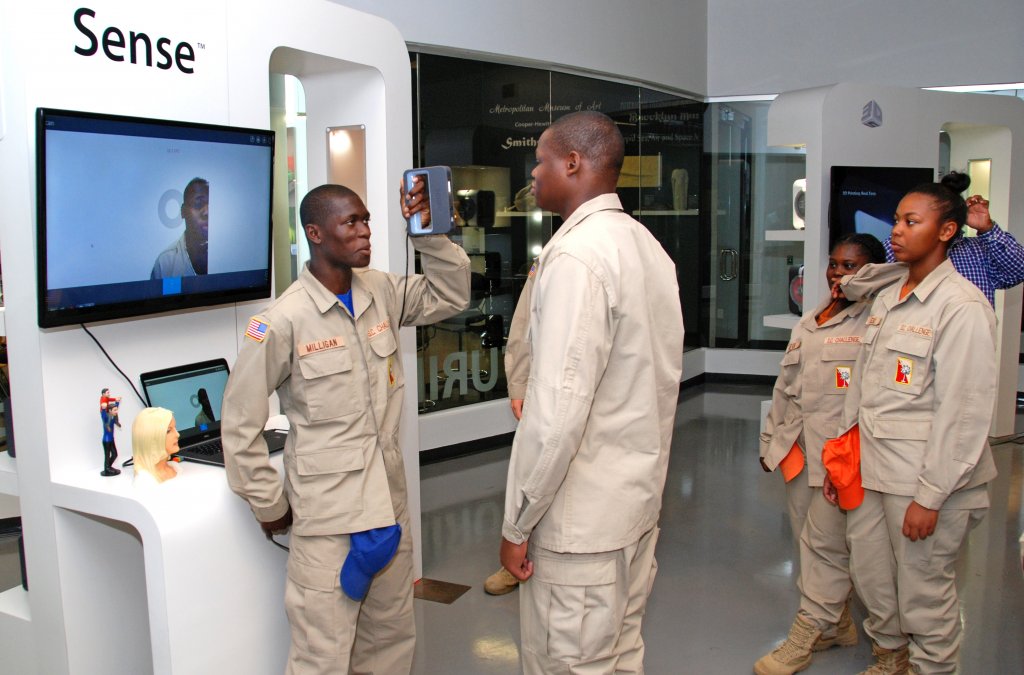
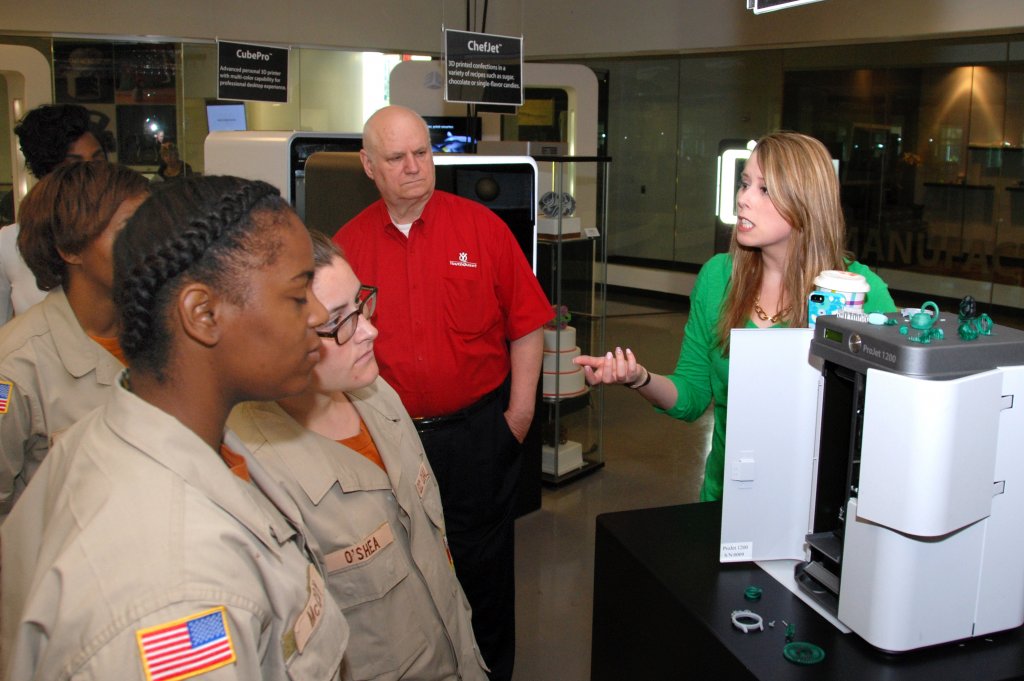
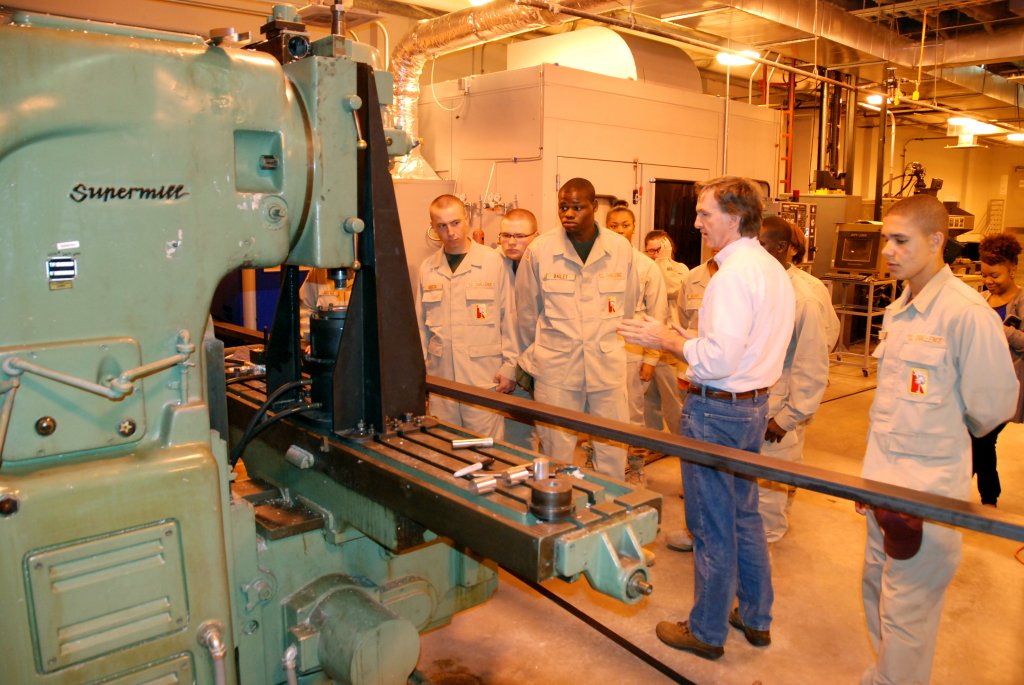
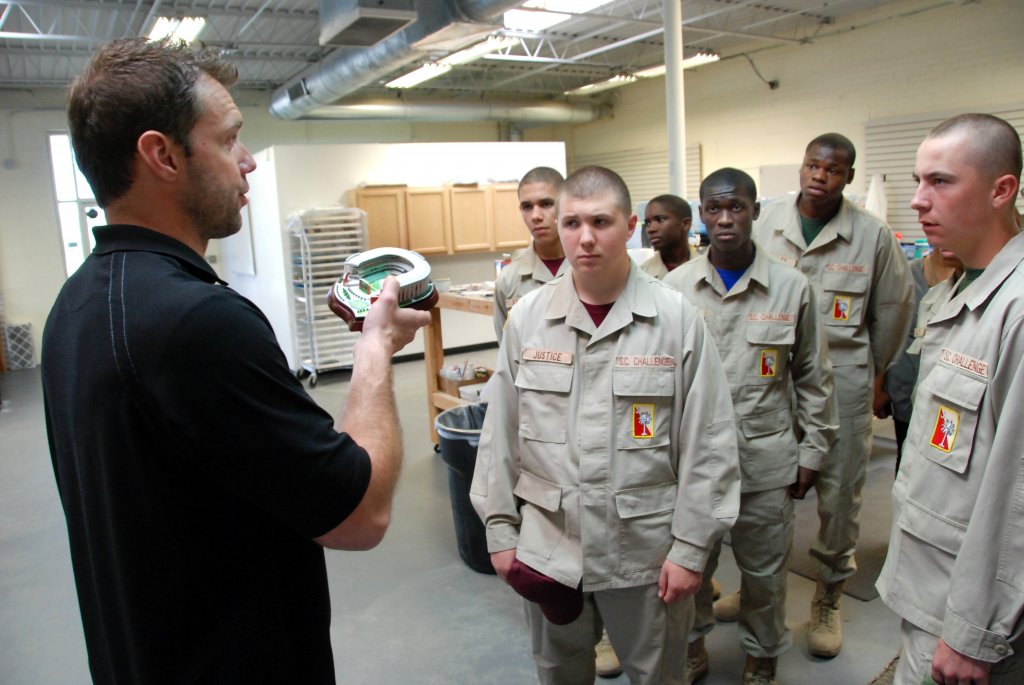
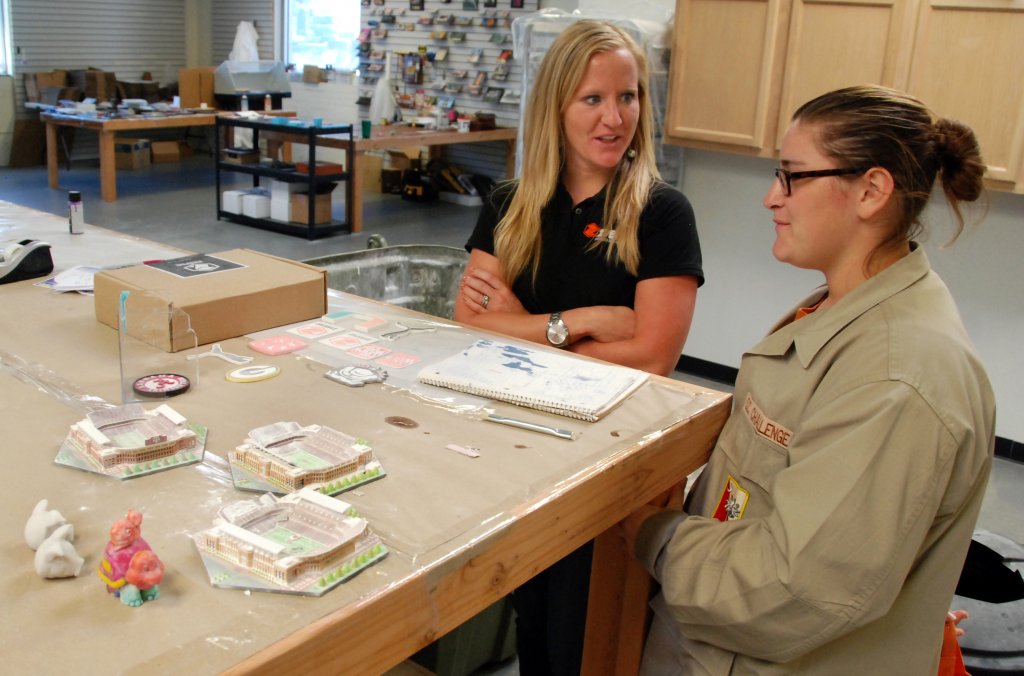
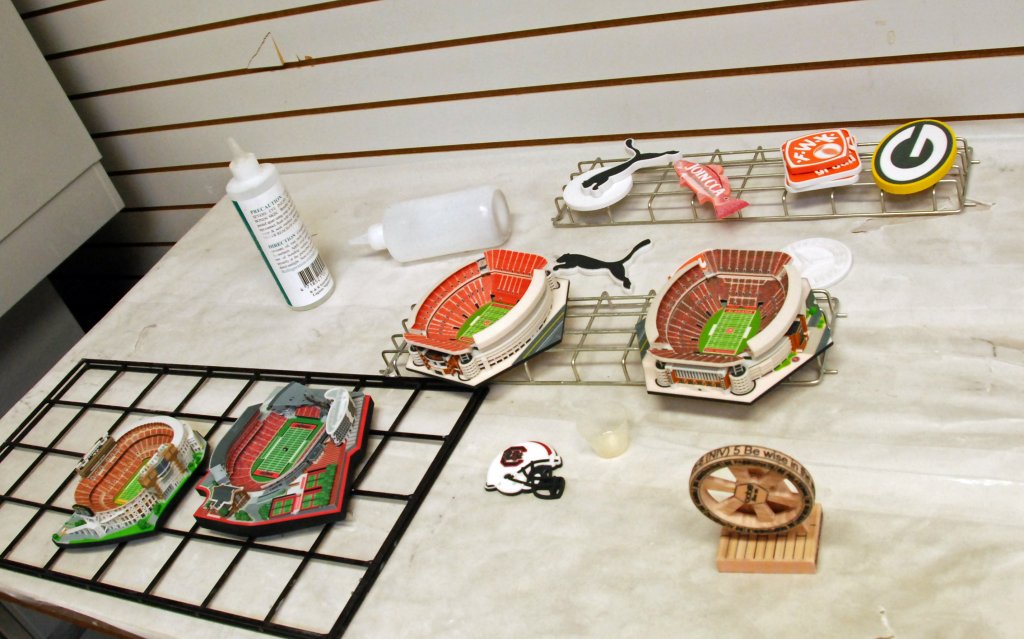
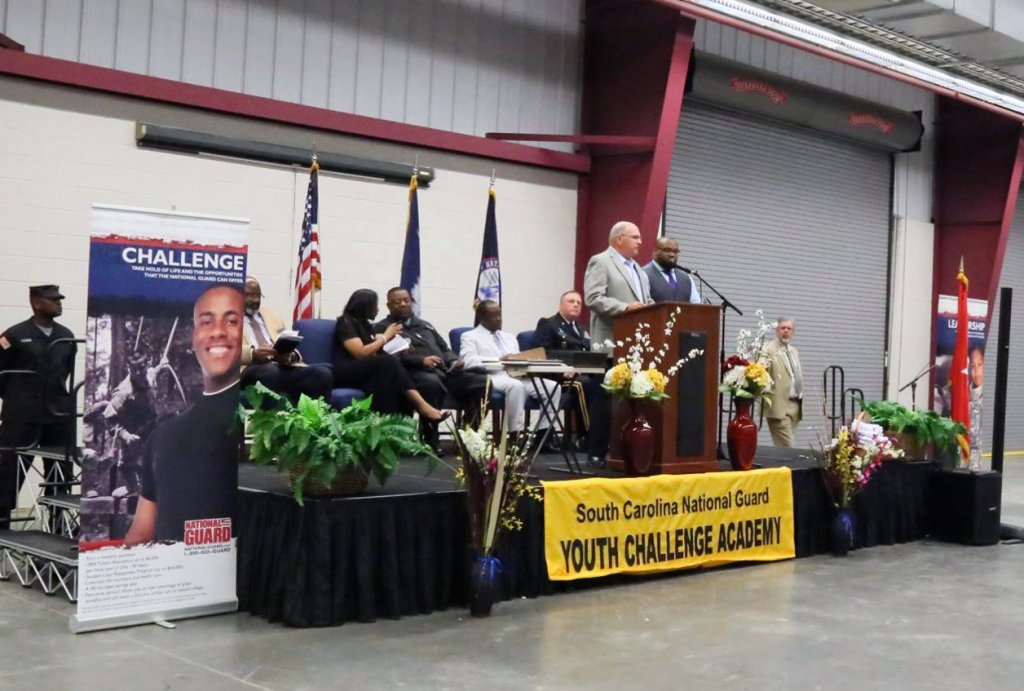


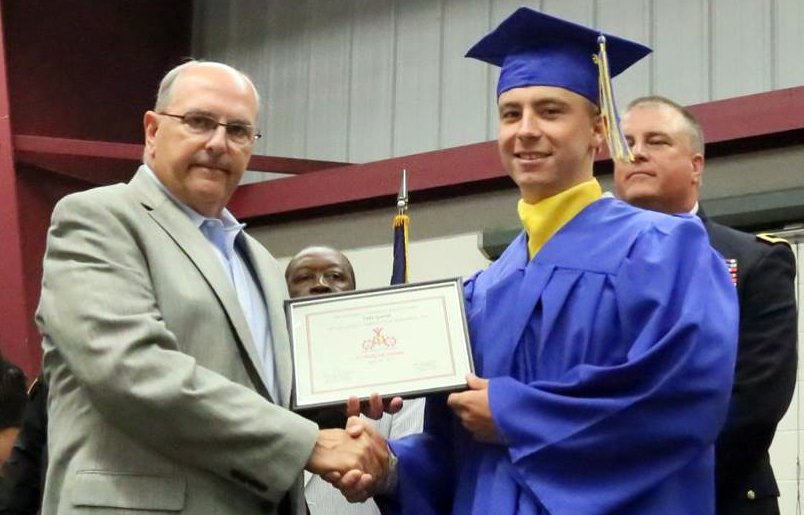
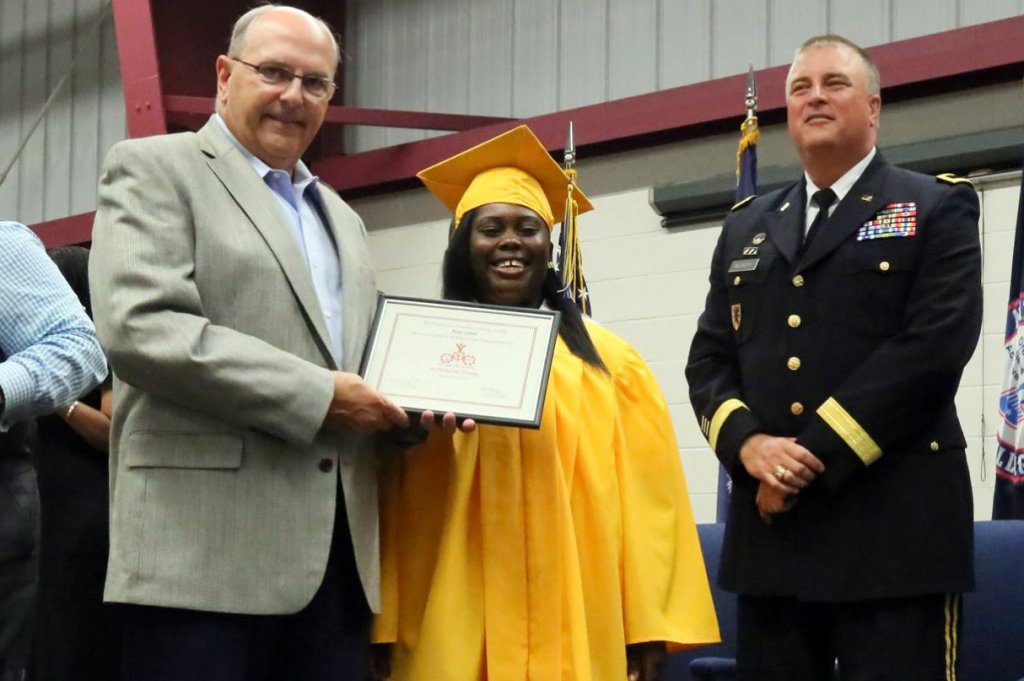

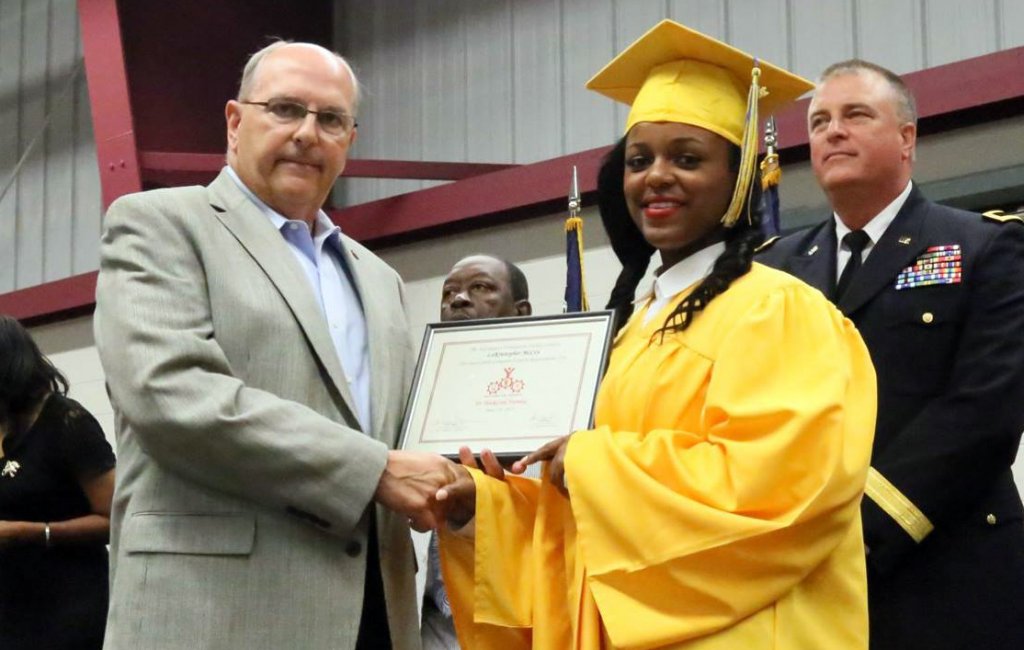
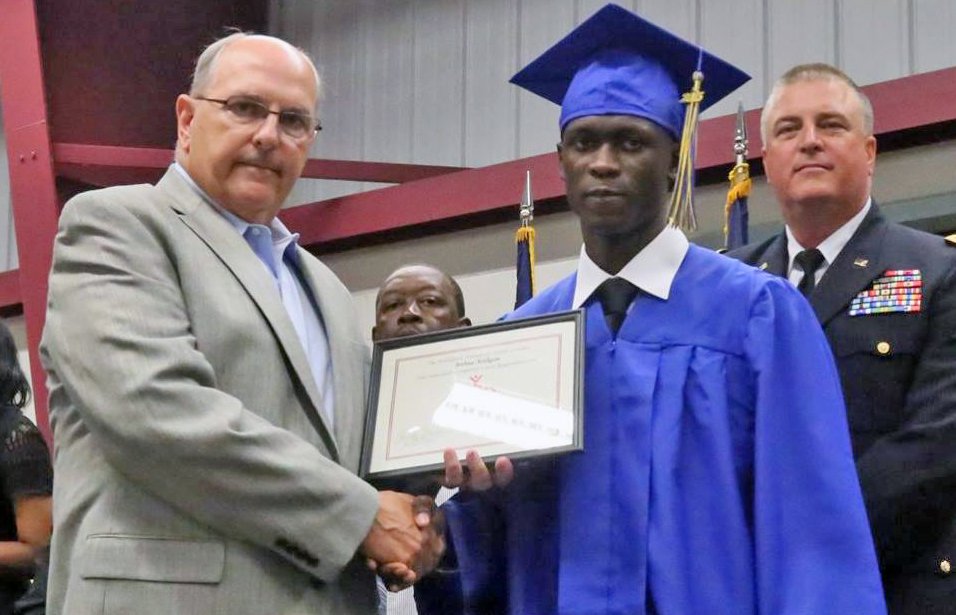
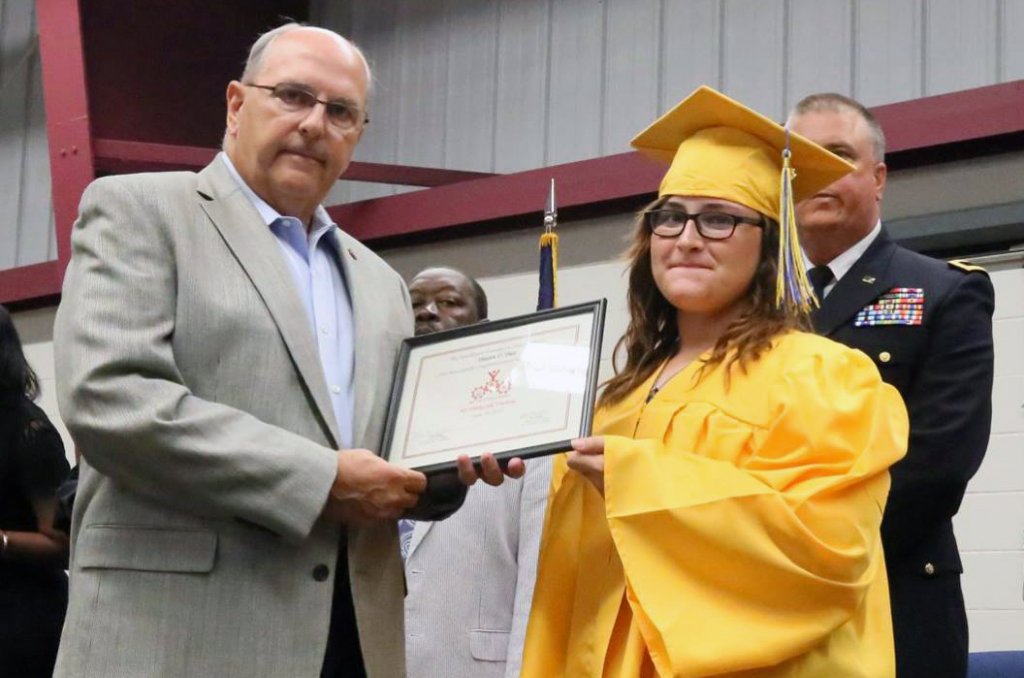
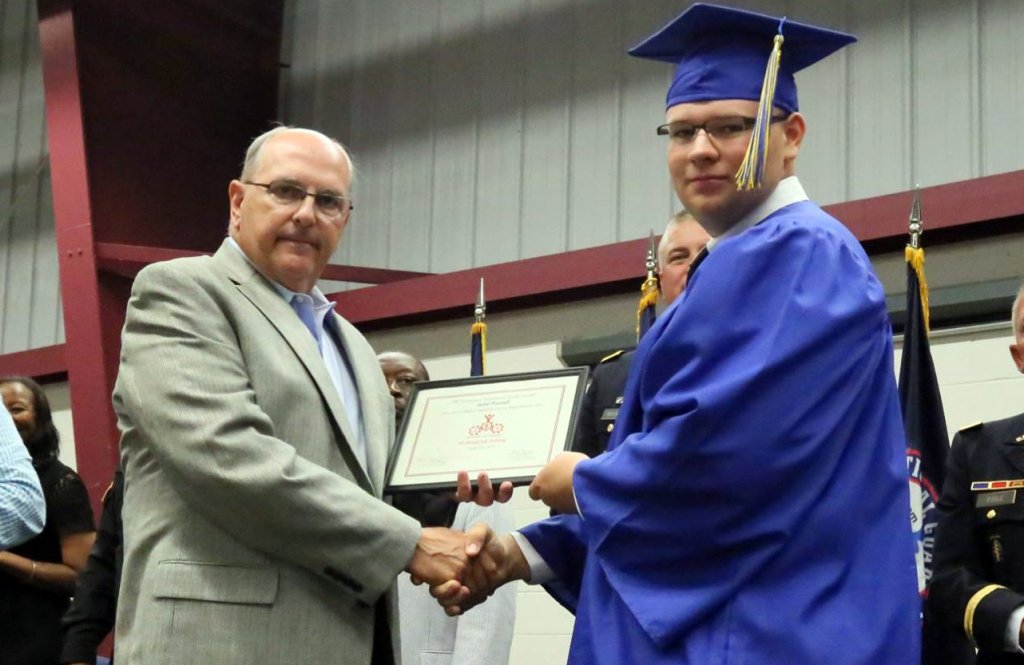
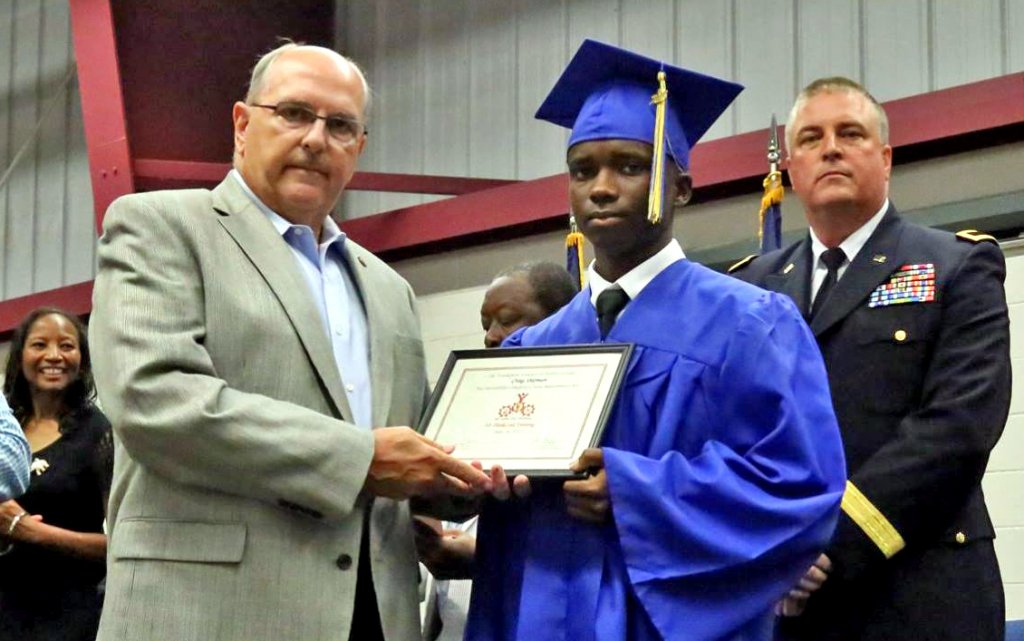
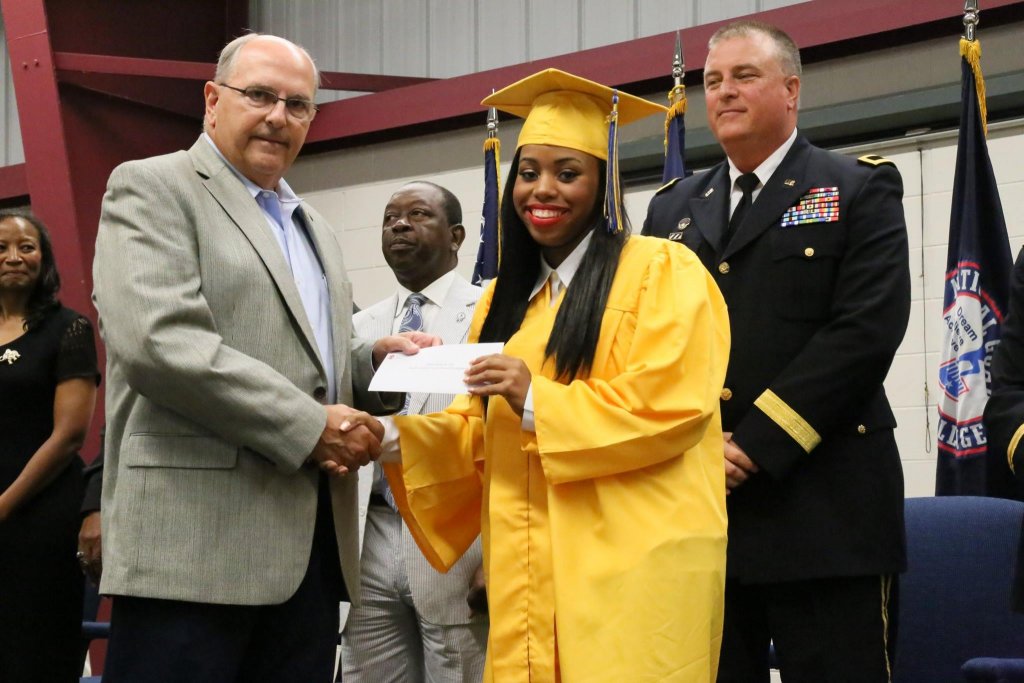
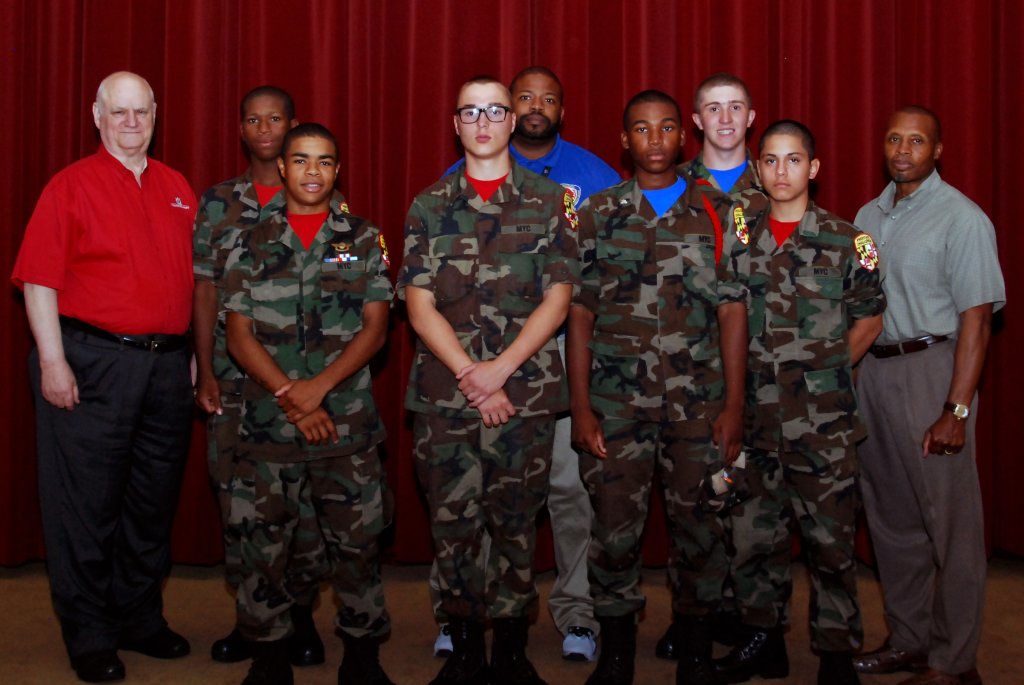
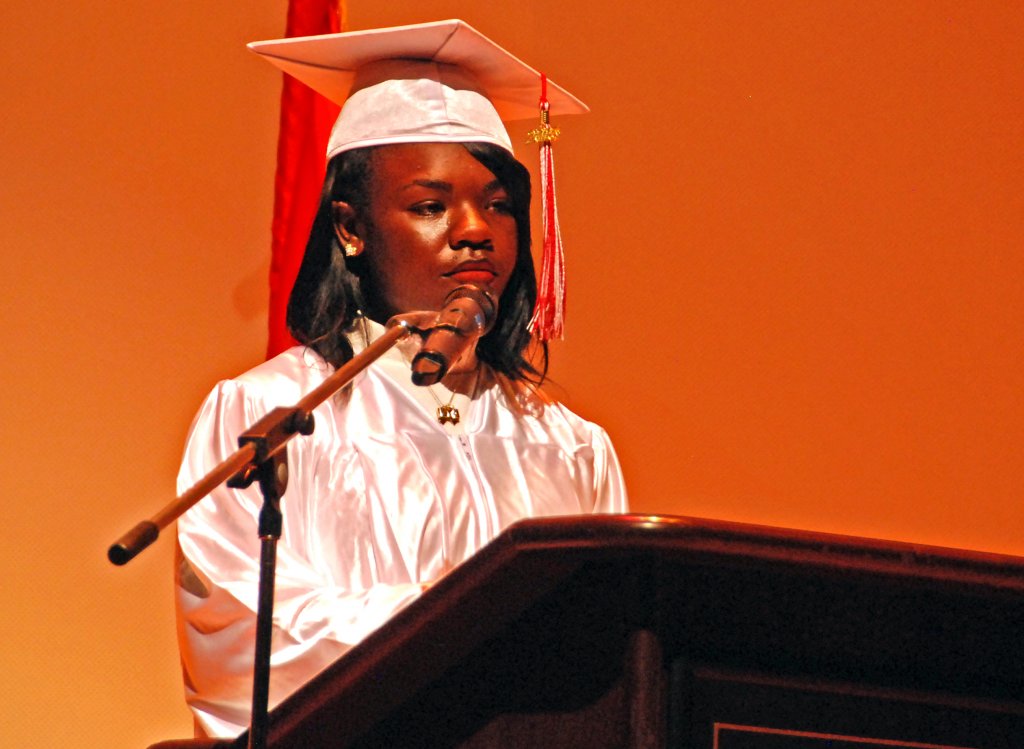
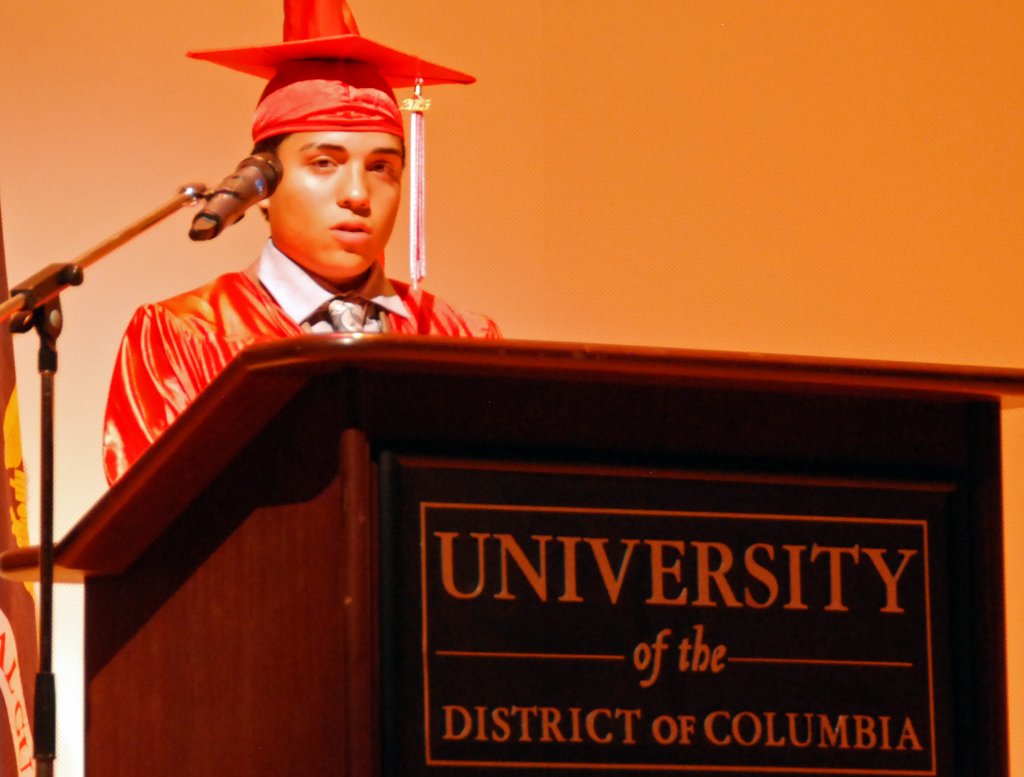
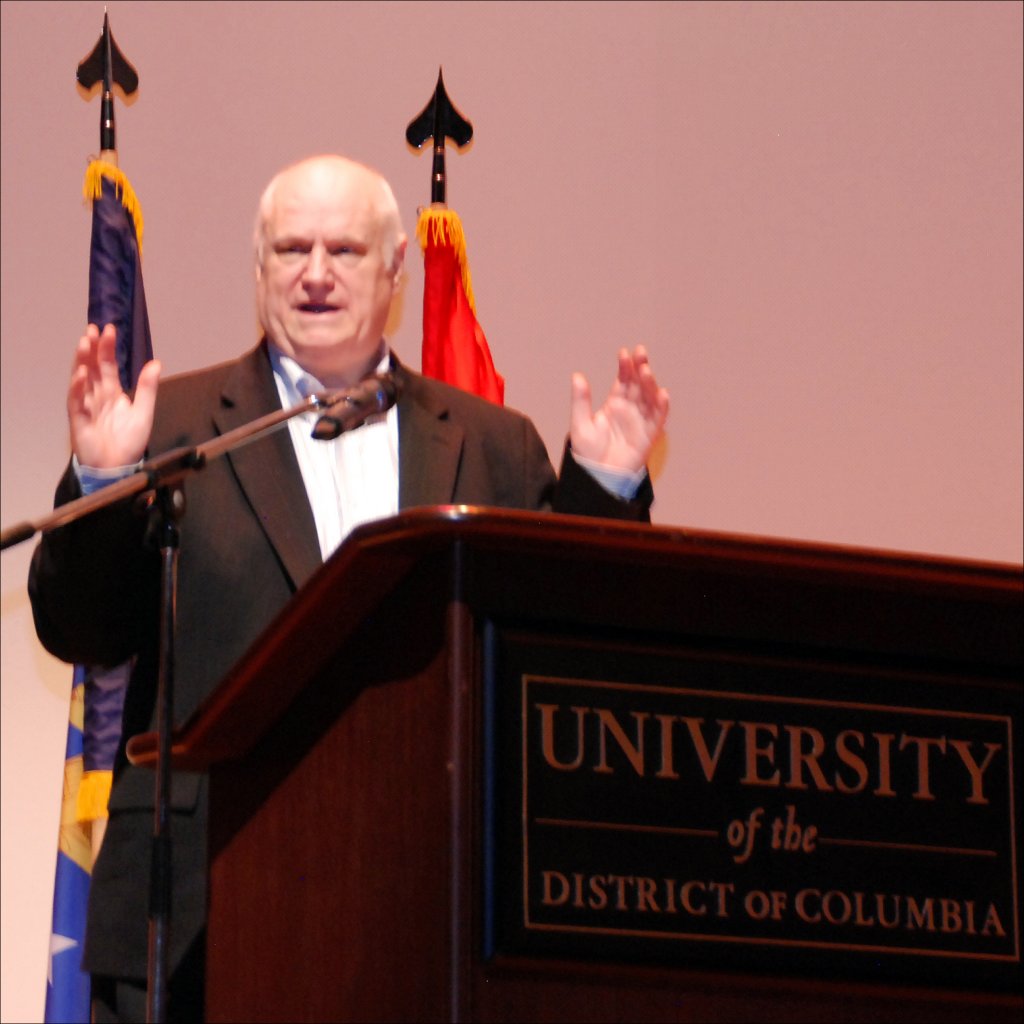
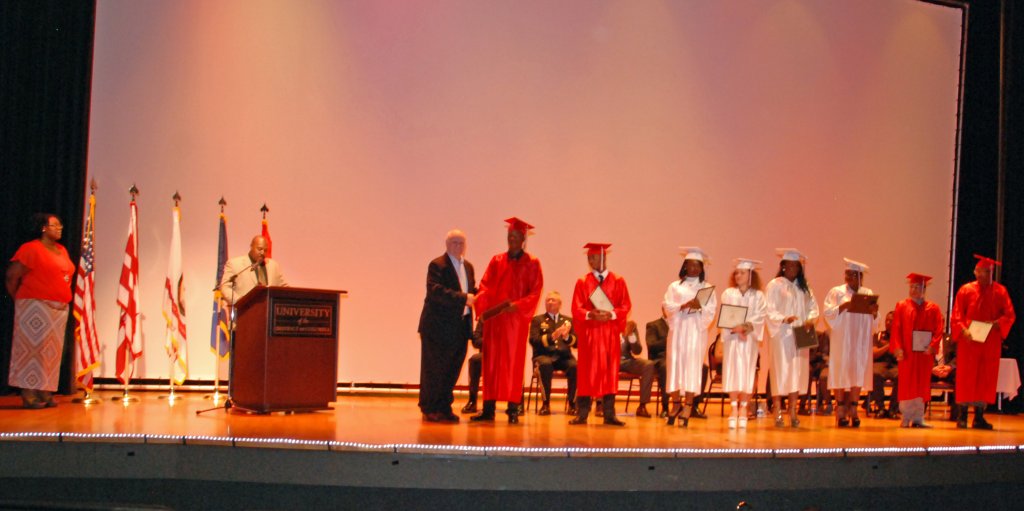
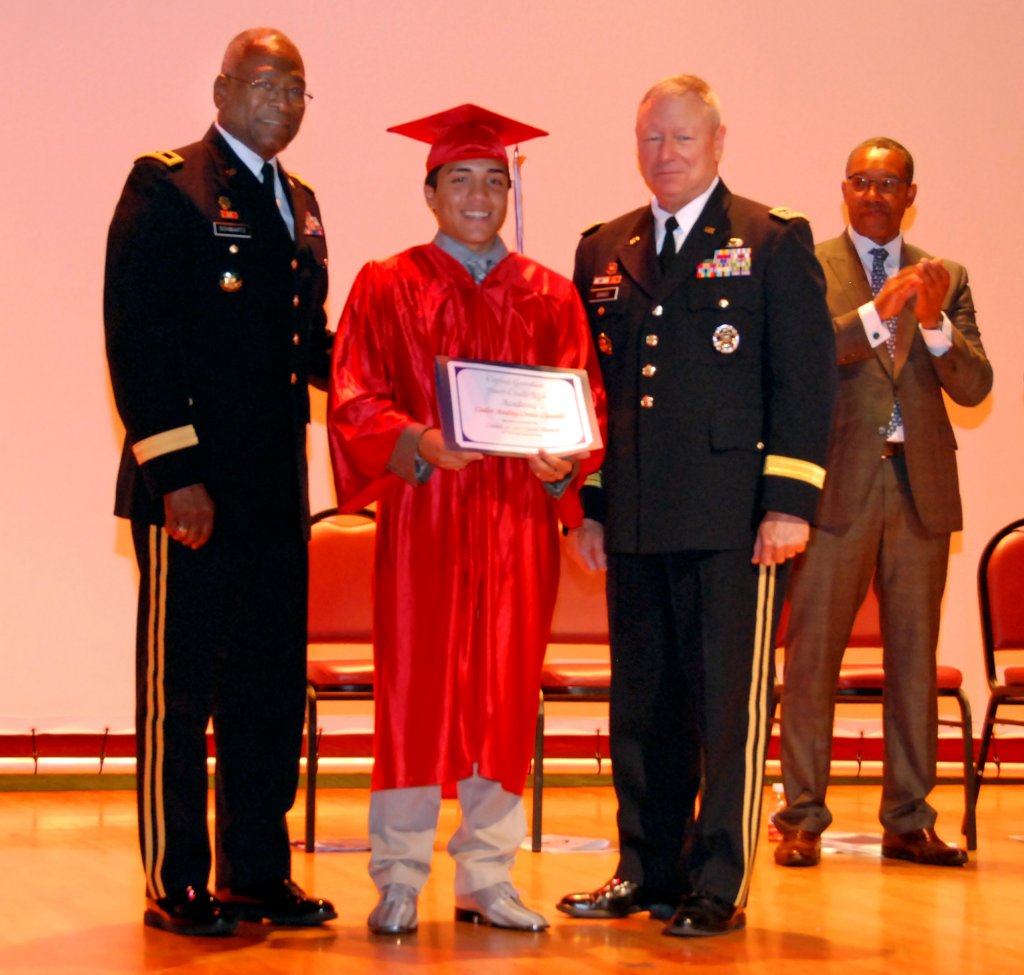

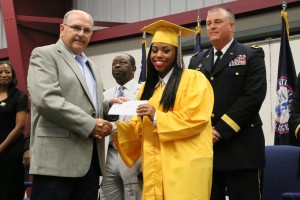
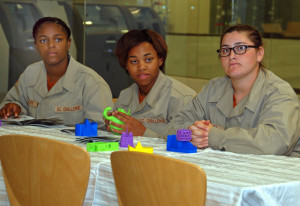

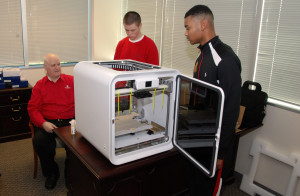
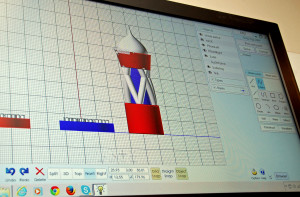
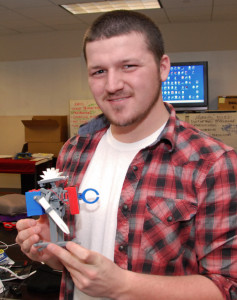 Dylan Foster, who plans to be an artist, took full advantage of the new tools in our Lab. With a three-color printer available for the first time, he designed several red, white and blue creations, including a beautifully detailed chess piece. For his robot project, he made a battery holder that’s simpler and works better than the one our Director of Instruction, Tom Meeks, had devised. Our classes also taught him to stay focused on his goals. “I used to give up a whole lot easier,” he said. The South Carolina Youth ChalleNGe Academy graduate, who had never been so far from home before, said he “met a lot of good people” and gained valuable skills during the week in the 3D ThinkLink Lab. “It’s worth the time you put into it,” Dylan said. “You can learn a lot and do a lot.”
Dylan Foster, who plans to be an artist, took full advantage of the new tools in our Lab. With a three-color printer available for the first time, he designed several red, white and blue creations, including a beautifully detailed chess piece. For his robot project, he made a battery holder that’s simpler and works better than the one our Director of Instruction, Tom Meeks, had devised. Our classes also taught him to stay focused on his goals. “I used to give up a whole lot easier,” he said. The South Carolina Youth ChalleNGe Academy graduate, who had never been so far from home before, said he “met a lot of good people” and gained valuable skills during the week in the 3D ThinkLink Lab. “It’s worth the time you put into it,” Dylan said. “You can learn a lot and do a lot.”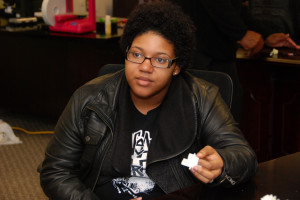 “Frustration was a big problem for me,” Kamie Moody admitted. Our 3D ThinkLink classes became her “outlet” from the daily pressures at Freestate ChalleNGe Academy. “Every Monday, when I had 3D, I was excited,” she recalled. Kamie appreciated the chance to learn about CAD (Computer-Aided Design) software because it will help her pursue a career in architecture. Experimenting with Moment of Inspiration’s new features brought out her creative talent. On a small scale, her designs look like jewelry, but on a large scale, they could be futuristic buildings. “The 3D ThinkLink program basically solidified what I already knew; that designing is something that I really want to do,” she said.
“Frustration was a big problem for me,” Kamie Moody admitted. Our 3D ThinkLink classes became her “outlet” from the daily pressures at Freestate ChalleNGe Academy. “Every Monday, when I had 3D, I was excited,” she recalled. Kamie appreciated the chance to learn about CAD (Computer-Aided Design) software because it will help her pursue a career in architecture. Experimenting with Moment of Inspiration’s new features brought out her creative talent. On a small scale, her designs look like jewelry, but on a large scale, they could be futuristic buildings. “The 3D ThinkLink program basically solidified what I already knew; that designing is something that I really want to do,” she said.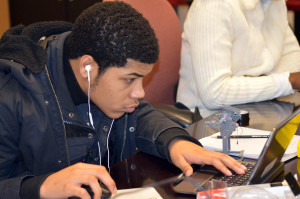
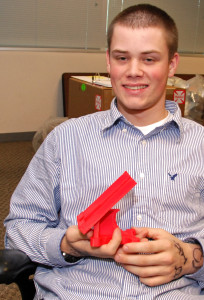 Our training might turn out to be a life-changing experience for Caleb Dujmovic. He was one of the top students in his 3D ThinkLink class at Freestate ChalleNGe Academy, where he said he enjoyed learning to make things for his family and friends. His favorite lab project was making a cellphone stand because it incorporated everything he’d learned during the week about Moment of Inspiration’s new features. Caleb applies the problem-solving skills we’ve taught him to his current job in the construction business, but he’s set his sights on a bio-engineering career. It’s something he’d never considered until he visited the
Our training might turn out to be a life-changing experience for Caleb Dujmovic. He was one of the top students in his 3D ThinkLink class at Freestate ChalleNGe Academy, where he said he enjoyed learning to make things for his family and friends. His favorite lab project was making a cellphone stand because it incorporated everything he’d learned during the week about Moment of Inspiration’s new features. Caleb applies the problem-solving skills we’ve taught him to his current job in the construction business, but he’s set his sights on a bio-engineering career. It’s something he’d never considered until he visited the 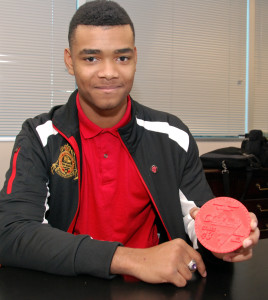 Nicknamed “Highspeed” by the staff at Capital Guardian ChalleNGe Academy because he was often ahead of his classmates, Christopher Coleman was first exposed to 3D design software in 8th grade. Later, he “really got hooked on 3D” in the Hirshhorn Museum’s ARTLAB+ program. Our 3D ThinkLink classes taught him how to use new design tools and printers he’d never tried before. The self-described “loner” says he also learned to ask for help and work with others. “This program particularly helped me with a lot of my faults – things that I’ve got to improve,” Christopher said. “I learned to be more humble … There’s people that know stuff that I don’t know, and they don’t know things that I know.”
Nicknamed “Highspeed” by the staff at Capital Guardian ChalleNGe Academy because he was often ahead of his classmates, Christopher Coleman was first exposed to 3D design software in 8th grade. Later, he “really got hooked on 3D” in the Hirshhorn Museum’s ARTLAB+ program. Our 3D ThinkLink classes taught him how to use new design tools and printers he’d never tried before. The self-described “loner” says he also learned to ask for help and work with others. “This program particularly helped me with a lot of my faults – things that I’ve got to improve,” Christopher said. “I learned to be more humble … There’s people that know stuff that I don’t know, and they don’t know things that I know.”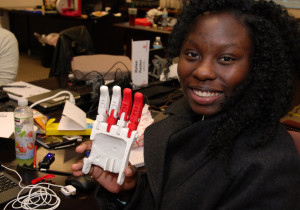 At first, Sherquana Adams didn’t want to sign up for our class at South Carolina Youth ChalleNGe Academy because she thought 3D printing was “for geeks.” But the more she learned about the many ways this technology is being used, the more interested she became. Sherquana, who aspires to be a surgical technician, was amazed by the medical applications for 3D printing. She thought it was “really cool” to put together 3D-printed pieces to make a kid-size prosthetic hand during Lab Week. “I now have a way to express myself,” she said. In just a few months, her opinion of 3D printing has shifted 180 degrees: “This is not for geeks, this is for anybody!”
At first, Sherquana Adams didn’t want to sign up for our class at South Carolina Youth ChalleNGe Academy because she thought 3D printing was “for geeks.” But the more she learned about the many ways this technology is being used, the more interested she became. Sherquana, who aspires to be a surgical technician, was amazed by the medical applications for 3D printing. She thought it was “really cool” to put together 3D-printed pieces to make a kid-size prosthetic hand during Lab Week. “I now have a way to express myself,” she said. In just a few months, her opinion of 3D printing has shifted 180 degrees: “This is not for geeks, this is for anybody!”